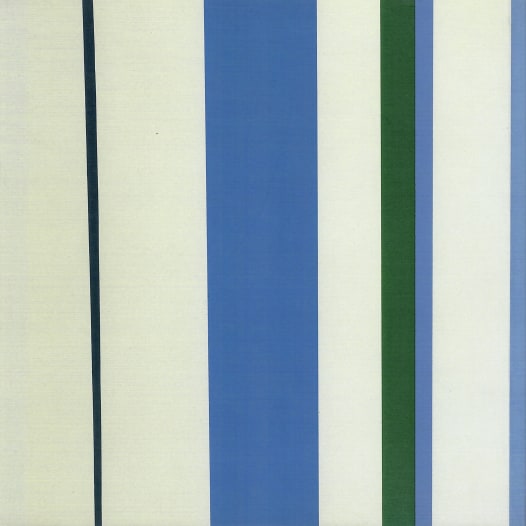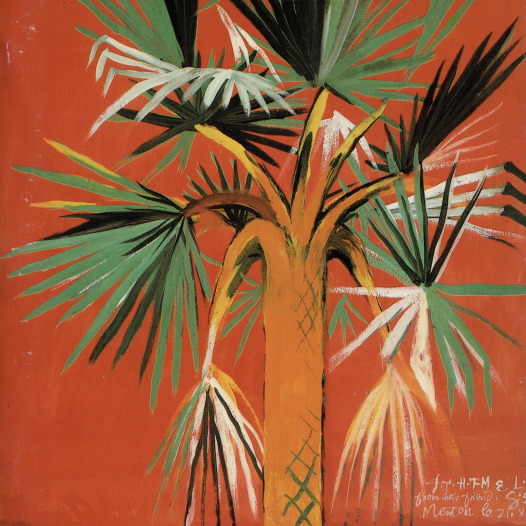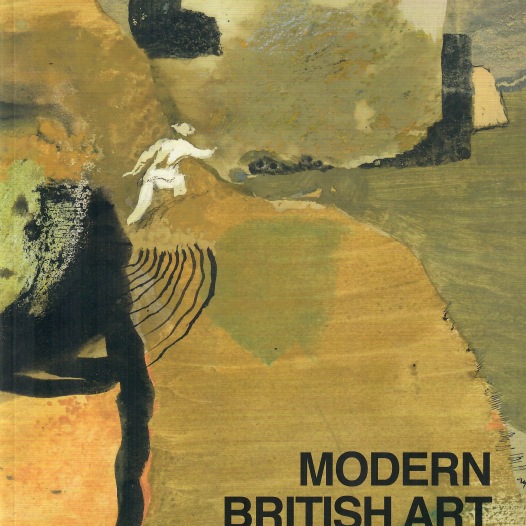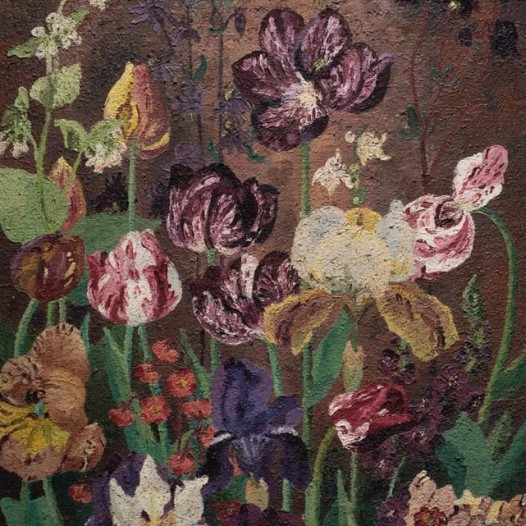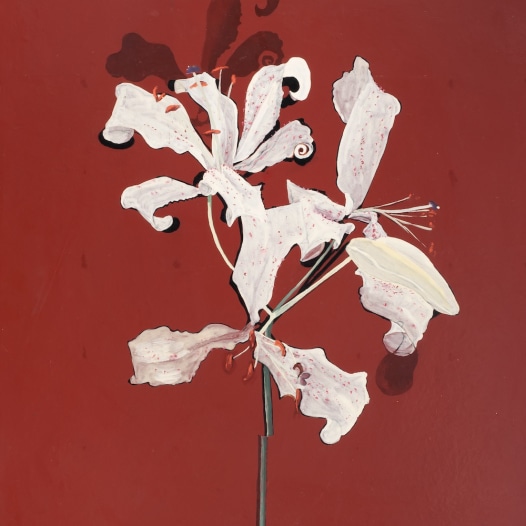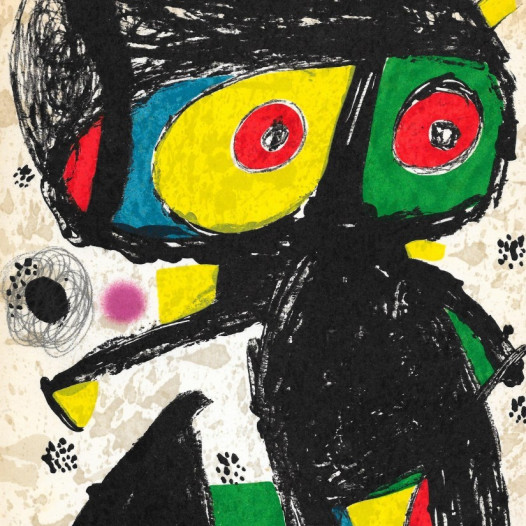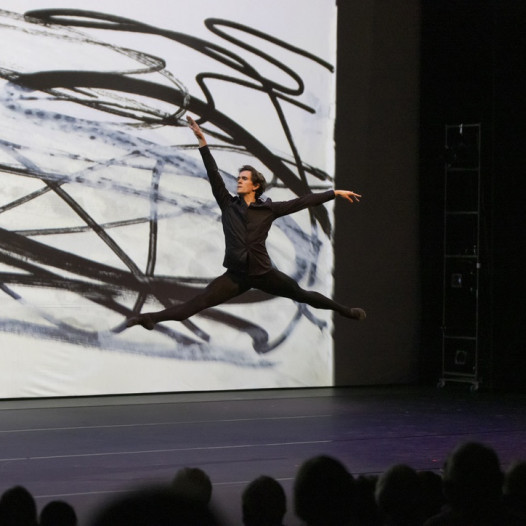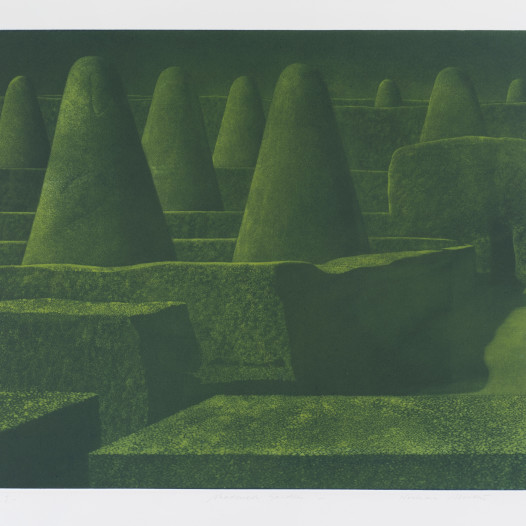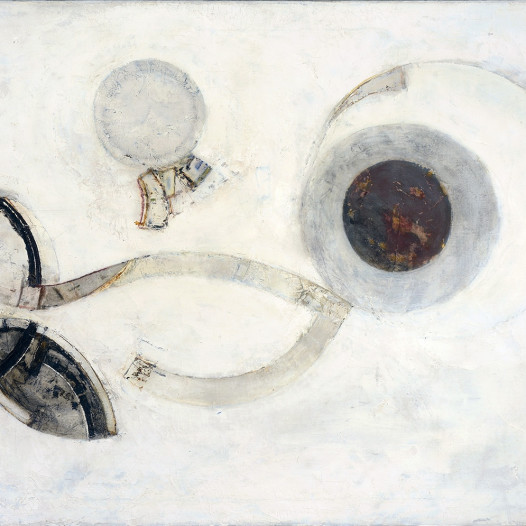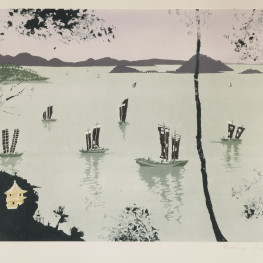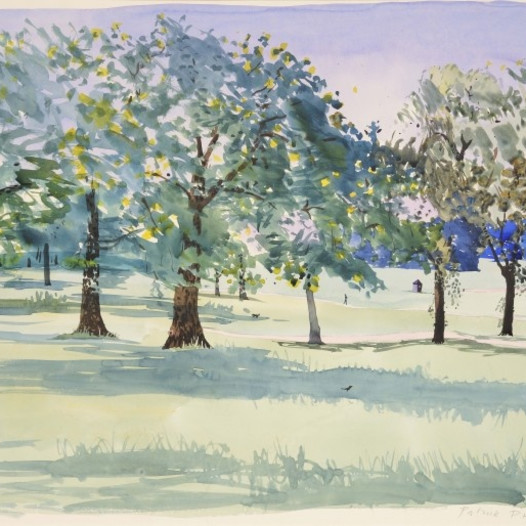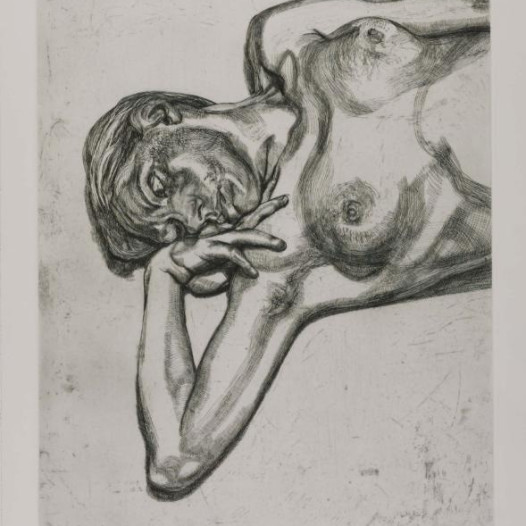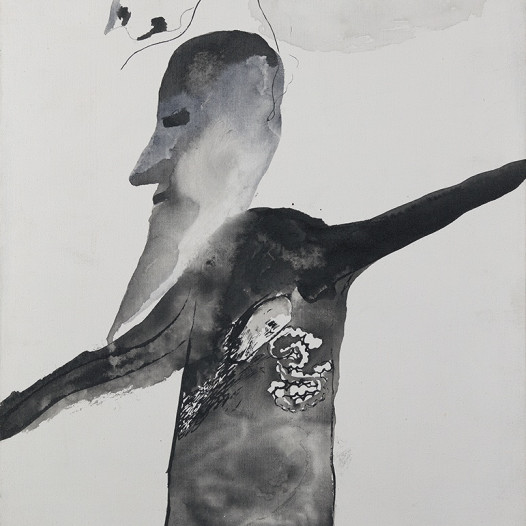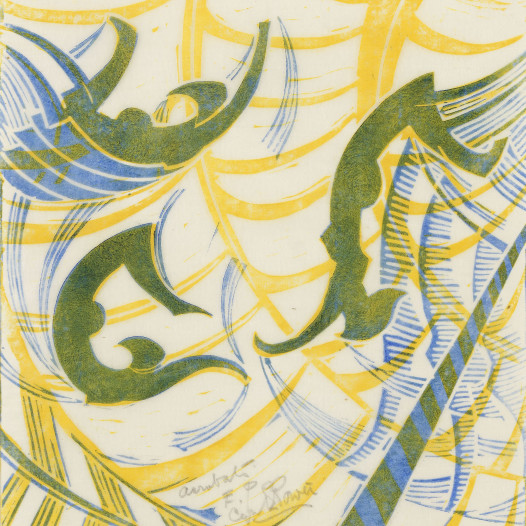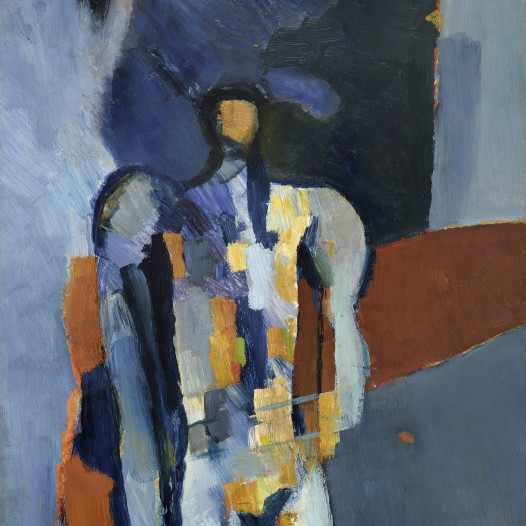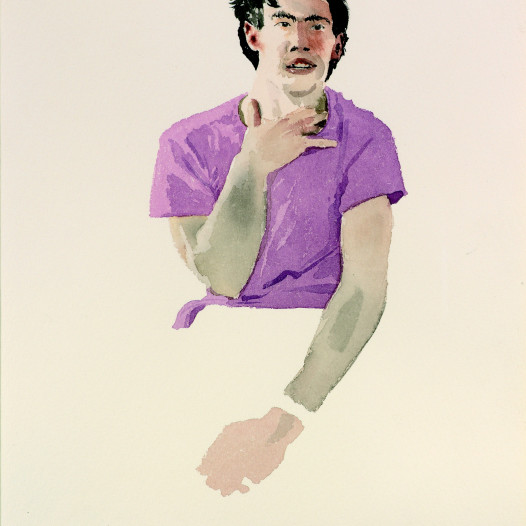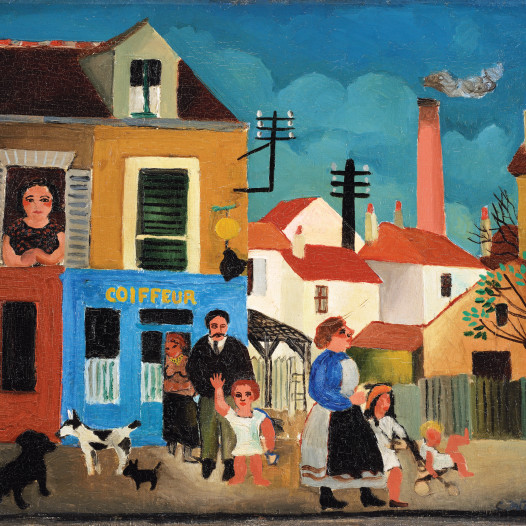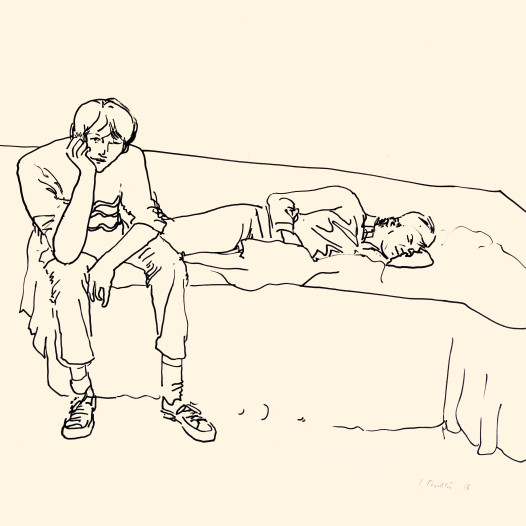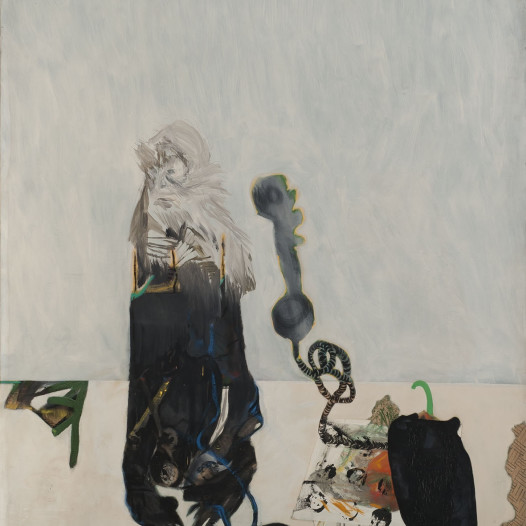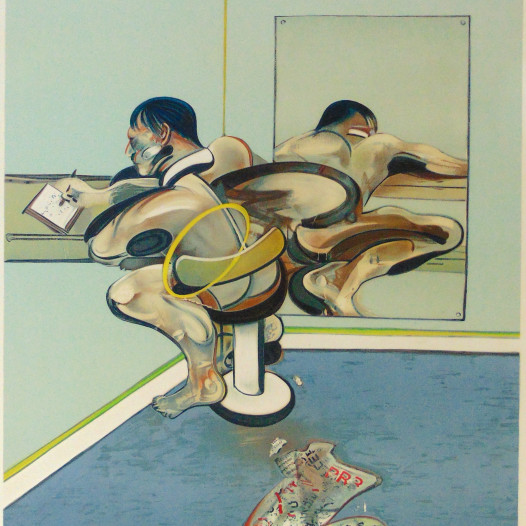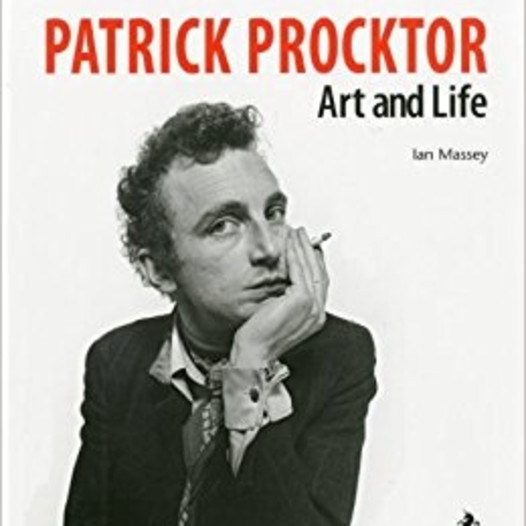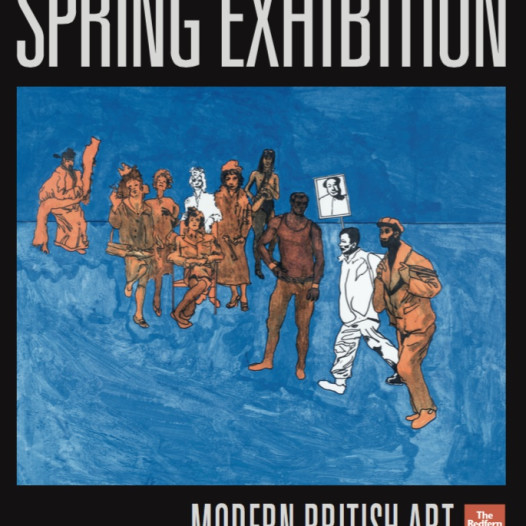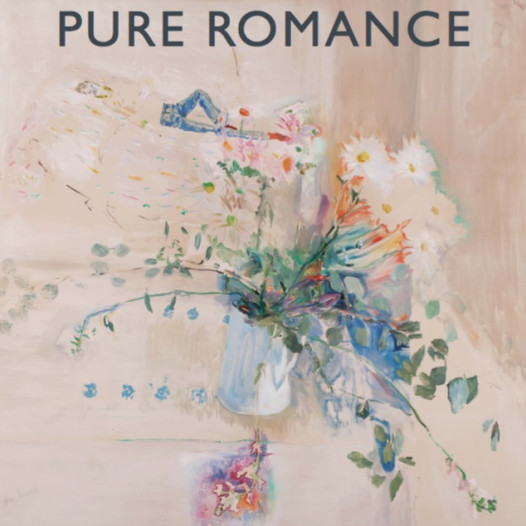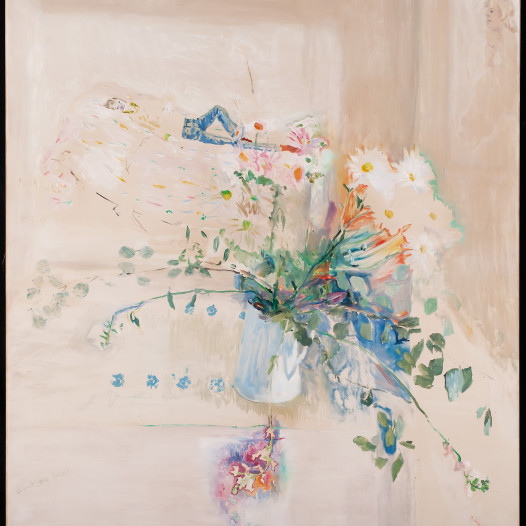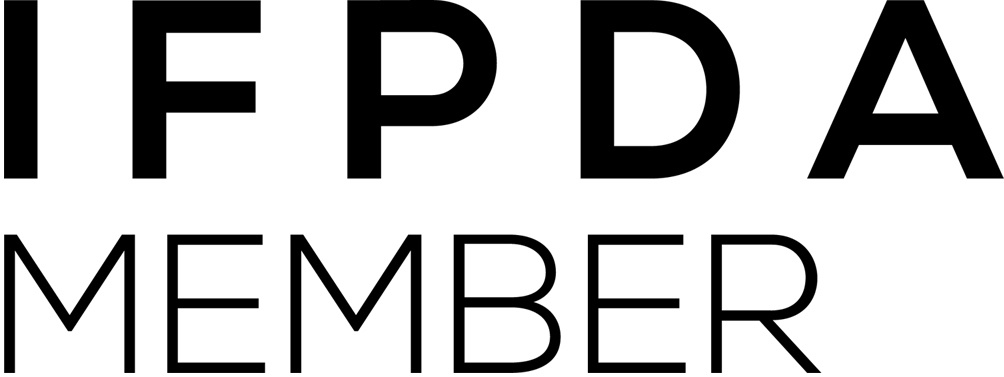Patrick Procktor RA
1936–2003Patrick Procktor was part of an influential group of British artists in the 1960s alongside David Hockney, and won the early support of Keith Vaughan and Bryan Robertson. His early paintings were dynamic, abstract depictions of the male nude, before he established himself as one of the leading watercolourists of his generation from the 1970s onwards. He was born in Dublin in 1936, and raised in London, taught by Kyffin Williams at Highgate School. At 21, he had a still life painting included in the Redfern's Summer Exhibition. This encouraged him to enroll at the Slade in 1958, where he became President of the Slade Society, and befriended Roger Cook, Mario Dubsky and Philip Prowse. After graduating, his paintings were seen by Bryan Robertson, Director of the Whitechapel, who helped secure a sell-out solo show for Procktor at the Redfern in 1963. Often depicting male nudes, the work focused on the physical performance of painting. The figures were deformed, affected by his time as an art therapist working with paralysed patients, of whom Procktor commented: "I came to gradually accept their physical deformities [...] in my paintings I want to convey the feeling that such distortions, far from being grotesque, are part of life and therefore acceptable". In 1964, these paintings were shown in The New Generation at the Whitechapel, a survey of twelve young artists (including Patrick Caulfield, Hockney, John Hoyland and Bridget Riley), which heralded a new, colourful era for British art.
Inspired by his Camberwell teaching colleague RB Kitaj, Procktor produced new oils that featured complex imagery, with biblical and political overtones, and monkeys as recurring motifs, which he exhibited in 1965 at the Redfern. These paintings failed to inspire the same level of acclaim that greeted his debut, and so the artist left England to take up a temporary teaching residency at Iowa State University. There, he met up with Hockney in Colorado, on a road-trip with Colin Self and Norman Stevens. Spending time with Hockney inspired Procktor to simplify his subjects. His work from this period was painted in thin acrylic washes, and this naturally led to his adoption of watercolour in 1967, a technique for which he would become famous. His first watercolours were especially distinctive for the elegant, elongated depiction of his sitters, recalling El Greco and Parmigianino. On a trip to New York, Procktor spent an evening taking drugs with Gervase Griffiths (his model and the object of his affections), Ossie Clark and Eric Emerson, which resulted in a series of vague, hallucinatory images. These formed part of his next show at the Redfern, consisting entirely of portraits of his friends, completed in watercolour on paper. His portrait of Cecil Beaton was purchased by Joan and Lester Avnet, who amassed a superb collection of twentieth-century drawings, including Braque, Chagall, Picasso and Schiele. Procktor was one of a small number of contemporary British artists in their collection, highlights from which were shown at the Museum of Modern Art, New York, in 1978.
After the premature death of Gervase Griffiths, Procktor spent much of his time travelling the world. He first visited India, and the landscapes he painted there were brought back and exhibited at the Redfern. These proved immensely popular, to the extent that Procktor was encouraged to make aquatint prints of a number of the watercolours. After painting trips to Morocco and Egypt, in 1980 Procktor became the first modern artist to visit China since the Cultural Revolution. The resulting landscapes were executed in both watercolour as well as aquatint, and once again received critical and commercial acclaim, when unveiled at the Redfern. In 1973, Procktor married his neighbour, Kirsten Benson. They had a son together, but the union was ended by Benson's sudden death in 1984. By the mid-1990s, despite election to the Royal Academy, Procktor had become depressed and an alcoholic. In 1999, a fire destroyed his Marylebone flat and much of his art, and after brief spells of incarceration and homelessness, his final years were spent painting simple still lifes in temporary council accommodation.
Since his death, there has been a resurgence of interest in Procktor. He has been included in a number of important group exhibitions organised by the Tate, such as Tate Britain's huge survey show of watercolourists, in 2011; in Glam! The Performance of Style at Tate Liverpool, in 2013; and in Queer British Art at Tate Britain, in 2017. He was the subject of a major monograph by Ian Massey, who curated a well-received retrospective at Huddersfield Art Gallery in 2012, in addition to a collaborative show (Patrick Procktor: The Last Romantic) between Arts University Bournemouth and The Redfern Gallery in 2016, while a near-sell-out show of works on paper was held at the Redfern in 2017. Palazzo Bentivoglio, Bologna also hosted an exhibition of Procktor's work titled A View from a Window in 2022.
Patrick Procktor's estate is represented by the Redfern Gallery.
Works
-
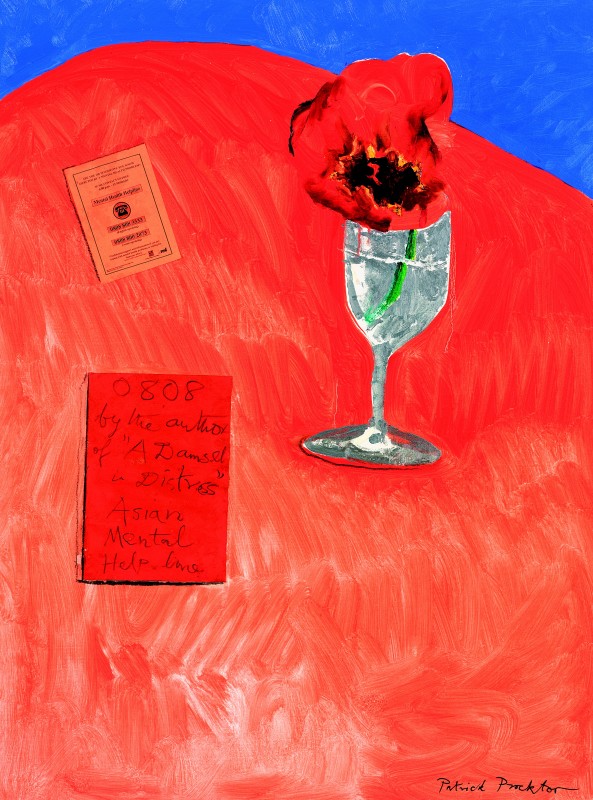 Patrick Procktor RAA Damsel in Distress, 2000Oil, charcoal, pastel and collage on canvas100 x 76 cmSigned lower right%3Cdiv%20class%3D%22artist%22%3E%3Cspan%20class%3D%22artist%22%3E%3Cstrong%3EPatrick%20Procktor%20RA%3C/strong%3E%3C/span%3E%3C/div%3E%0D%3Cdiv%20class%3D%22title%22%3E%3Cem%3EA%20Damsel%20in%20Distress%3C/em%3E%2C%202000%3C/div%3E%0D%3Cdiv%20class%3D%22signed_and_dated%22%3ESigned%20lower%20right%3C/div%3E%0D%3Cdiv%20class%3D%22medium%22%3EOil%2C%20charcoal%2C%20pastel%20and%20collage%20on%20canvas%3C/div%3E%0D%3Cdiv%20class%3D%22dimensions%22%3E100%20x%2076%20cm%3C/div%3E
Patrick Procktor RAA Damsel in Distress, 2000Oil, charcoal, pastel and collage on canvas100 x 76 cmSigned lower right%3Cdiv%20class%3D%22artist%22%3E%3Cspan%20class%3D%22artist%22%3E%3Cstrong%3EPatrick%20Procktor%20RA%3C/strong%3E%3C/span%3E%3C/div%3E%0D%3Cdiv%20class%3D%22title%22%3E%3Cem%3EA%20Damsel%20in%20Distress%3C/em%3E%2C%202000%3C/div%3E%0D%3Cdiv%20class%3D%22signed_and_dated%22%3ESigned%20lower%20right%3C/div%3E%0D%3Cdiv%20class%3D%22medium%22%3EOil%2C%20charcoal%2C%20pastel%20and%20collage%20on%20canvas%3C/div%3E%0D%3Cdiv%20class%3D%22dimensions%22%3E100%20x%2076%20cm%3C/div%3E -
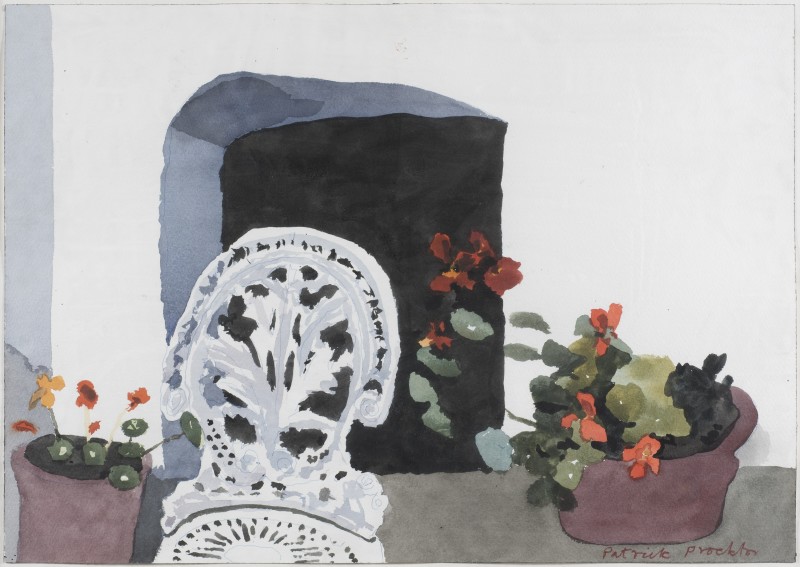 Patrick Procktor RASuna's Yard, 1998Watercolour on paper35 x 50 cmSigned lower right%3Cdiv%20class%3D%22artist%22%3E%3Cspan%20class%3D%22artist%22%3E%3Cstrong%3EPatrick%20Procktor%20RA%3C/strong%3E%3C/span%3E%3C/div%3E%0D%3Cdiv%20class%3D%22title%22%3E%3Cem%3ESuna%27s%20Yard%3C/em%3E%2C%201998%3C/div%3E%0D%3Cdiv%20class%3D%22signed_and_dated%22%3ESigned%20lower%20right%3C/div%3E%0D%3Cdiv%20class%3D%22medium%22%3EWatercolour%20on%20paper%3C/div%3E%0D%3Cdiv%20class%3D%22dimensions%22%3E35%20x%2050%20cm%3C/div%3E
Patrick Procktor RASuna's Yard, 1998Watercolour on paper35 x 50 cmSigned lower right%3Cdiv%20class%3D%22artist%22%3E%3Cspan%20class%3D%22artist%22%3E%3Cstrong%3EPatrick%20Procktor%20RA%3C/strong%3E%3C/span%3E%3C/div%3E%0D%3Cdiv%20class%3D%22title%22%3E%3Cem%3ESuna%27s%20Yard%3C/em%3E%2C%201998%3C/div%3E%0D%3Cdiv%20class%3D%22signed_and_dated%22%3ESigned%20lower%20right%3C/div%3E%0D%3Cdiv%20class%3D%22medium%22%3EWatercolour%20on%20paper%3C/div%3E%0D%3Cdiv%20class%3D%22dimensions%22%3E35%20x%2050%20cm%3C/div%3E -
 Patrick Procktor RABoats, Luxor, 1996Watercolour on paper62 x 47 cmSigned and dated lower right%3Cdiv%20class%3D%22artist%22%3E%3Cspan%20class%3D%22artist%22%3E%3Cstrong%3EPatrick%20Procktor%20RA%3C/strong%3E%3C/span%3E%3C/div%3E%0D%3Cdiv%20class%3D%22title%22%3E%3Cem%3EBoats%2C%20Luxor%3C/em%3E%2C%201996%3C/div%3E%0D%3Cdiv%20class%3D%22signed_and_dated%22%3ESigned%20and%20dated%20lower%20right%3C/div%3E%0D%3Cdiv%20class%3D%22medium%22%3EWatercolour%20on%20paper%3C/div%3E%0D%3Cdiv%20class%3D%22dimensions%22%3E62%20x%2047%20cm%3C/div%3E
Patrick Procktor RABoats, Luxor, 1996Watercolour on paper62 x 47 cmSigned and dated lower right%3Cdiv%20class%3D%22artist%22%3E%3Cspan%20class%3D%22artist%22%3E%3Cstrong%3EPatrick%20Procktor%20RA%3C/strong%3E%3C/span%3E%3C/div%3E%0D%3Cdiv%20class%3D%22title%22%3E%3Cem%3EBoats%2C%20Luxor%3C/em%3E%2C%201996%3C/div%3E%0D%3Cdiv%20class%3D%22signed_and_dated%22%3ESigned%20and%20dated%20lower%20right%3C/div%3E%0D%3Cdiv%20class%3D%22medium%22%3EWatercolour%20on%20paper%3C/div%3E%0D%3Cdiv%20class%3D%22dimensions%22%3E62%20x%2047%20cm%3C/div%3E -
 Patrick Procktor RAThe Nile, 1996Watercolour and charcoal on paper29 x 21 cmSigned and dated lower right%3Cdiv%20class%3D%22artist%22%3E%3Cspan%20class%3D%22artist%22%3E%3Cstrong%3EPatrick%20Procktor%20RA%3C/strong%3E%3C/span%3E%3C/div%3E%0D%3Cdiv%20class%3D%22title%22%3E%3Cem%3EThe%20Nile%3C/em%3E%2C%201996%3C/div%3E%0D%3Cdiv%20class%3D%22signed_and_dated%22%3ESigned%20and%20dated%20lower%20right%3C/div%3E%0D%3Cdiv%20class%3D%22medium%22%3EWatercolour%20and%20charcoal%20on%20paper%3C/div%3E%0D%3Cdiv%20class%3D%22dimensions%22%3E29%20x%2021%20cm%3C/div%3E
Patrick Procktor RAThe Nile, 1996Watercolour and charcoal on paper29 x 21 cmSigned and dated lower right%3Cdiv%20class%3D%22artist%22%3E%3Cspan%20class%3D%22artist%22%3E%3Cstrong%3EPatrick%20Procktor%20RA%3C/strong%3E%3C/span%3E%3C/div%3E%0D%3Cdiv%20class%3D%22title%22%3E%3Cem%3EThe%20Nile%3C/em%3E%2C%201996%3C/div%3E%0D%3Cdiv%20class%3D%22signed_and_dated%22%3ESigned%20and%20dated%20lower%20right%3C/div%3E%0D%3Cdiv%20class%3D%22medium%22%3EWatercolour%20and%20charcoal%20on%20paper%3C/div%3E%0D%3Cdiv%20class%3D%22dimensions%22%3E29%20x%2021%20cm%3C/div%3E -
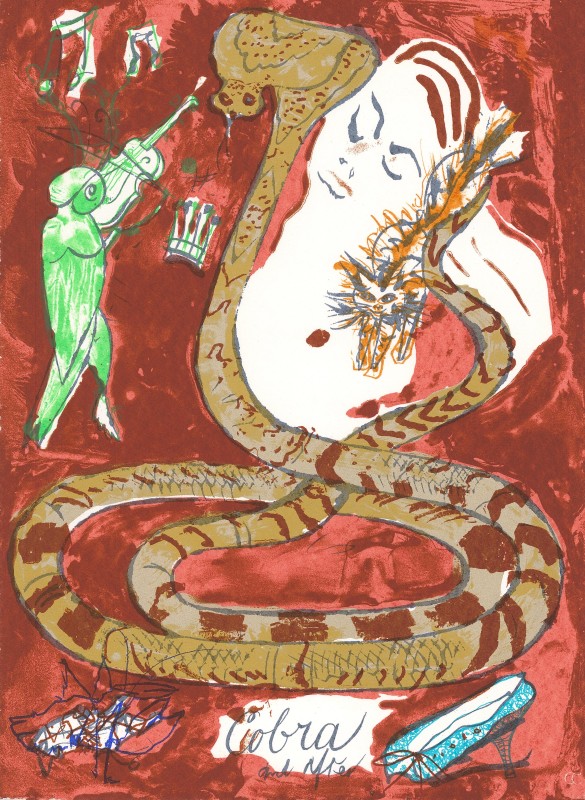 Patrick Procktor RACobra and After, 1991Screenprint49 x 34.5 cm
Patrick Procktor RACobra and After, 1991Screenprint49 x 34.5 cm
Signed and numbered
From an edition of 50 impressions£500 unframed%3Cdiv%20class%3D%22artist%22%3E%3Cspan%20class%3D%22artist%22%3E%3Cstrong%3EPatrick%20Procktor%20RA%3C%2Fstrong%3E%3C%2Fspan%3E%3C%2Fdiv%3E%0D%3Cdiv%20class%3D%22title%22%3E%3Cem%3ECobra%20and%20After%3C%2Fem%3E%2C%201991%3C%2Fdiv%3E%0D%3Cdiv%20class%3D%22signed_and_dated%22%3E%C2%A3500%20unframed%3C%2Fdiv%3E%0D%3Cdiv%20class%3D%22medium%22%3EScreenprint%20%3C%2Fdiv%3E%0D%3Cdiv%20class%3D%22dimensions%22%3E49%20x%2034.5%20cm%3Cbr%20%2F%3E%0ASigned%20and%20numbered%3Cbr%20%2F%3E%0AFrom%20an%20edition%20of%2050%20impressions%20%3C%2Fdiv%3E -
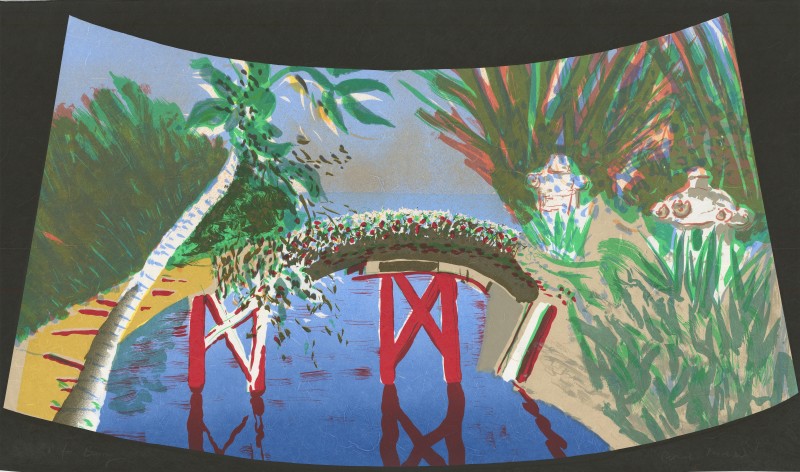 Patrick Procktor RAKatsura, Kyoto, 1991Screenprint74 x 125 cmFrom the edition of 75 impressionsSigned and numbered%3Cdiv%20class%3D%22artist%22%3E%3Cspan%20class%3D%22artist%22%3E%3Cstrong%3EPatrick%20Procktor%20RA%3C/strong%3E%3C/span%3E%3C/div%3E%0D%3Cdiv%20class%3D%22title%22%3E%3Cem%3EKatsura%2C%20Kyoto%3C/em%3E%2C%201991%3C/div%3E%0D%3Cdiv%20class%3D%22signed_and_dated%22%3ESigned%20and%20numbered%3C/div%3E%0D%3Cdiv%20class%3D%22medium%22%3EScreenprint%3C/div%3E%0D%3Cdiv%20class%3D%22dimensions%22%3E74%20x%20125%20cm%3C/div%3E%0D%3Cdiv%20class%3D%22edition_details%22%3EFrom%20the%20edition%20of%2075%20impressions%3C/div%3E
Patrick Procktor RAKatsura, Kyoto, 1991Screenprint74 x 125 cmFrom the edition of 75 impressionsSigned and numbered%3Cdiv%20class%3D%22artist%22%3E%3Cspan%20class%3D%22artist%22%3E%3Cstrong%3EPatrick%20Procktor%20RA%3C/strong%3E%3C/span%3E%3C/div%3E%0D%3Cdiv%20class%3D%22title%22%3E%3Cem%3EKatsura%2C%20Kyoto%3C/em%3E%2C%201991%3C/div%3E%0D%3Cdiv%20class%3D%22signed_and_dated%22%3ESigned%20and%20numbered%3C/div%3E%0D%3Cdiv%20class%3D%22medium%22%3EScreenprint%3C/div%3E%0D%3Cdiv%20class%3D%22dimensions%22%3E74%20x%20125%20cm%3C/div%3E%0D%3Cdiv%20class%3D%22edition_details%22%3EFrom%20the%20edition%20of%2075%20impressions%3C/div%3E -
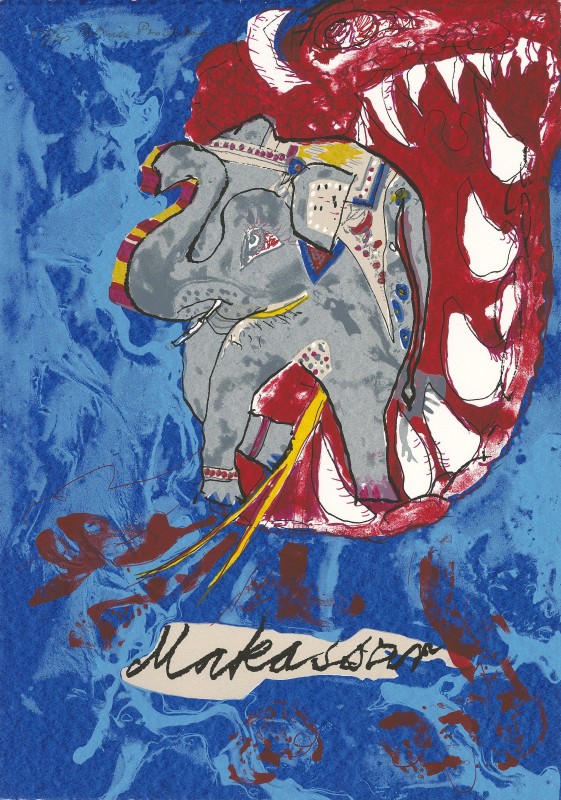 Patrick Procktor RAMakassar, 1991Screenprint49.1 x 34.5 cm
Patrick Procktor RAMakassar, 1991Screenprint49.1 x 34.5 cm
Signed and numbered
From an edition of 50 impressions£500 unframed%3Cdiv%20class%3D%22artist%22%3E%3Cspan%20class%3D%22artist%22%3E%3Cstrong%3EPatrick%20Procktor%20RA%3C%2Fstrong%3E%3C%2Fspan%3E%3C%2Fdiv%3E%0D%3Cdiv%20class%3D%22title%22%3E%3Cem%3EMakassar%3C%2Fem%3E%2C%201991%3C%2Fdiv%3E%0D%3Cdiv%20class%3D%22signed_and_dated%22%3E%C2%A3500%20unframed%3C%2Fdiv%3E%0D%3Cdiv%20class%3D%22medium%22%3EScreenprint%20%3C%2Fdiv%3E%0D%3Cdiv%20class%3D%22dimensions%22%3E49.1%20x%2034.5%20cm%3Cbr%20%2F%3E%0ASigned%20and%20numbered%3Cbr%20%2F%3E%0AFrom%20an%20edition%20of%2050%20impressions%20%3C%2Fdiv%3E -
 Patrick Procktor RACampanula, 1989Aquatint53 x 69 cm (image)From the edition of 75 impressionsSigned and numbered%3Cdiv%20class%3D%22artist%22%3E%3Cspan%20class%3D%22artist%22%3E%3Cstrong%3EPatrick%20Procktor%20RA%3C/strong%3E%3C/span%3E%3C/div%3E%0D%3Cdiv%20class%3D%22title%22%3E%3Cem%3ECampanula%3C/em%3E%2C%201989%3C/div%3E%0D%3Cdiv%20class%3D%22signed_and_dated%22%3ESigned%20and%20numbered%20%3C/div%3E%0D%3Cdiv%20class%3D%22medium%22%3EAquatint%3C/div%3E%0D%3Cdiv%20class%3D%22dimensions%22%3E53%20x%2069%20cm%20%28image%29%3C/div%3E%0D%3Cdiv%20class%3D%22edition_details%22%3EFrom%20the%20edition%20of%2075%20impressions%20%3C/div%3E
Patrick Procktor RACampanula, 1989Aquatint53 x 69 cm (image)From the edition of 75 impressionsSigned and numbered%3Cdiv%20class%3D%22artist%22%3E%3Cspan%20class%3D%22artist%22%3E%3Cstrong%3EPatrick%20Procktor%20RA%3C/strong%3E%3C/span%3E%3C/div%3E%0D%3Cdiv%20class%3D%22title%22%3E%3Cem%3ECampanula%3C/em%3E%2C%201989%3C/div%3E%0D%3Cdiv%20class%3D%22signed_and_dated%22%3ESigned%20and%20numbered%20%3C/div%3E%0D%3Cdiv%20class%3D%22medium%22%3EAquatint%3C/div%3E%0D%3Cdiv%20class%3D%22dimensions%22%3E53%20x%2069%20cm%20%28image%29%3C/div%3E%0D%3Cdiv%20class%3D%22edition_details%22%3EFrom%20the%20edition%20of%2075%20impressions%20%3C/div%3E -
 Patrick Procktor RACorfu, 1989Lithograph90 x 63 cm (image)From the edition of 75 impressionsSigned and numbered%3Cdiv%20class%3D%22artist%22%3E%3Cspan%20class%3D%22artist%22%3E%3Cstrong%3EPatrick%20Procktor%20RA%3C/strong%3E%3C/span%3E%3C/div%3E%0D%3Cdiv%20class%3D%22title%22%3E%3Cem%3ECorfu%3C/em%3E%2C%201989%3C/div%3E%0D%3Cdiv%20class%3D%22signed_and_dated%22%3ESigned%20and%20numbered%20%3C/div%3E%0D%3Cdiv%20class%3D%22medium%22%3ELithograph%20%3C/div%3E%0D%3Cdiv%20class%3D%22dimensions%22%3E90%20x%2063%20cm%20%28image%29%3C/div%3E%0D%3Cdiv%20class%3D%22edition_details%22%3EFrom%20the%20edition%20of%2075%20impressions%20%3C/div%3E
Patrick Procktor RACorfu, 1989Lithograph90 x 63 cm (image)From the edition of 75 impressionsSigned and numbered%3Cdiv%20class%3D%22artist%22%3E%3Cspan%20class%3D%22artist%22%3E%3Cstrong%3EPatrick%20Procktor%20RA%3C/strong%3E%3C/span%3E%3C/div%3E%0D%3Cdiv%20class%3D%22title%22%3E%3Cem%3ECorfu%3C/em%3E%2C%201989%3C/div%3E%0D%3Cdiv%20class%3D%22signed_and_dated%22%3ESigned%20and%20numbered%20%3C/div%3E%0D%3Cdiv%20class%3D%22medium%22%3ELithograph%20%3C/div%3E%0D%3Cdiv%20class%3D%22dimensions%22%3E90%20x%2063%20cm%20%28image%29%3C/div%3E%0D%3Cdiv%20class%3D%22edition_details%22%3EFrom%20the%20edition%20of%2075%20impressions%20%3C/div%3E -
 Patrick Procktor RAGreenwich, 1989Lithograph63 x 90 cmFrom the edition of 75 impressionsSigned and numbered%3Cdiv%20class%3D%22artist%22%3E%3Cspan%20class%3D%22artist%22%3E%3Cstrong%3EPatrick%20Procktor%20RA%3C/strong%3E%3C/span%3E%3C/div%3E%0D%3Cdiv%20class%3D%22title%22%3E%3Cem%3EGreenwich%3C/em%3E%2C%201989%3C/div%3E%0D%3Cdiv%20class%3D%22signed_and_dated%22%3ESigned%20and%20numbered%3C/div%3E%0D%3Cdiv%20class%3D%22medium%22%3ELithograph%3C/div%3E%0D%3Cdiv%20class%3D%22dimensions%22%3E63%20x%2090%20cm%3C/div%3E%0D%3Cdiv%20class%3D%22edition_details%22%3EFrom%20the%20edition%20of%2075%20impressions%3C/div%3E
Patrick Procktor RAGreenwich, 1989Lithograph63 x 90 cmFrom the edition of 75 impressionsSigned and numbered%3Cdiv%20class%3D%22artist%22%3E%3Cspan%20class%3D%22artist%22%3E%3Cstrong%3EPatrick%20Procktor%20RA%3C/strong%3E%3C/span%3E%3C/div%3E%0D%3Cdiv%20class%3D%22title%22%3E%3Cem%3EGreenwich%3C/em%3E%2C%201989%3C/div%3E%0D%3Cdiv%20class%3D%22signed_and_dated%22%3ESigned%20and%20numbered%3C/div%3E%0D%3Cdiv%20class%3D%22medium%22%3ELithograph%3C/div%3E%0D%3Cdiv%20class%3D%22dimensions%22%3E63%20x%2090%20cm%3C/div%3E%0D%3Cdiv%20class%3D%22edition_details%22%3EFrom%20the%20edition%20of%2075%20impressions%3C/div%3E -
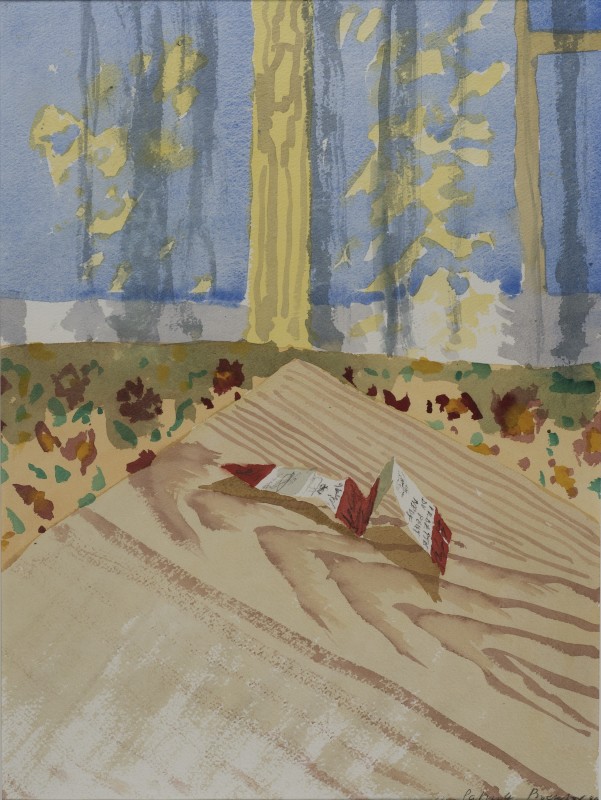 Patrick Procktor RAVedette de Pont Neuf, Paris, 1989Watercolour on paper40 x 30.5 cmSigned and dated lower right%3Cdiv%20class%3D%22artist%22%3E%3Cspan%20class%3D%22artist%22%3E%3Cstrong%3EPatrick%20Procktor%20RA%3C/strong%3E%3C/span%3E%3C/div%3E%0D%3Cdiv%20class%3D%22title%22%3E%3Cem%3EVedette%20de%20Pont%20Neuf%2C%20Paris%3C/em%3E%2C%201989%3C/div%3E%0D%3Cdiv%20class%3D%22signed_and_dated%22%3ESigned%20and%20dated%20lower%20right%3C/div%3E%0D%3Cdiv%20class%3D%22medium%22%3EWatercolour%20on%20paper%3C/div%3E%0D%3Cdiv%20class%3D%22dimensions%22%3E40%20x%2030.5%20cm%3C/div%3E
Patrick Procktor RAVedette de Pont Neuf, Paris, 1989Watercolour on paper40 x 30.5 cmSigned and dated lower right%3Cdiv%20class%3D%22artist%22%3E%3Cspan%20class%3D%22artist%22%3E%3Cstrong%3EPatrick%20Procktor%20RA%3C/strong%3E%3C/span%3E%3C/div%3E%0D%3Cdiv%20class%3D%22title%22%3E%3Cem%3EVedette%20de%20Pont%20Neuf%2C%20Paris%3C/em%3E%2C%201989%3C/div%3E%0D%3Cdiv%20class%3D%22signed_and_dated%22%3ESigned%20and%20dated%20lower%20right%3C/div%3E%0D%3Cdiv%20class%3D%22medium%22%3EWatercolour%20on%20paper%3C/div%3E%0D%3Cdiv%20class%3D%22dimensions%22%3E40%20x%2030.5%20cm%3C/div%3E -
 Patrick Procktor RAVedette Pont Neuf, Paris, 1989Oil on canvas122 x 76 cmSigned lower right%3Cdiv%20class%3D%22artist%22%3E%3Cspan%20class%3D%22artist%22%3E%3Cstrong%3EPatrick%20Procktor%20RA%3C/strong%3E%3C/span%3E%3C/div%3E%0D%3Cdiv%20class%3D%22title%22%3E%3Cem%3EVedette%20Pont%20Neuf%2C%20Paris%3C/em%3E%2C%201989%3C/div%3E%0D%3Cdiv%20class%3D%22signed_and_dated%22%3ESigned%20lower%20right%3C/div%3E%0D%3Cdiv%20class%3D%22medium%22%3EOil%20on%20canvas%3C/div%3E%0D%3Cdiv%20class%3D%22dimensions%22%3E122%20x%2076%20cm%3C/div%3E
Patrick Procktor RAVedette Pont Neuf, Paris, 1989Oil on canvas122 x 76 cmSigned lower right%3Cdiv%20class%3D%22artist%22%3E%3Cspan%20class%3D%22artist%22%3E%3Cstrong%3EPatrick%20Procktor%20RA%3C/strong%3E%3C/span%3E%3C/div%3E%0D%3Cdiv%20class%3D%22title%22%3E%3Cem%3EVedette%20Pont%20Neuf%2C%20Paris%3C/em%3E%2C%201989%3C/div%3E%0D%3Cdiv%20class%3D%22signed_and_dated%22%3ESigned%20lower%20right%3C/div%3E%0D%3Cdiv%20class%3D%22medium%22%3EOil%20on%20canvas%3C/div%3E%0D%3Cdiv%20class%3D%22dimensions%22%3E122%20x%2076%20cm%3C/div%3E -
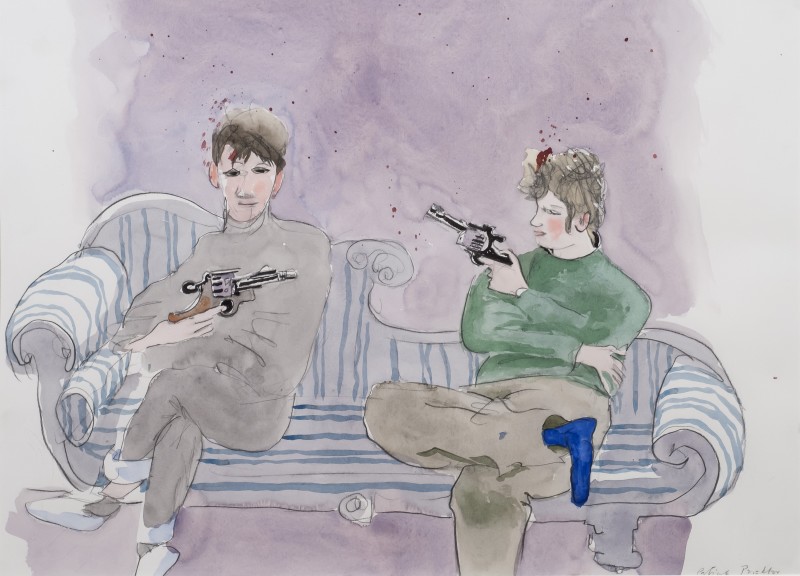 Patrick Procktor RAWill and Nicky, 1989Watercolour on paper44 x 61 cmSigned and dated lower right%3Cdiv%20class%3D%22artist%22%3E%3Cspan%20class%3D%22artist%22%3E%3Cstrong%3EPatrick%20Procktor%20RA%3C/strong%3E%3C/span%3E%3C/div%3E%0D%3Cdiv%20class%3D%22title%22%3E%3Cem%3EWill%20and%20Nicky%3C/em%3E%2C%201989%3C/div%3E%0D%3Cdiv%20class%3D%22signed_and_dated%22%3ESigned%20and%20dated%20lower%20right%3C/div%3E%0D%3Cdiv%20class%3D%22medium%22%3EWatercolour%20on%20paper%3C/div%3E%0D%3Cdiv%20class%3D%22dimensions%22%3E44%20x%2061%20cm%3C/div%3E
Patrick Procktor RAWill and Nicky, 1989Watercolour on paper44 x 61 cmSigned and dated lower right%3Cdiv%20class%3D%22artist%22%3E%3Cspan%20class%3D%22artist%22%3E%3Cstrong%3EPatrick%20Procktor%20RA%3C/strong%3E%3C/span%3E%3C/div%3E%0D%3Cdiv%20class%3D%22title%22%3E%3Cem%3EWill%20and%20Nicky%3C/em%3E%2C%201989%3C/div%3E%0D%3Cdiv%20class%3D%22signed_and_dated%22%3ESigned%20and%20dated%20lower%20right%3C/div%3E%0D%3Cdiv%20class%3D%22medium%22%3EWatercolour%20on%20paper%3C/div%3E%0D%3Cdiv%20class%3D%22dimensions%22%3E44%20x%2061%20cm%3C/div%3E -
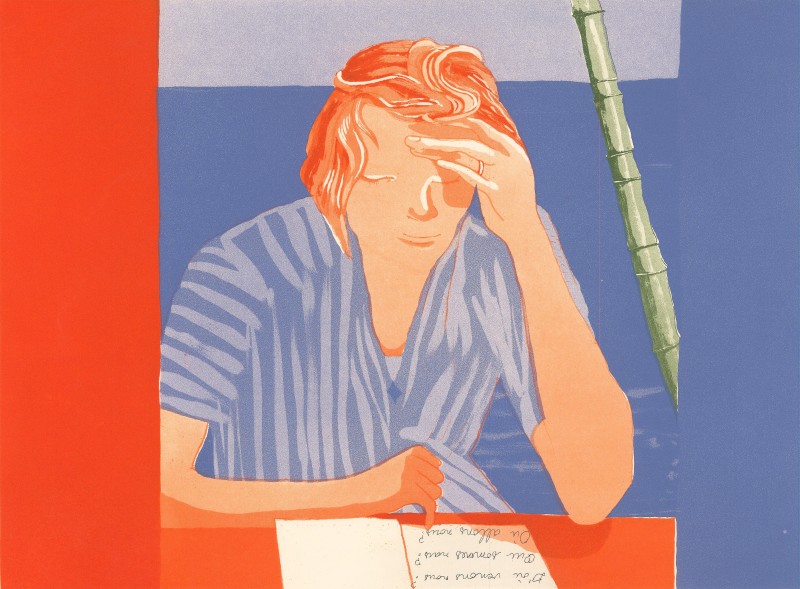 Patrick Procktor RAWoman Reading, 1989Etching and aquatint37 x 50 cm (image)From the edition of 35 impressionsSigned and numbered%3Cdiv%20class%3D%22artist%22%3E%3Cspan%20class%3D%22artist%22%3E%3Cstrong%3EPatrick%20Procktor%20RA%3C/strong%3E%3C/span%3E%3C/div%3E%0D%3Cdiv%20class%3D%22title%22%3E%3Cem%3EWoman%20Reading%3C/em%3E%2C%201989%3C/div%3E%0D%3Cdiv%20class%3D%22signed_and_dated%22%3ESigned%20and%20numbered%20%3C/div%3E%0D%3Cdiv%20class%3D%22medium%22%3EEtching%20and%20aquatint%3C/div%3E%0D%3Cdiv%20class%3D%22dimensions%22%3E37%20x%2050%20cm%20%28image%29%3C/div%3E%0D%3Cdiv%20class%3D%22edition_details%22%3EFrom%20the%20edition%20of%2035%20impressions%20%3C/div%3E
Patrick Procktor RAWoman Reading, 1989Etching and aquatint37 x 50 cm (image)From the edition of 35 impressionsSigned and numbered%3Cdiv%20class%3D%22artist%22%3E%3Cspan%20class%3D%22artist%22%3E%3Cstrong%3EPatrick%20Procktor%20RA%3C/strong%3E%3C/span%3E%3C/div%3E%0D%3Cdiv%20class%3D%22title%22%3E%3Cem%3EWoman%20Reading%3C/em%3E%2C%201989%3C/div%3E%0D%3Cdiv%20class%3D%22signed_and_dated%22%3ESigned%20and%20numbered%20%3C/div%3E%0D%3Cdiv%20class%3D%22medium%22%3EEtching%20and%20aquatint%3C/div%3E%0D%3Cdiv%20class%3D%22dimensions%22%3E37%20x%2050%20cm%20%28image%29%3C/div%3E%0D%3Cdiv%20class%3D%22edition_details%22%3EFrom%20the%20edition%20of%2035%20impressions%20%3C/div%3E -
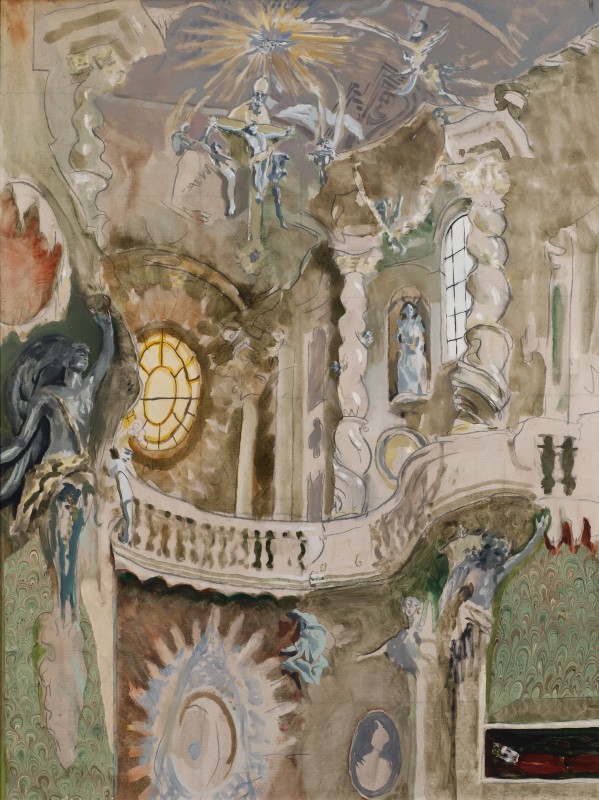 Patrick Procktor RAInterior of St John the Baptist, 1988Oil and collage on canvas102 x 76 cm%3Cdiv%20class%3D%22artist%22%3E%3Cspan%20class%3D%22artist%22%3E%3Cstrong%3EPatrick%20Procktor%20RA%3C/strong%3E%3C/span%3E%3C/div%3E%0D%3Cdiv%20class%3D%22title%22%3E%3Cem%3EInterior%20of%20St%20John%20the%20Baptist%3C/em%3E%2C%201988%3C/div%3E%0D%3Cdiv%20class%3D%22medium%22%3EOil%20and%20collage%20on%20canvas%3C/div%3E%0D%3Cdiv%20class%3D%22dimensions%22%3E102%20x%2076%20cm%3C/div%3E
Patrick Procktor RAInterior of St John the Baptist, 1988Oil and collage on canvas102 x 76 cm%3Cdiv%20class%3D%22artist%22%3E%3Cspan%20class%3D%22artist%22%3E%3Cstrong%3EPatrick%20Procktor%20RA%3C/strong%3E%3C/span%3E%3C/div%3E%0D%3Cdiv%20class%3D%22title%22%3E%3Cem%3EInterior%20of%20St%20John%20the%20Baptist%3C/em%3E%2C%201988%3C/div%3E%0D%3Cdiv%20class%3D%22medium%22%3EOil%20and%20collage%20on%20canvas%3C/div%3E%0D%3Cdiv%20class%3D%22dimensions%22%3E102%20x%2076%20cm%3C/div%3E -
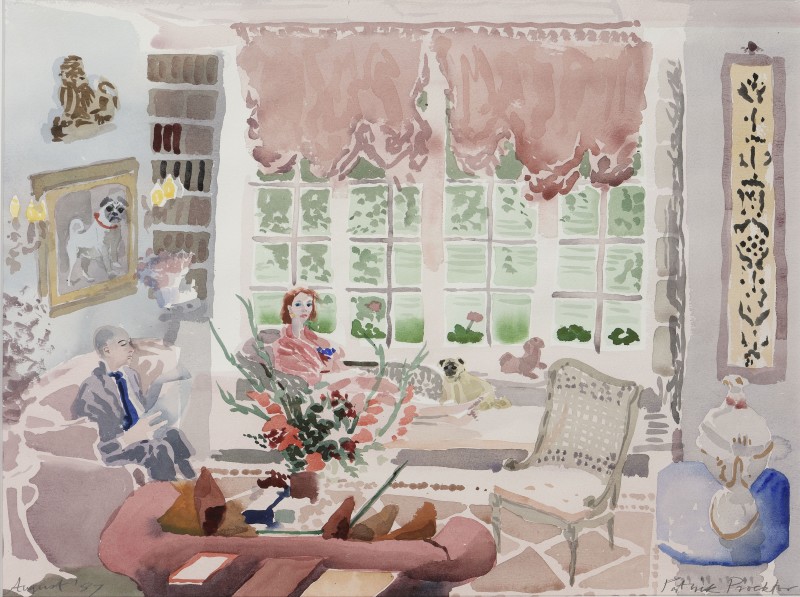 Patrick Procktor RAPauline, David and Lucas II, 1987Watercolour on paper45 x 60 cmSigned and dated; titled verso%3Cdiv%20class%3D%22artist%22%3E%3Cspan%20class%3D%22artist%22%3E%3Cstrong%3EPatrick%20Procktor%20RA%3C/strong%3E%3C/span%3E%3C/div%3E%0D%3Cdiv%20class%3D%22title%22%3E%3Cem%3EPauline%2C%20David%20and%20Lucas%20II%3C/em%3E%2C%201987%3C/div%3E%0D%3Cdiv%20class%3D%22signed_and_dated%22%3ESigned%20and%20dated%3B%20titled%20verso%3C/div%3E%0D%3Cdiv%20class%3D%22medium%22%3EWatercolour%20on%20paper%3C/div%3E%0D%3Cdiv%20class%3D%22dimensions%22%3E45%20x%2060%20cm%3C/div%3E
Patrick Procktor RAPauline, David and Lucas II, 1987Watercolour on paper45 x 60 cmSigned and dated; titled verso%3Cdiv%20class%3D%22artist%22%3E%3Cspan%20class%3D%22artist%22%3E%3Cstrong%3EPatrick%20Procktor%20RA%3C/strong%3E%3C/span%3E%3C/div%3E%0D%3Cdiv%20class%3D%22title%22%3E%3Cem%3EPauline%2C%20David%20and%20Lucas%20II%3C/em%3E%2C%201987%3C/div%3E%0D%3Cdiv%20class%3D%22signed_and_dated%22%3ESigned%20and%20dated%3B%20titled%20verso%3C/div%3E%0D%3Cdiv%20class%3D%22medium%22%3EWatercolour%20on%20paper%3C/div%3E%0D%3Cdiv%20class%3D%22dimensions%22%3E45%20x%2060%20cm%3C/div%3E -
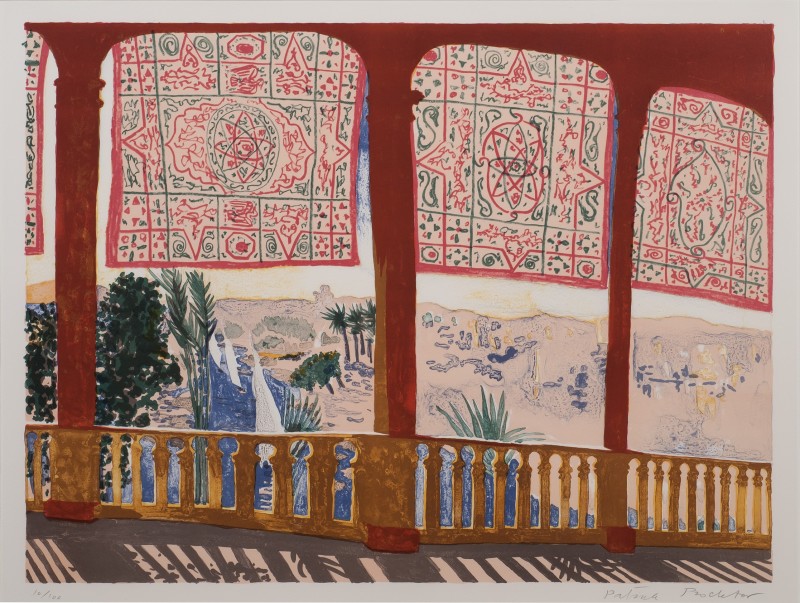 Patrick Procktor RACataract, Aswan, 1985Lithograph45 x 61 cm (image)From the edition of 100 impressionsSigned and numbered%3Cdiv%20class%3D%22artist%22%3E%3Cspan%20class%3D%22artist%22%3E%3Cstrong%3EPatrick%20Procktor%20RA%3C/strong%3E%3C/span%3E%3C/div%3E%0D%3Cdiv%20class%3D%22title%22%3E%3Cem%3ECataract%2C%20Aswan%3C/em%3E%2C%201985%3C/div%3E%0D%3Cdiv%20class%3D%22signed_and_dated%22%3ESigned%20and%20numbered%20%3C/div%3E%0D%3Cdiv%20class%3D%22medium%22%3ELithograph%3C/div%3E%0D%3Cdiv%20class%3D%22dimensions%22%3E45%20x%2061%20cm%20%28image%29%3C/div%3E%0D%3Cdiv%20class%3D%22edition_details%22%3EFrom%20the%20edition%20of%20100%20impressions%3C/div%3E
Patrick Procktor RACataract, Aswan, 1985Lithograph45 x 61 cm (image)From the edition of 100 impressionsSigned and numbered%3Cdiv%20class%3D%22artist%22%3E%3Cspan%20class%3D%22artist%22%3E%3Cstrong%3EPatrick%20Procktor%20RA%3C/strong%3E%3C/span%3E%3C/div%3E%0D%3Cdiv%20class%3D%22title%22%3E%3Cem%3ECataract%2C%20Aswan%3C/em%3E%2C%201985%3C/div%3E%0D%3Cdiv%20class%3D%22signed_and_dated%22%3ESigned%20and%20numbered%20%3C/div%3E%0D%3Cdiv%20class%3D%22medium%22%3ELithograph%3C/div%3E%0D%3Cdiv%20class%3D%22dimensions%22%3E45%20x%2061%20cm%20%28image%29%3C/div%3E%0D%3Cdiv%20class%3D%22edition_details%22%3EFrom%20the%20edition%20of%20100%20impressions%3C/div%3E -
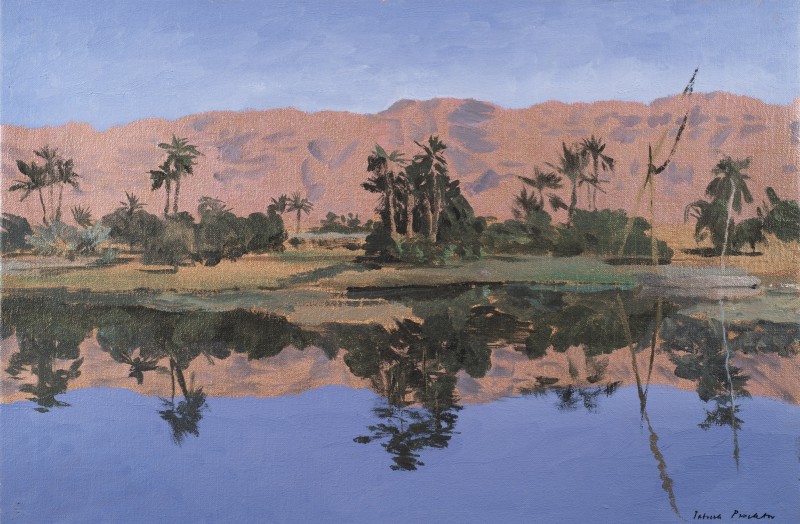 Patrick Procktor RAThe Nile near Edfu, 1985Oil on canvas50 x 76 cm%3Cdiv%20class%3D%22artist%22%3E%3Cspan%20class%3D%22artist%22%3E%3Cstrong%3EPatrick%20Procktor%20RA%3C/strong%3E%3C/span%3E%3C/div%3E%0D%3Cdiv%20class%3D%22title%22%3E%3Cem%3EThe%20Nile%20near%20Edfu%3C/em%3E%2C%201985%3C/div%3E%0D%3Cdiv%20class%3D%22medium%22%3EOil%20on%20canvas%3C/div%3E%0D%3Cdiv%20class%3D%22dimensions%22%3E50%20x%2076%20cm%3C/div%3E
Patrick Procktor RAThe Nile near Edfu, 1985Oil on canvas50 x 76 cm%3Cdiv%20class%3D%22artist%22%3E%3Cspan%20class%3D%22artist%22%3E%3Cstrong%3EPatrick%20Procktor%20RA%3C/strong%3E%3C/span%3E%3C/div%3E%0D%3Cdiv%20class%3D%22title%22%3E%3Cem%3EThe%20Nile%20near%20Edfu%3C/em%3E%2C%201985%3C/div%3E%0D%3Cdiv%20class%3D%22medium%22%3EOil%20on%20canvas%3C/div%3E%0D%3Cdiv%20class%3D%22dimensions%22%3E50%20x%2076%20cm%3C/div%3E -
 Patrick Procktor RAThe Second Court of Amenophis III, 1985Oil on canvas115 x 153 cmSigned and dated lower right%3Cdiv%20class%3D%22artist%22%3E%3Cspan%20class%3D%22artist%22%3E%3Cstrong%3EPatrick%20Procktor%20RA%3C/strong%3E%3C/span%3E%3C/div%3E%0D%3Cdiv%20class%3D%22title%22%3E%3Cem%3EThe%20Second%20Court%20of%20Amenophis%20III%3C/em%3E%2C%201985%3C/div%3E%0D%3Cdiv%20class%3D%22signed_and_dated%22%3ESigned%20and%20dated%20lower%20right%3C/div%3E%0D%3Cdiv%20class%3D%22medium%22%3EOil%20on%20canvas%3C/div%3E%0D%3Cdiv%20class%3D%22dimensions%22%3E115%20x%20153%20cm%3C/div%3E
Patrick Procktor RAThe Second Court of Amenophis III, 1985Oil on canvas115 x 153 cmSigned and dated lower right%3Cdiv%20class%3D%22artist%22%3E%3Cspan%20class%3D%22artist%22%3E%3Cstrong%3EPatrick%20Procktor%20RA%3C/strong%3E%3C/span%3E%3C/div%3E%0D%3Cdiv%20class%3D%22title%22%3E%3Cem%3EThe%20Second%20Court%20of%20Amenophis%20III%3C/em%3E%2C%201985%3C/div%3E%0D%3Cdiv%20class%3D%22signed_and_dated%22%3ESigned%20and%20dated%20lower%20right%3C/div%3E%0D%3Cdiv%20class%3D%22medium%22%3EOil%20on%20canvas%3C/div%3E%0D%3Cdiv%20class%3D%22dimensions%22%3E115%20x%20153%20cm%3C/div%3E -
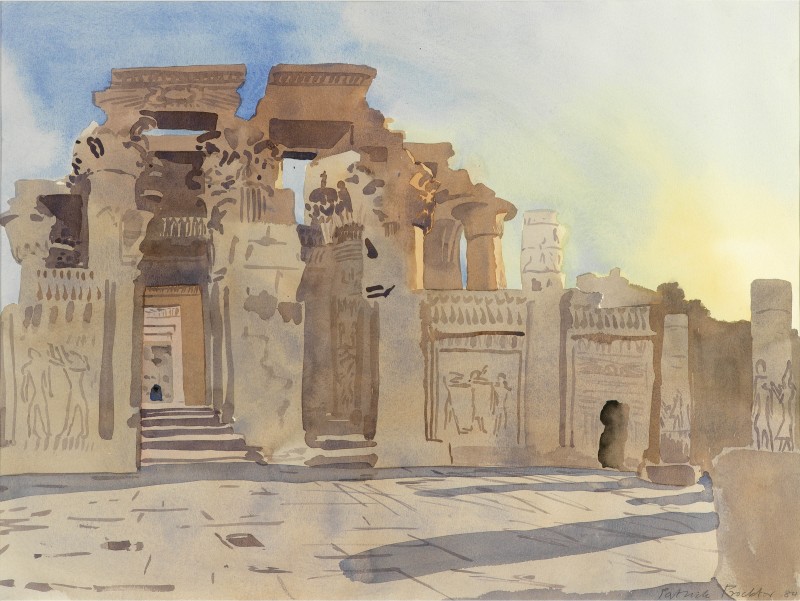 Patrick Procktor RAKôm Ombo, Dawn, 1984Watercolour on paper45 x 60 cmSigned and dated lower right%3Cdiv%20class%3D%22artist%22%3E%3Cspan%20class%3D%22artist%22%3E%3Cstrong%3EPatrick%20Procktor%20RA%3C%2Fstrong%3E%3C%2Fspan%3E%3C%2Fdiv%3E%0D%3Cdiv%20class%3D%22title%22%3E%3Cem%3EK%C3%B4m%20Ombo%2C%20Dawn%3C%2Fem%3E%2C%201984%3C%2Fdiv%3E%0D%3Cdiv%20class%3D%22signed_and_dated%22%3ESigned%20and%20dated%20lower%20right%3C%2Fdiv%3E%0D%3Cdiv%20class%3D%22medium%22%3EWatercolour%20on%20paper%20%3C%2Fdiv%3E%0D%3Cdiv%20class%3D%22dimensions%22%3E45%20x%2060%20cm%20%3C%2Fdiv%3E
Patrick Procktor RAKôm Ombo, Dawn, 1984Watercolour on paper45 x 60 cmSigned and dated lower right%3Cdiv%20class%3D%22artist%22%3E%3Cspan%20class%3D%22artist%22%3E%3Cstrong%3EPatrick%20Procktor%20RA%3C%2Fstrong%3E%3C%2Fspan%3E%3C%2Fdiv%3E%0D%3Cdiv%20class%3D%22title%22%3E%3Cem%3EK%C3%B4m%20Ombo%2C%20Dawn%3C%2Fem%3E%2C%201984%3C%2Fdiv%3E%0D%3Cdiv%20class%3D%22signed_and_dated%22%3ESigned%20and%20dated%20lower%20right%3C%2Fdiv%3E%0D%3Cdiv%20class%3D%22medium%22%3EWatercolour%20on%20paper%20%3C%2Fdiv%3E%0D%3Cdiv%20class%3D%22dimensions%22%3E45%20x%2060%20cm%20%3C%2Fdiv%3E -
 Patrick Procktor RACamels, Tomb of the First Emperor of the Ming Dynasty, Zhu Yuan Shang, Nanking, 1980Aquatint45 x 60 cm (image)From the edition of 75 impressionsSigned and numbered%3Cdiv%20class%3D%22artist%22%3E%3Cspan%20class%3D%22artist%22%3E%3Cstrong%3EPatrick%20Procktor%20RA%3C/strong%3E%3C/span%3E%3C/div%3E%0D%3Cdiv%20class%3D%22title%22%3E%3Cem%3ECamels%2C%20Tomb%20of%20the%20First%20Emperor%20of%20the%20Ming%20Dynasty%2C%20Zhu%20Yuan%20Shang%2C%20Nanking%3C/em%3E%2C%201980%3C/div%3E%0D%3Cdiv%20class%3D%22signed_and_dated%22%3ESigned%20and%20numbered%20%3C/div%3E%0D%3Cdiv%20class%3D%22medium%22%3EAquatint%3C/div%3E%0D%3Cdiv%20class%3D%22dimensions%22%3E45%20x%2060%20cm%20%28image%29%3C/div%3E%0D%3Cdiv%20class%3D%22edition_details%22%3EFrom%20the%20edition%20of%2075%20impressions%20%3C/div%3E
Patrick Procktor RACamels, Tomb of the First Emperor of the Ming Dynasty, Zhu Yuan Shang, Nanking, 1980Aquatint45 x 60 cm (image)From the edition of 75 impressionsSigned and numbered%3Cdiv%20class%3D%22artist%22%3E%3Cspan%20class%3D%22artist%22%3E%3Cstrong%3EPatrick%20Procktor%20RA%3C/strong%3E%3C/span%3E%3C/div%3E%0D%3Cdiv%20class%3D%22title%22%3E%3Cem%3ECamels%2C%20Tomb%20of%20the%20First%20Emperor%20of%20the%20Ming%20Dynasty%2C%20Zhu%20Yuan%20Shang%2C%20Nanking%3C/em%3E%2C%201980%3C/div%3E%0D%3Cdiv%20class%3D%22signed_and_dated%22%3ESigned%20and%20numbered%20%3C/div%3E%0D%3Cdiv%20class%3D%22medium%22%3EAquatint%3C/div%3E%0D%3Cdiv%20class%3D%22dimensions%22%3E45%20x%2060%20cm%20%28image%29%3C/div%3E%0D%3Cdiv%20class%3D%22edition_details%22%3EFrom%20the%20edition%20of%2075%20impressions%20%3C/div%3E -
 Patrick Procktor RADa Miou Mountains, Kweilin, 1980Aquatint46 x 60 cm (image)From the edition of 75 impressionsSigned and numbered%3Cdiv%20class%3D%22artist%22%3E%3Cspan%20class%3D%22artist%22%3E%3Cstrong%3EPatrick%20Procktor%20RA%3C/strong%3E%3C/span%3E%3C/div%3E%0D%3Cdiv%20class%3D%22title%22%3E%3Cem%3EDa%20Miou%20Mountains%2C%20Kweilin%3C/em%3E%2C%201980%3C/div%3E%0D%3Cdiv%20class%3D%22signed_and_dated%22%3ESigned%20and%20numbered%20%3C/div%3E%0D%3Cdiv%20class%3D%22medium%22%3EAquatint%20%3C/div%3E%0D%3Cdiv%20class%3D%22dimensions%22%3E46%20x%2060%20cm%20%28image%29%3C/div%3E%0D%3Cdiv%20class%3D%22edition_details%22%3EFrom%20the%20edition%20of%2075%20impressions%20%3C/div%3E
Patrick Procktor RADa Miou Mountains, Kweilin, 1980Aquatint46 x 60 cm (image)From the edition of 75 impressionsSigned and numbered%3Cdiv%20class%3D%22artist%22%3E%3Cspan%20class%3D%22artist%22%3E%3Cstrong%3EPatrick%20Procktor%20RA%3C/strong%3E%3C/span%3E%3C/div%3E%0D%3Cdiv%20class%3D%22title%22%3E%3Cem%3EDa%20Miou%20Mountains%2C%20Kweilin%3C/em%3E%2C%201980%3C/div%3E%0D%3Cdiv%20class%3D%22signed_and_dated%22%3ESigned%20and%20numbered%20%3C/div%3E%0D%3Cdiv%20class%3D%22medium%22%3EAquatint%20%3C/div%3E%0D%3Cdiv%20class%3D%22dimensions%22%3E46%20x%2060%20cm%20%28image%29%3C/div%3E%0D%3Cdiv%20class%3D%22edition_details%22%3EFrom%20the%20edition%20of%2075%20impressions%20%3C/div%3E -
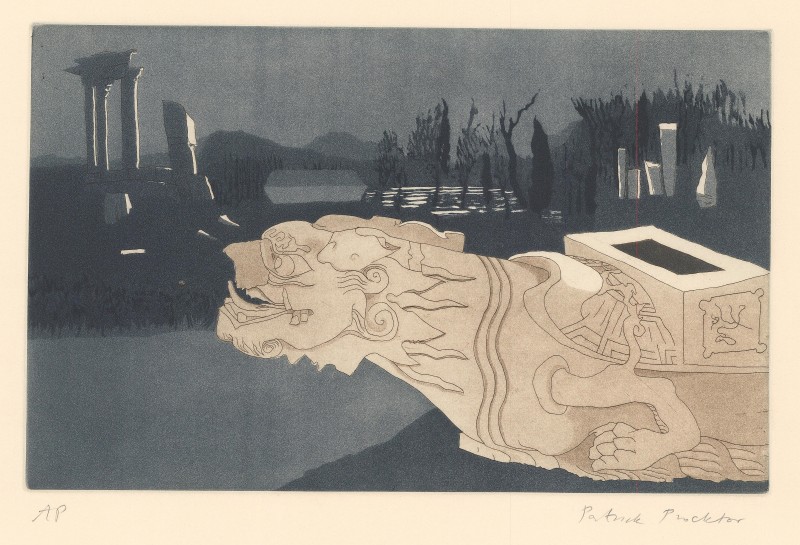 Patrick Procktor RAFallen Turtle, Yuan Ming Yuan, Peking, 1980Etching and aquatint25 x 40 cm (image)Unpublished; edition of about 10 proofsSigned and inscribed 'AP'%3Cdiv%20class%3D%22artist%22%3E%3Cspan%20class%3D%22artist%22%3E%3Cstrong%3EPatrick%20Procktor%20RA%3C/strong%3E%3C/span%3E%3C/div%3E%0D%3Cdiv%20class%3D%22title%22%3E%3Cem%3EFallen%20Turtle%2C%20Yuan%20Ming%20Yuan%2C%20Peking%3C/em%3E%2C%201980%3C/div%3E%0D%3Cdiv%20class%3D%22signed_and_dated%22%3ESigned%20and%20inscribed%20%27AP%27%3C/div%3E%0D%3Cdiv%20class%3D%22medium%22%3EEtching%20and%20aquatint%20%3C/div%3E%0D%3Cdiv%20class%3D%22dimensions%22%3E25%20x%2040%20cm%20%28image%29%3C/div%3E%0D%3Cdiv%20class%3D%22edition_details%22%3EUnpublished%3B%20edition%20of%20about%2010%20proofs%20%3C/div%3E
Patrick Procktor RAFallen Turtle, Yuan Ming Yuan, Peking, 1980Etching and aquatint25 x 40 cm (image)Unpublished; edition of about 10 proofsSigned and inscribed 'AP'%3Cdiv%20class%3D%22artist%22%3E%3Cspan%20class%3D%22artist%22%3E%3Cstrong%3EPatrick%20Procktor%20RA%3C/strong%3E%3C/span%3E%3C/div%3E%0D%3Cdiv%20class%3D%22title%22%3E%3Cem%3EFallen%20Turtle%2C%20Yuan%20Ming%20Yuan%2C%20Peking%3C/em%3E%2C%201980%3C/div%3E%0D%3Cdiv%20class%3D%22signed_and_dated%22%3ESigned%20and%20inscribed%20%27AP%27%3C/div%3E%0D%3Cdiv%20class%3D%22medium%22%3EEtching%20and%20aquatint%20%3C/div%3E%0D%3Cdiv%20class%3D%22dimensions%22%3E25%20x%2040%20cm%20%28image%29%3C/div%3E%0D%3Cdiv%20class%3D%22edition_details%22%3EUnpublished%3B%20edition%20of%20about%2010%20proofs%20%3C/div%3E -
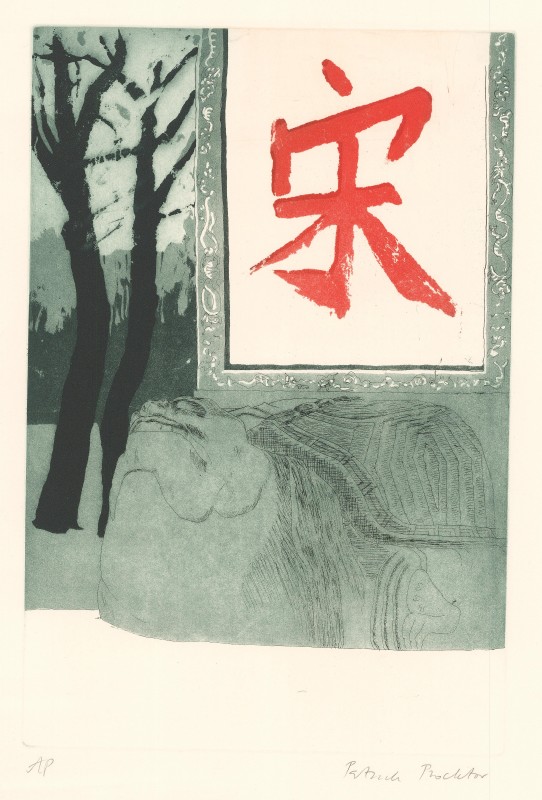 Patrick Procktor RALongevity, Tomb of the First Emperor of the Ming Dynasty, Zhu Yuan Shang, Nanking, 1980Etching and aquatint45 x 30 cm (image)Unpublished; edition of about 5 proofsSigned%3Cdiv%20class%3D%22artist%22%3E%3Cspan%20class%3D%22artist%22%3E%3Cstrong%3EPatrick%20Procktor%20RA%3C/strong%3E%3C/span%3E%3C/div%3E%0D%3Cdiv%20class%3D%22title%22%3E%3Cem%3ELongevity%2C%20Tomb%20of%20the%20First%20Emperor%20of%20the%20Ming%20Dynasty%2C%20Zhu%20Yuan%20Shang%2C%20Nanking%3C/em%3E%2C%201980%3C/div%3E%0D%3Cdiv%20class%3D%22signed_and_dated%22%3ESigned%20%3C/div%3E%0D%3Cdiv%20class%3D%22medium%22%3EEtching%20and%20aquatint%20%3C/div%3E%0D%3Cdiv%20class%3D%22dimensions%22%3E45%20x%2030%20cm%20%28image%29%3C/div%3E%0D%3Cdiv%20class%3D%22edition_details%22%3EUnpublished%3B%20edition%20of%20about%205%20proofs%20%3C/div%3E
Patrick Procktor RALongevity, Tomb of the First Emperor of the Ming Dynasty, Zhu Yuan Shang, Nanking, 1980Etching and aquatint45 x 30 cm (image)Unpublished; edition of about 5 proofsSigned%3Cdiv%20class%3D%22artist%22%3E%3Cspan%20class%3D%22artist%22%3E%3Cstrong%3EPatrick%20Procktor%20RA%3C/strong%3E%3C/span%3E%3C/div%3E%0D%3Cdiv%20class%3D%22title%22%3E%3Cem%3ELongevity%2C%20Tomb%20of%20the%20First%20Emperor%20of%20the%20Ming%20Dynasty%2C%20Zhu%20Yuan%20Shang%2C%20Nanking%3C/em%3E%2C%201980%3C/div%3E%0D%3Cdiv%20class%3D%22signed_and_dated%22%3ESigned%20%3C/div%3E%0D%3Cdiv%20class%3D%22medium%22%3EEtching%20and%20aquatint%20%3C/div%3E%0D%3Cdiv%20class%3D%22dimensions%22%3E45%20x%2030%20cm%20%28image%29%3C/div%3E%0D%3Cdiv%20class%3D%22edition_details%22%3EUnpublished%3B%20edition%20of%20about%205%20proofs%20%3C/div%3E -
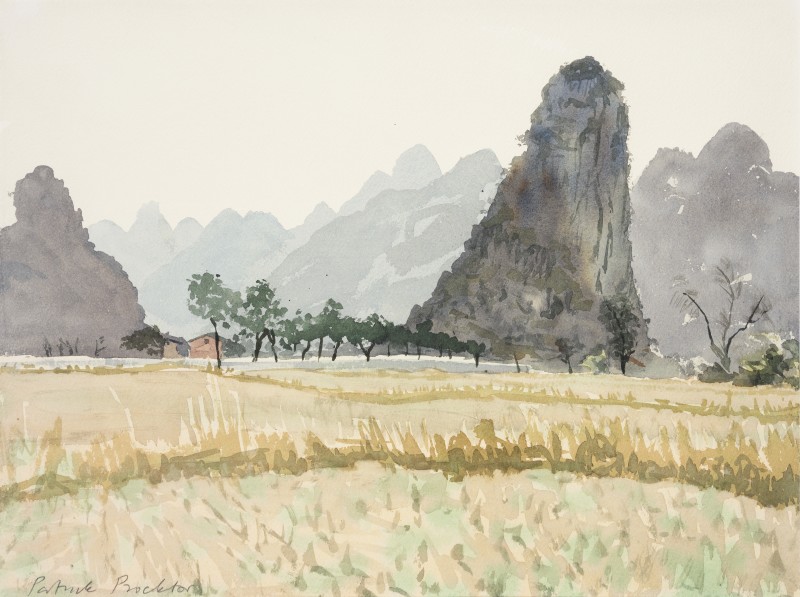 Patrick Procktor RAPiled Festoon Mountains, Kweilin, 1980Watercolour on paper31 x 40 cmSigned lower left%3Cdiv%20class%3D%22artist%22%3E%3Cspan%20class%3D%22artist%22%3E%3Cstrong%3EPatrick%20Procktor%20RA%3C/strong%3E%3C/span%3E%3C/div%3E%0D%3Cdiv%20class%3D%22title%22%3E%3Cem%3EPiled%20Festoon%20Mountains%2C%20Kweilin%3C/em%3E%2C%201980%3C/div%3E%0D%3Cdiv%20class%3D%22signed_and_dated%22%3ESigned%20lower%20left%3C/div%3E%0D%3Cdiv%20class%3D%22medium%22%3EWatercolour%20on%20paper%3C/div%3E%0D%3Cdiv%20class%3D%22dimensions%22%3E31%20x%2040%20cm%3C/div%3E
Patrick Procktor RAPiled Festoon Mountains, Kweilin, 1980Watercolour on paper31 x 40 cmSigned lower left%3Cdiv%20class%3D%22artist%22%3E%3Cspan%20class%3D%22artist%22%3E%3Cstrong%3EPatrick%20Procktor%20RA%3C/strong%3E%3C/span%3E%3C/div%3E%0D%3Cdiv%20class%3D%22title%22%3E%3Cem%3EPiled%20Festoon%20Mountains%2C%20Kweilin%3C/em%3E%2C%201980%3C/div%3E%0D%3Cdiv%20class%3D%22signed_and_dated%22%3ESigned%20lower%20left%3C/div%3E%0D%3Cdiv%20class%3D%22medium%22%3EWatercolour%20on%20paper%3C/div%3E%0D%3Cdiv%20class%3D%22dimensions%22%3E31%20x%2040%20cm%3C/div%3E -
 Patrick Procktor RAPonte Lungo, 1978Aquatint46 x 59 cm (image)From the edition of 35 impressions plus 5 artist's proofsSigned and numbered%3Cdiv%20class%3D%22artist%22%3E%3Cspan%20class%3D%22artist%22%3E%3Cstrong%3EPatrick%20Procktor%20RA%3C/strong%3E%3C/span%3E%3C/div%3E%0D%3Cdiv%20class%3D%22title%22%3E%3Cem%3EPonte%20Lungo%3C/em%3E%2C%201978%3C/div%3E%0D%3Cdiv%20class%3D%22signed_and_dated%22%3ESigned%20and%20numbered%3C/div%3E%0D%3Cdiv%20class%3D%22medium%22%3EAquatint%3C/div%3E%0D%3Cdiv%20class%3D%22dimensions%22%3E46%20x%2059%20cm%20%28image%29%3C/div%3E%0D%3Cdiv%20class%3D%22edition_details%22%3EFrom%20the%20edition%20of%2035%20impressions%20plus%205%20artist%27s%20proofs%3C/div%3E
Patrick Procktor RAPonte Lungo, 1978Aquatint46 x 59 cm (image)From the edition of 35 impressions plus 5 artist's proofsSigned and numbered%3Cdiv%20class%3D%22artist%22%3E%3Cspan%20class%3D%22artist%22%3E%3Cstrong%3EPatrick%20Procktor%20RA%3C/strong%3E%3C/span%3E%3C/div%3E%0D%3Cdiv%20class%3D%22title%22%3E%3Cem%3EPonte%20Lungo%3C/em%3E%2C%201978%3C/div%3E%0D%3Cdiv%20class%3D%22signed_and_dated%22%3ESigned%20and%20numbered%3C/div%3E%0D%3Cdiv%20class%3D%22medium%22%3EAquatint%3C/div%3E%0D%3Cdiv%20class%3D%22dimensions%22%3E46%20x%2059%20cm%20%28image%29%3C/div%3E%0D%3Cdiv%20class%3D%22edition_details%22%3EFrom%20the%20edition%20of%2035%20impressions%20plus%205%20artist%27s%20proofs%3C/div%3E -
 Patrick Procktor RAThom Gunn, 1978Watercolour on paper50 x 35 cmSigned lower right%3Cdiv%20class%3D%22artist%22%3E%3Cspan%20class%3D%22artist%22%3E%3Cstrong%3EPatrick%20Procktor%20RA%3C/strong%3E%3C/span%3E%3C/div%3E%0D%3Cdiv%20class%3D%22title%22%3E%3Cem%3EThom%20Gunn%3C/em%3E%2C%201978%3C/div%3E%0D%3Cdiv%20class%3D%22signed_and_dated%22%3ESigned%20lower%20right%3C/div%3E%0D%3Cdiv%20class%3D%22medium%22%3EWatercolour%20on%20paper%3C/div%3E%0D%3Cdiv%20class%3D%22dimensions%22%3E50%20x%2035%20cm%3C/div%3E
Patrick Procktor RAThom Gunn, 1978Watercolour on paper50 x 35 cmSigned lower right%3Cdiv%20class%3D%22artist%22%3E%3Cspan%20class%3D%22artist%22%3E%3Cstrong%3EPatrick%20Procktor%20RA%3C/strong%3E%3C/span%3E%3C/div%3E%0D%3Cdiv%20class%3D%22title%22%3E%3Cem%3EThom%20Gunn%3C/em%3E%2C%201978%3C/div%3E%0D%3Cdiv%20class%3D%22signed_and_dated%22%3ESigned%20lower%20right%3C/div%3E%0D%3Cdiv%20class%3D%22medium%22%3EWatercolour%20on%20paper%3C/div%3E%0D%3Cdiv%20class%3D%22dimensions%22%3E50%20x%2035%20cm%3C/div%3E -
 Patrick Procktor RAZattere, 1978Aquatint32 x 54 cm (image)From the edition of 35 impressionsSigned and numbered%3Cdiv%20class%3D%22artist%22%3E%3Cspan%20class%3D%22artist%22%3E%3Cstrong%3EPatrick%20Procktor%20RA%3C/strong%3E%3C/span%3E%3C/div%3E%0D%3Cdiv%20class%3D%22title%22%3E%3Cem%3EZattere%3C/em%3E%2C%201978%3C/div%3E%0D%3Cdiv%20class%3D%22signed_and_dated%22%3ESigned%20and%20numbered%3C/div%3E%0D%3Cdiv%20class%3D%22medium%22%3EAquatint%3C/div%3E%0D%3Cdiv%20class%3D%22dimensions%22%3E32%20x%2054%20cm%20%28image%29%3C/div%3E%0D%3Cdiv%20class%3D%22edition_details%22%3EFrom%20the%20edition%20of%2035%20impressions%3C/div%3E
Patrick Procktor RAZattere, 1978Aquatint32 x 54 cm (image)From the edition of 35 impressionsSigned and numbered%3Cdiv%20class%3D%22artist%22%3E%3Cspan%20class%3D%22artist%22%3E%3Cstrong%3EPatrick%20Procktor%20RA%3C/strong%3E%3C/span%3E%3C/div%3E%0D%3Cdiv%20class%3D%22title%22%3E%3Cem%3EZattere%3C/em%3E%2C%201978%3C/div%3E%0D%3Cdiv%20class%3D%22signed_and_dated%22%3ESigned%20and%20numbered%3C/div%3E%0D%3Cdiv%20class%3D%22medium%22%3EAquatint%3C/div%3E%0D%3Cdiv%20class%3D%22dimensions%22%3E32%20x%2054%20cm%20%28image%29%3C/div%3E%0D%3Cdiv%20class%3D%22edition_details%22%3EFrom%20the%20edition%20of%2035%20impressions%3C/div%3E -
 Patrick Procktor RADahlias, 1977Aquatint31 x 27 cm (image)From the edition of 100Signed and numbered%3Cdiv%20class%3D%22artist%22%3E%3Cspan%20class%3D%22artist%22%3E%3Cstrong%3EPatrick%20Procktor%20RA%3C/strong%3E%3C/span%3E%3C/div%3E%0D%3Cdiv%20class%3D%22title%22%3E%3Cem%3EDahlias%3C/em%3E%2C%201977%3C/div%3E%0D%3Cdiv%20class%3D%22signed_and_dated%22%3ESigned%20and%20numbered%3C/div%3E%0D%3Cdiv%20class%3D%22medium%22%3EAquatint%3C/div%3E%0D%3Cdiv%20class%3D%22dimensions%22%3E31%20x%2027%20cm%20%28image%29%3C/div%3E%0D%3Cdiv%20class%3D%22edition_details%22%3EFrom%20the%20edition%20of%20100%3C/div%3E
Patrick Procktor RADahlias, 1977Aquatint31 x 27 cm (image)From the edition of 100Signed and numbered%3Cdiv%20class%3D%22artist%22%3E%3Cspan%20class%3D%22artist%22%3E%3Cstrong%3EPatrick%20Procktor%20RA%3C/strong%3E%3C/span%3E%3C/div%3E%0D%3Cdiv%20class%3D%22title%22%3E%3Cem%3EDahlias%3C/em%3E%2C%201977%3C/div%3E%0D%3Cdiv%20class%3D%22signed_and_dated%22%3ESigned%20and%20numbered%3C/div%3E%0D%3Cdiv%20class%3D%22medium%22%3EAquatint%3C/div%3E%0D%3Cdiv%20class%3D%22dimensions%22%3E31%20x%2027%20cm%20%28image%29%3C/div%3E%0D%3Cdiv%20class%3D%22edition_details%22%3EFrom%20the%20edition%20of%20100%3C/div%3E -
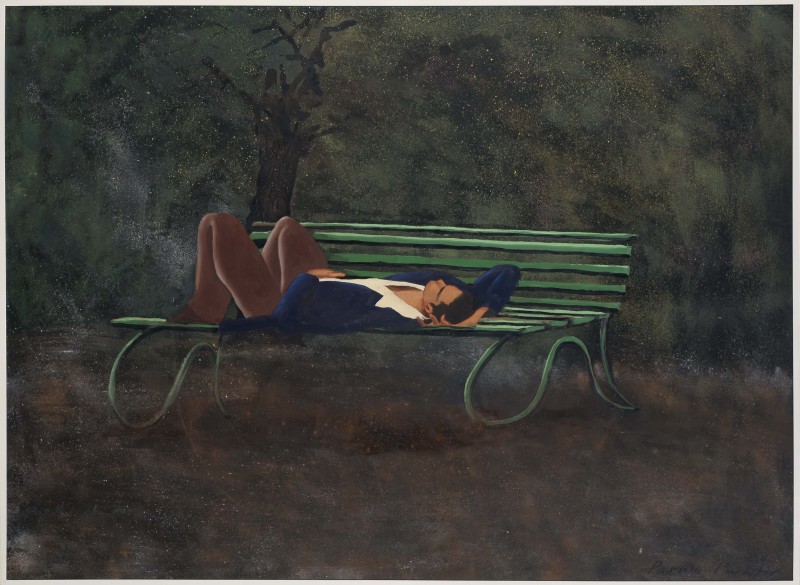 Patrick Procktor RAMan on Bench, 1977Oil and pastel on panel84 x 115 cmSigned lower right%3Cdiv%20class%3D%22artist%22%3E%3Cspan%20class%3D%22artist%22%3E%3Cstrong%3EPatrick%20Procktor%20RA%3C/strong%3E%3C/span%3E%3C/div%3E%0D%3Cdiv%20class%3D%22title%22%3E%3Cem%3EMan%20on%20Bench%3C/em%3E%2C%201977%3C/div%3E%0D%3Cdiv%20class%3D%22signed_and_dated%22%3ESigned%20lower%20right%3C/div%3E%0D%3Cdiv%20class%3D%22medium%22%3EOil%20and%20pastel%20on%20panel%3C/div%3E%0D%3Cdiv%20class%3D%22dimensions%22%3E84%20x%20115%20cm%3C/div%3E
Patrick Procktor RAMan on Bench, 1977Oil and pastel on panel84 x 115 cmSigned lower right%3Cdiv%20class%3D%22artist%22%3E%3Cspan%20class%3D%22artist%22%3E%3Cstrong%3EPatrick%20Procktor%20RA%3C/strong%3E%3C/span%3E%3C/div%3E%0D%3Cdiv%20class%3D%22title%22%3E%3Cem%3EMan%20on%20Bench%3C/em%3E%2C%201977%3C/div%3E%0D%3Cdiv%20class%3D%22signed_and_dated%22%3ESigned%20lower%20right%3C/div%3E%0D%3Cdiv%20class%3D%22medium%22%3EOil%20and%20pastel%20on%20panel%3C/div%3E%0D%3Cdiv%20class%3D%22dimensions%22%3E84%20x%20115%20cm%3C/div%3E -
 Patrick Procktor RAAnd ice, mast-high, came floating by, As green as emerald, 1976Aquatint35 x 27 cm (image)From the edition of 75 impressionsSigned and numbered%3Cdiv%20class%3D%22artist%22%3E%3Cspan%20class%3D%22artist%22%3E%3Cstrong%3EPatrick%20Procktor%20RA%3C/strong%3E%3C/span%3E%3C/div%3E%0D%3Cdiv%20class%3D%22title%22%3E%3Cem%3EAnd%20ice%2C%20mast-high%2C%20came%20floating%20by%2C%20As%20green%20as%20emerald%3C/em%3E%2C%201976%3C/div%3E%0D%3Cdiv%20class%3D%22signed_and_dated%22%3ESigned%20and%20numbered%3C/div%3E%0D%3Cdiv%20class%3D%22medium%22%3EAquatint%3C/div%3E%0D%3Cdiv%20class%3D%22dimensions%22%3E35%20x%2027%20cm%20%28image%29%3C/div%3E%0D%3Cdiv%20class%3D%22edition_details%22%3EFrom%20the%20edition%20of%2075%20impressions%3C/div%3E
Patrick Procktor RAAnd ice, mast-high, came floating by, As green as emerald, 1976Aquatint35 x 27 cm (image)From the edition of 75 impressionsSigned and numbered%3Cdiv%20class%3D%22artist%22%3E%3Cspan%20class%3D%22artist%22%3E%3Cstrong%3EPatrick%20Procktor%20RA%3C/strong%3E%3C/span%3E%3C/div%3E%0D%3Cdiv%20class%3D%22title%22%3E%3Cem%3EAnd%20ice%2C%20mast-high%2C%20came%20floating%20by%2C%20As%20green%20as%20emerald%3C/em%3E%2C%201976%3C/div%3E%0D%3Cdiv%20class%3D%22signed_and_dated%22%3ESigned%20and%20numbered%3C/div%3E%0D%3Cdiv%20class%3D%22medium%22%3EAquatint%3C/div%3E%0D%3Cdiv%20class%3D%22dimensions%22%3E35%20x%2027%20cm%20%28image%29%3C/div%3E%0D%3Cdiv%20class%3D%22edition_details%22%3EFrom%20the%20edition%20of%2075%20impressions%3C/div%3E -
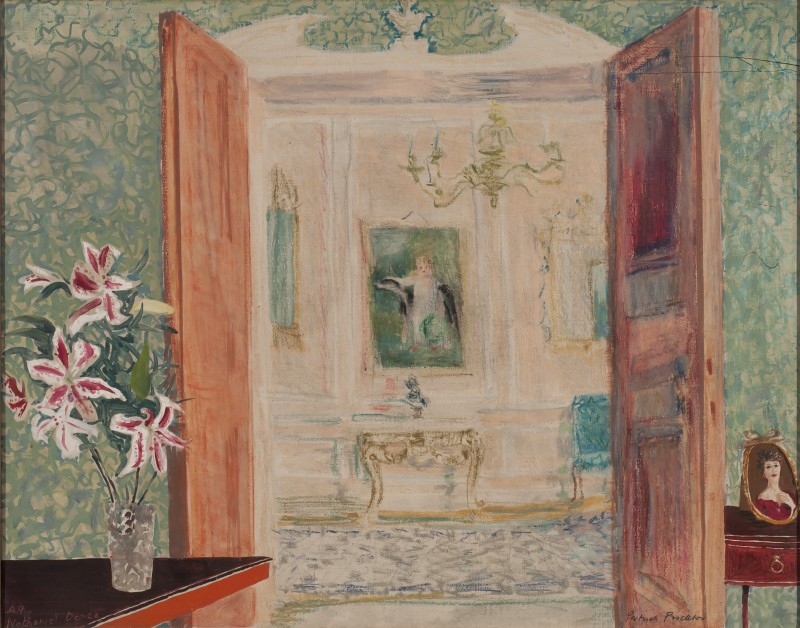 Patrick Procktor RAAfter Nathaniel Dance, 1975Oil on canvas41 x 50 cmSigned lower right; titled lower left%3Cdiv%20class%3D%22artist%22%3E%3Cspan%20class%3D%22artist%22%3E%3Cstrong%3EPatrick%20Procktor%20RA%3C/strong%3E%3C/span%3E%3C/div%3E%0D%3Cdiv%20class%3D%22title%22%3E%3Cem%3EAfter%20Nathaniel%20Dance%3C/em%3E%2C%201975%3C/div%3E%0D%3Cdiv%20class%3D%22signed_and_dated%22%3ESigned%20lower%20right%3B%20titled%20lower%20left%3C/div%3E%0D%3Cdiv%20class%3D%22medium%22%3EOil%20on%20canvas%3C/div%3E%0D%3Cdiv%20class%3D%22dimensions%22%3E41%20x%2050%20cm%3C/div%3E
Patrick Procktor RAAfter Nathaniel Dance, 1975Oil on canvas41 x 50 cmSigned lower right; titled lower left%3Cdiv%20class%3D%22artist%22%3E%3Cspan%20class%3D%22artist%22%3E%3Cstrong%3EPatrick%20Procktor%20RA%3C/strong%3E%3C/span%3E%3C/div%3E%0D%3Cdiv%20class%3D%22title%22%3E%3Cem%3EAfter%20Nathaniel%20Dance%3C/em%3E%2C%201975%3C/div%3E%0D%3Cdiv%20class%3D%22signed_and_dated%22%3ESigned%20lower%20right%3B%20titled%20lower%20left%3C/div%3E%0D%3Cdiv%20class%3D%22medium%22%3EOil%20on%20canvas%3C/div%3E%0D%3Cdiv%20class%3D%22dimensions%22%3E41%20x%2050%20cm%3C/div%3E -
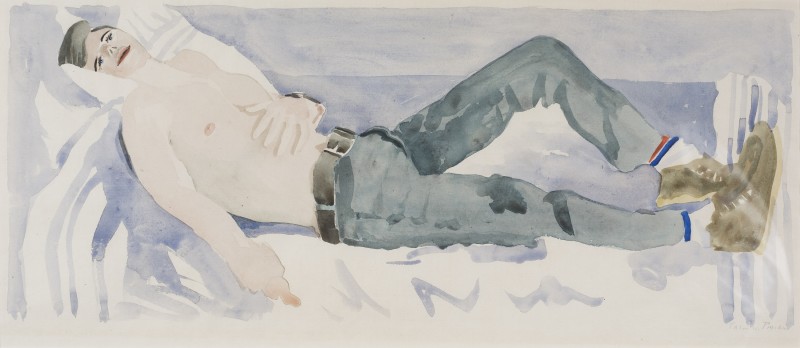 Patrick Procktor RAJohn Patrick Kelly, 1975Watercolour on paper29.5 x 59.5 cmSigned lower right%3Cdiv%20class%3D%22artist%22%3E%3Cspan%20class%3D%22artist%22%3E%3Cstrong%3EPatrick%20Procktor%20RA%3C/strong%3E%3C/span%3E%3C/div%3E%0D%3Cdiv%20class%3D%22title%22%3E%3Cem%3EJohn%20Patrick%20Kelly%3C/em%3E%2C%201975%3C/div%3E%0D%3Cdiv%20class%3D%22signed_and_dated%22%3ESigned%20lower%20right%3C/div%3E%0D%3Cdiv%20class%3D%22medium%22%3EWatercolour%20on%20paper%3C/div%3E%0D%3Cdiv%20class%3D%22dimensions%22%3E29.5%20x%2059.5%20cm%3C/div%3E
Patrick Procktor RAJohn Patrick Kelly, 1975Watercolour on paper29.5 x 59.5 cmSigned lower right%3Cdiv%20class%3D%22artist%22%3E%3Cspan%20class%3D%22artist%22%3E%3Cstrong%3EPatrick%20Procktor%20RA%3C/strong%3E%3C/span%3E%3C/div%3E%0D%3Cdiv%20class%3D%22title%22%3E%3Cem%3EJohn%20Patrick%20Kelly%3C/em%3E%2C%201975%3C/div%3E%0D%3Cdiv%20class%3D%22signed_and_dated%22%3ESigned%20lower%20right%3C/div%3E%0D%3Cdiv%20class%3D%22medium%22%3EWatercolour%20on%20paper%3C/div%3E%0D%3Cdiv%20class%3D%22dimensions%22%3E29.5%20x%2059.5%20cm%3C/div%3E -
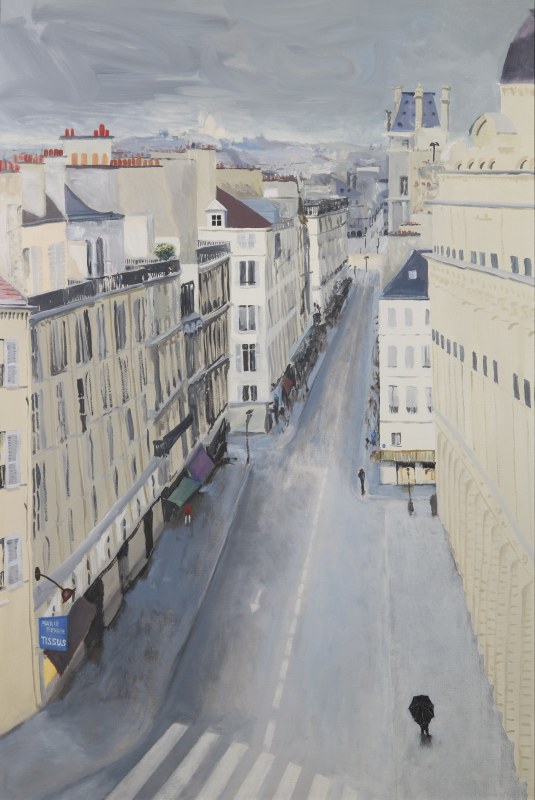 Patrick Procktor RASacré-Coeur par rue Montalembert, 1975Oil on canvas136 x 90.3 cm%3Cdiv%20class%3D%22artist%22%3E%3Cspan%20class%3D%22artist%22%3E%3Cstrong%3EPatrick%20Procktor%20RA%3C%2Fstrong%3E%3C%2Fspan%3E%3C%2Fdiv%3E%0D%3Cdiv%20class%3D%22title%22%3E%3Cem%3ESacr%C3%A9-Coeur%20par%20rue%20Montalembert%3C%2Fem%3E%2C%201975%3C%2Fdiv%3E%0D%3Cdiv%20class%3D%22medium%22%3EOil%20on%20canvas%3C%2Fdiv%3E%0D%3Cdiv%20class%3D%22dimensions%22%3E136%20x%2090.3%20cm%3C%2Fdiv%3E
Patrick Procktor RASacré-Coeur par rue Montalembert, 1975Oil on canvas136 x 90.3 cm%3Cdiv%20class%3D%22artist%22%3E%3Cspan%20class%3D%22artist%22%3E%3Cstrong%3EPatrick%20Procktor%20RA%3C%2Fstrong%3E%3C%2Fspan%3E%3C%2Fdiv%3E%0D%3Cdiv%20class%3D%22title%22%3E%3Cem%3ESacr%C3%A9-Coeur%20par%20rue%20Montalembert%3C%2Fem%3E%2C%201975%3C%2Fdiv%3E%0D%3Cdiv%20class%3D%22medium%22%3EOil%20on%20canvas%3C%2Fdiv%3E%0D%3Cdiv%20class%3D%22dimensions%22%3E136%20x%2090.3%20cm%3C%2Fdiv%3E -
 Patrick Procktor RAHoly Trinity Churchyard, Kalk Bay, Cape Town, 1974Oil on canvas40 x 56 cmSigned and dated lower right%3Cdiv%20class%3D%22artist%22%3E%3Cspan%20class%3D%22artist%22%3E%3Cstrong%3EPatrick%20Procktor%20RA%3C/strong%3E%3C/span%3E%3C/div%3E%0D%3Cdiv%20class%3D%22title%22%3E%3Cem%3EHoly%20Trinity%20Churchyard%2C%20Kalk%20Bay%2C%20Cape%20Town%3C/em%3E%2C%201974%3C/div%3E%0D%3Cdiv%20class%3D%22signed_and_dated%22%3ESigned%20and%20dated%20lower%20right%3C/div%3E%0D%3Cdiv%20class%3D%22medium%22%3EOil%20on%20canvas%3C/div%3E%0D%3Cdiv%20class%3D%22dimensions%22%3E40%20x%2056%20cm%3C/div%3E
Patrick Procktor RAHoly Trinity Churchyard, Kalk Bay, Cape Town, 1974Oil on canvas40 x 56 cmSigned and dated lower right%3Cdiv%20class%3D%22artist%22%3E%3Cspan%20class%3D%22artist%22%3E%3Cstrong%3EPatrick%20Procktor%20RA%3C/strong%3E%3C/span%3E%3C/div%3E%0D%3Cdiv%20class%3D%22title%22%3E%3Cem%3EHoly%20Trinity%20Churchyard%2C%20Kalk%20Bay%2C%20Cape%20Town%3C/em%3E%2C%201974%3C/div%3E%0D%3Cdiv%20class%3D%22signed_and_dated%22%3ESigned%20and%20dated%20lower%20right%3C/div%3E%0D%3Cdiv%20class%3D%22medium%22%3EOil%20on%20canvas%3C/div%3E%0D%3Cdiv%20class%3D%22dimensions%22%3E40%20x%2056%20cm%3C/div%3E -
 Patrick Procktor RAHout Bay, Cape Town, 1974Oil on canvas36 x 51 cm%3Cdiv%20class%3D%22artist%22%3E%3Cspan%20class%3D%22artist%22%3E%3Cstrong%3EPatrick%20Procktor%20RA%3C/strong%3E%3C/span%3E%3C/div%3E%0D%3Cdiv%20class%3D%22title%22%3E%3Cem%3EHout%20Bay%2C%20Cape%20Town%3C/em%3E%2C%201974%3C/div%3E%0D%3Cdiv%20class%3D%22medium%22%3EOil%20on%20canvas%3C/div%3E%0D%3Cdiv%20class%3D%22dimensions%22%3E36%20x%2051%20cm%3C/div%3E
Patrick Procktor RAHout Bay, Cape Town, 1974Oil on canvas36 x 51 cm%3Cdiv%20class%3D%22artist%22%3E%3Cspan%20class%3D%22artist%22%3E%3Cstrong%3EPatrick%20Procktor%20RA%3C/strong%3E%3C/span%3E%3C/div%3E%0D%3Cdiv%20class%3D%22title%22%3E%3Cem%3EHout%20Bay%2C%20Cape%20Town%3C/em%3E%2C%201974%3C/div%3E%0D%3Cdiv%20class%3D%22medium%22%3EOil%20on%20canvas%3C/div%3E%0D%3Cdiv%20class%3D%22dimensions%22%3E36%20x%2051%20cm%3C/div%3E -
 Patrick Procktor RAIn Old Holloway, 1974Oil on canvas254 x 179 cmSigned lower right%3Cdiv%20class%3D%22artist%22%3E%3Cspan%20class%3D%22artist%22%3E%3Cstrong%3EPatrick%20Procktor%20RA%3C/strong%3E%3C/span%3E%3C/div%3E%0D%3Cdiv%20class%3D%22title%22%3E%3Cem%3EIn%20Old%20Holloway%3C/em%3E%2C%201974%3C/div%3E%0D%3Cdiv%20class%3D%22signed_and_dated%22%3ESigned%20lower%20right%3C/div%3E%0D%3Cdiv%20class%3D%22medium%22%3EOil%20on%20canvas%3C/div%3E%0D%3Cdiv%20class%3D%22dimensions%22%3E254%20x%20179%20cm%3C/div%3E
Patrick Procktor RAIn Old Holloway, 1974Oil on canvas254 x 179 cmSigned lower right%3Cdiv%20class%3D%22artist%22%3E%3Cspan%20class%3D%22artist%22%3E%3Cstrong%3EPatrick%20Procktor%20RA%3C/strong%3E%3C/span%3E%3C/div%3E%0D%3Cdiv%20class%3D%22title%22%3E%3Cem%3EIn%20Old%20Holloway%3C/em%3E%2C%201974%3C/div%3E%0D%3Cdiv%20class%3D%22signed_and_dated%22%3ESigned%20lower%20right%3C/div%3E%0D%3Cdiv%20class%3D%22medium%22%3EOil%20on%20canvas%3C/div%3E%0D%3Cdiv%20class%3D%22dimensions%22%3E254%20x%20179%20cm%3C/div%3E -
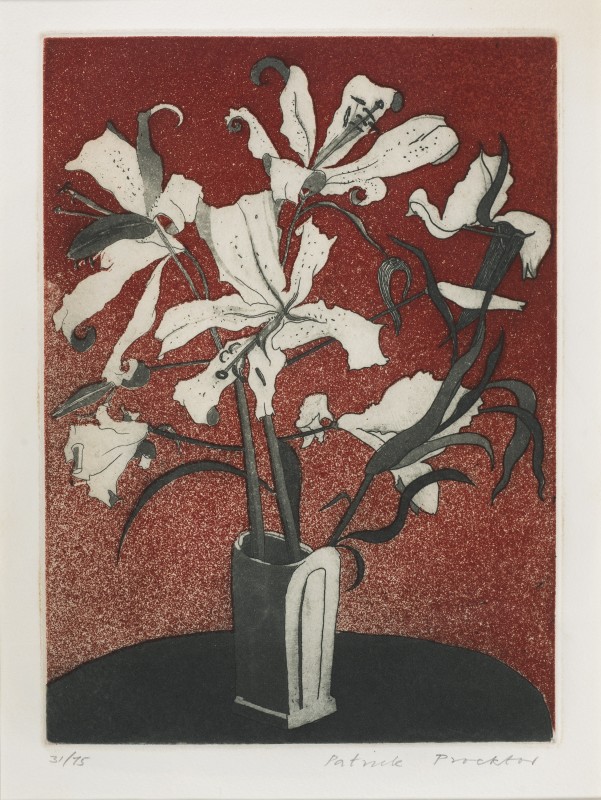 Patrick Procktor RALilies I, 1974Etching and aquatint27 x 20 cm (image)From the edition of 75 impressionsSigned and numbered%3Cdiv%20class%3D%22artist%22%3E%3Cspan%20class%3D%22artist%22%3E%3Cstrong%3EPatrick%20Procktor%20RA%3C/strong%3E%3C/span%3E%3C/div%3E%0D%3Cdiv%20class%3D%22title%22%3E%3Cem%3ELilies%20I%3C/em%3E%2C%201974%3C/div%3E%0D%3Cdiv%20class%3D%22signed_and_dated%22%3ESigned%20and%20numbered%3C/div%3E%0D%3Cdiv%20class%3D%22medium%22%3EEtching%20and%20aquatint%3C/div%3E%0D%3Cdiv%20class%3D%22dimensions%22%3E27%20x%2020%20cm%20%28image%29%3C/div%3E%0D%3Cdiv%20class%3D%22edition_details%22%3EFrom%20the%20edition%20of%2075%20impressions%20%3C/div%3E
Patrick Procktor RALilies I, 1974Etching and aquatint27 x 20 cm (image)From the edition of 75 impressionsSigned and numbered%3Cdiv%20class%3D%22artist%22%3E%3Cspan%20class%3D%22artist%22%3E%3Cstrong%3EPatrick%20Procktor%20RA%3C/strong%3E%3C/span%3E%3C/div%3E%0D%3Cdiv%20class%3D%22title%22%3E%3Cem%3ELilies%20I%3C/em%3E%2C%201974%3C/div%3E%0D%3Cdiv%20class%3D%22signed_and_dated%22%3ESigned%20and%20numbered%3C/div%3E%0D%3Cdiv%20class%3D%22medium%22%3EEtching%20and%20aquatint%3C/div%3E%0D%3Cdiv%20class%3D%22dimensions%22%3E27%20x%2020%20cm%20%28image%29%3C/div%3E%0D%3Cdiv%20class%3D%22edition_details%22%3EFrom%20the%20edition%20of%2075%20impressions%20%3C/div%3E -
 Patrick Procktor RALyme Regis, 1974Watercolour on paper35 x 47 cmSigned and dated lower right%3Cdiv%20class%3D%22artist%22%3E%3Cspan%20class%3D%22artist%22%3E%3Cstrong%3EPatrick%20Procktor%20RA%3C/strong%3E%3C/span%3E%3C/div%3E%0D%3Cdiv%20class%3D%22title%22%3E%3Cem%3ELyme%20Regis%3C/em%3E%2C%201974%3C/div%3E%0D%3Cdiv%20class%3D%22signed_and_dated%22%3ESigned%20and%20dated%20lower%20right%3C/div%3E%0D%3Cdiv%20class%3D%22medium%22%3EWatercolour%20on%20paper%3C/div%3E%0D%3Cdiv%20class%3D%22dimensions%22%3E35%20x%2047%20cm%3C/div%3E
Patrick Procktor RALyme Regis, 1974Watercolour on paper35 x 47 cmSigned and dated lower right%3Cdiv%20class%3D%22artist%22%3E%3Cspan%20class%3D%22artist%22%3E%3Cstrong%3EPatrick%20Procktor%20RA%3C/strong%3E%3C/span%3E%3C/div%3E%0D%3Cdiv%20class%3D%22title%22%3E%3Cem%3ELyme%20Regis%3C/em%3E%2C%201974%3C/div%3E%0D%3Cdiv%20class%3D%22signed_and_dated%22%3ESigned%20and%20dated%20lower%20right%3C/div%3E%0D%3Cdiv%20class%3D%22medium%22%3EWatercolour%20on%20paper%3C/div%3E%0D%3Cdiv%20class%3D%22dimensions%22%3E35%20x%2047%20cm%3C/div%3E -
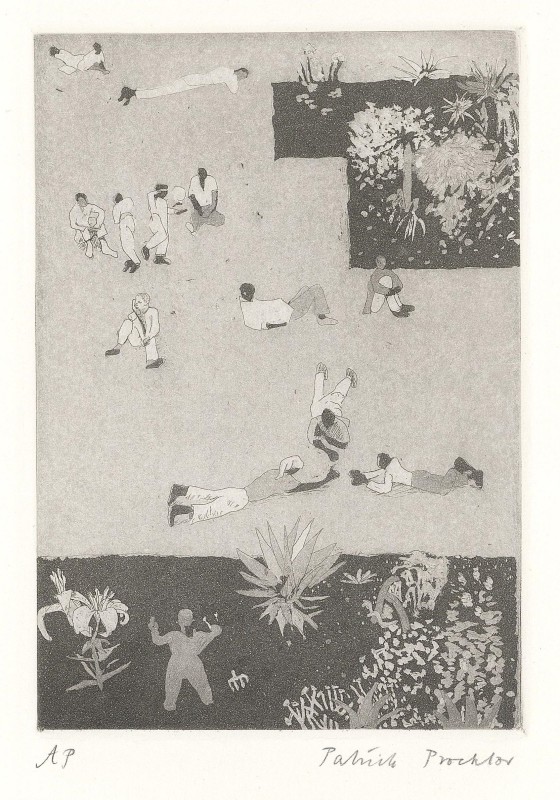 Patrick Procktor RAMunicipal Garden, Johannesburg, 1974Etching and aquatint18 x 13 cm (image)From the edition of 50 impressions plus 5 artist's proofsSigned and inscribed%3Cdiv%20class%3D%22artist%22%3E%3Cspan%20class%3D%22artist%22%3E%3Cstrong%3EPatrick%20Procktor%20RA%3C/strong%3E%3C/span%3E%3C/div%3E%0D%3Cdiv%20class%3D%22title%22%3E%3Cem%3EMunicipal%20Garden%2C%20Johannesburg%3C/em%3E%2C%201974%3C/div%3E%0D%3Cdiv%20class%3D%22signed_and_dated%22%3ESigned%20and%20inscribed%3C/div%3E%0D%3Cdiv%20class%3D%22medium%22%3EEtching%20and%20aquatint%3C/div%3E%0D%3Cdiv%20class%3D%22dimensions%22%3E18%20x%2013%20cm%20%28image%29%3C/div%3E%0D%3Cdiv%20class%3D%22edition_details%22%3EFrom%20the%20edition%20of%2050%20impressions%20plus%205%20artist%27s%20proofs%3C/div%3E
Patrick Procktor RAMunicipal Garden, Johannesburg, 1974Etching and aquatint18 x 13 cm (image)From the edition of 50 impressions plus 5 artist's proofsSigned and inscribed%3Cdiv%20class%3D%22artist%22%3E%3Cspan%20class%3D%22artist%22%3E%3Cstrong%3EPatrick%20Procktor%20RA%3C/strong%3E%3C/span%3E%3C/div%3E%0D%3Cdiv%20class%3D%22title%22%3E%3Cem%3EMunicipal%20Garden%2C%20Johannesburg%3C/em%3E%2C%201974%3C/div%3E%0D%3Cdiv%20class%3D%22signed_and_dated%22%3ESigned%20and%20inscribed%3C/div%3E%0D%3Cdiv%20class%3D%22medium%22%3EEtching%20and%20aquatint%3C/div%3E%0D%3Cdiv%20class%3D%22dimensions%22%3E18%20x%2013%20cm%20%28image%29%3C/div%3E%0D%3Cdiv%20class%3D%22edition_details%22%3EFrom%20the%20edition%20of%2050%20impressions%20plus%205%20artist%27s%20proofs%3C/div%3E -
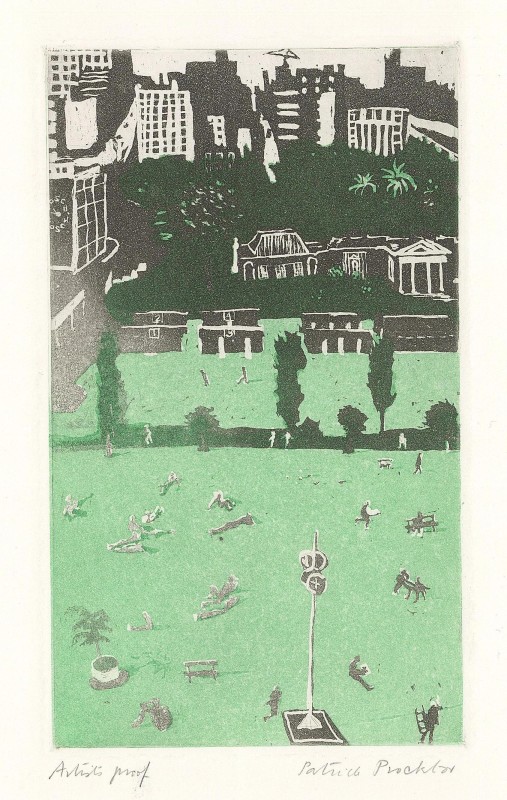 Patrick Procktor RANational Gallery, Johannesburg, 1974Aquatint20 x 12 cm (image)From the edition of 50 impressions plus 5 artist's proofsSigned and inscribed%3Cdiv%20class%3D%22artist%22%3E%3Cspan%20class%3D%22artist%22%3E%3Cstrong%3EPatrick%20Procktor%20RA%3C/strong%3E%3C/span%3E%3C/div%3E%0D%3Cdiv%20class%3D%22title%22%3E%3Cem%3ENational%20Gallery%2C%20Johannesburg%3C/em%3E%2C%201974%3C/div%3E%0D%3Cdiv%20class%3D%22signed_and_dated%22%3ESigned%20and%20inscribed%3C/div%3E%0D%3Cdiv%20class%3D%22medium%22%3EAquatint%3C/div%3E%0D%3Cdiv%20class%3D%22dimensions%22%3E20%20x%2012%20cm%20%28image%29%3C/div%3E%0D%3Cdiv%20class%3D%22edition_details%22%3EFrom%20the%20edition%20of%2050%20impressions%20plus%205%20artist%27s%20proofs%3C/div%3E
Patrick Procktor RANational Gallery, Johannesburg, 1974Aquatint20 x 12 cm (image)From the edition of 50 impressions plus 5 artist's proofsSigned and inscribed%3Cdiv%20class%3D%22artist%22%3E%3Cspan%20class%3D%22artist%22%3E%3Cstrong%3EPatrick%20Procktor%20RA%3C/strong%3E%3C/span%3E%3C/div%3E%0D%3Cdiv%20class%3D%22title%22%3E%3Cem%3ENational%20Gallery%2C%20Johannesburg%3C/em%3E%2C%201974%3C/div%3E%0D%3Cdiv%20class%3D%22signed_and_dated%22%3ESigned%20and%20inscribed%3C/div%3E%0D%3Cdiv%20class%3D%22medium%22%3EAquatint%3C/div%3E%0D%3Cdiv%20class%3D%22dimensions%22%3E20%20x%2012%20cm%20%28image%29%3C/div%3E%0D%3Cdiv%20class%3D%22edition_details%22%3EFrom%20the%20edition%20of%2050%20impressions%20plus%205%20artist%27s%20proofs%3C/div%3E -
 Patrick Procktor RANicholas: Sixth Day, 1974Watercolour on paper17.5 x 25 cmSigned lower left and titled lower right%3Cdiv%20class%3D%22artist%22%3E%3Cspan%20class%3D%22artist%22%3E%3Cstrong%3EPatrick%20Procktor%20RA%3C/strong%3E%3C/span%3E%3C/div%3E%0D%3Cdiv%20class%3D%22title%22%3E%3Cem%3ENicholas%3A%20Sixth%20Day%3C/em%3E%2C%201974%3C/div%3E%0D%3Cdiv%20class%3D%22signed_and_dated%22%3ESigned%20lower%20left%20and%20titled%20lower%20right%3C/div%3E%0D%3Cdiv%20class%3D%22medium%22%3EWatercolour%20on%20paper%3C/div%3E%0D%3Cdiv%20class%3D%22dimensions%22%3E17.5%20x%2025%20cm%3C/div%3E
Patrick Procktor RANicholas: Sixth Day, 1974Watercolour on paper17.5 x 25 cmSigned lower left and titled lower right%3Cdiv%20class%3D%22artist%22%3E%3Cspan%20class%3D%22artist%22%3E%3Cstrong%3EPatrick%20Procktor%20RA%3C/strong%3E%3C/span%3E%3C/div%3E%0D%3Cdiv%20class%3D%22title%22%3E%3Cem%3ENicholas%3A%20Sixth%20Day%3C/em%3E%2C%201974%3C/div%3E%0D%3Cdiv%20class%3D%22signed_and_dated%22%3ESigned%20lower%20left%20and%20titled%20lower%20right%3C/div%3E%0D%3Cdiv%20class%3D%22medium%22%3EWatercolour%20on%20paper%3C/div%3E%0D%3Cdiv%20class%3D%22dimensions%22%3E17.5%20x%2025%20cm%3C/div%3E -
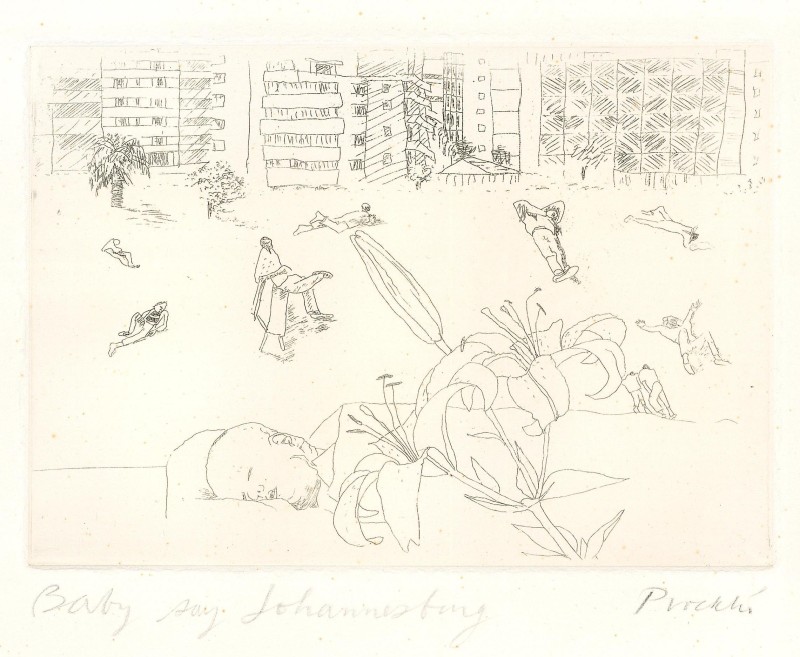 Patrick Procktor RASleeping Baby, Johannesburg , 1974Etching12 x 18 cm (image)A signed proof, inscribed 'Baby say Johannesburg', and before the addition of aquatint. The final state was published in an edition of 50 impressions, by Editions Alecto, London, and printed by JC Editions, London.
Patrick Procktor RASleeping Baby, Johannesburg , 1974Etching12 x 18 cm (image)A signed proof, inscribed 'Baby say Johannesburg', and before the addition of aquatint. The final state was published in an edition of 50 impressions, by Editions Alecto, London, and printed by JC Editions, London.
Signed and titled%3Cdiv%20class%3D%22artist%22%3E%3Cspan%20class%3D%22artist%22%3E%3Cstrong%3EPatrick%20Procktor%20RA%3C/strong%3E%3C/span%3E%3C/div%3E%0D%3Cdiv%20class%3D%22title%22%3E%3Cem%3ESleeping%20Baby%2C%20Johannesburg%20%3C/em%3E%2C%201974%3C/div%3E%0D%3Cdiv%20class%3D%22signed_and_dated%22%3ESigned%20and%20titled%20%3C/div%3E%0D%3Cdiv%20class%3D%22medium%22%3EEtching%20%3C/div%3E%0D%3Cdiv%20class%3D%22dimensions%22%3E12%20x%2018%20cm%20%28image%29%3C/div%3E%0D%3Cdiv%20class%3D%22edition_details%22%3EA%20signed%20proof%2C%20inscribed%20%27Baby%20say%20Johannesburg%27%2C%20and%20before%20the%20addition%20of%20aquatint.%20The%20final%20state%20was%20published%20in%20an%20edition%20of%2050%20impressions%2C%20by%20Editions%20Alecto%2C%20London%2C%20and%20printed%20by%20JC%20Editions%2C%20London.%3Cbr%20/%3E%0A%3C/div%3E -
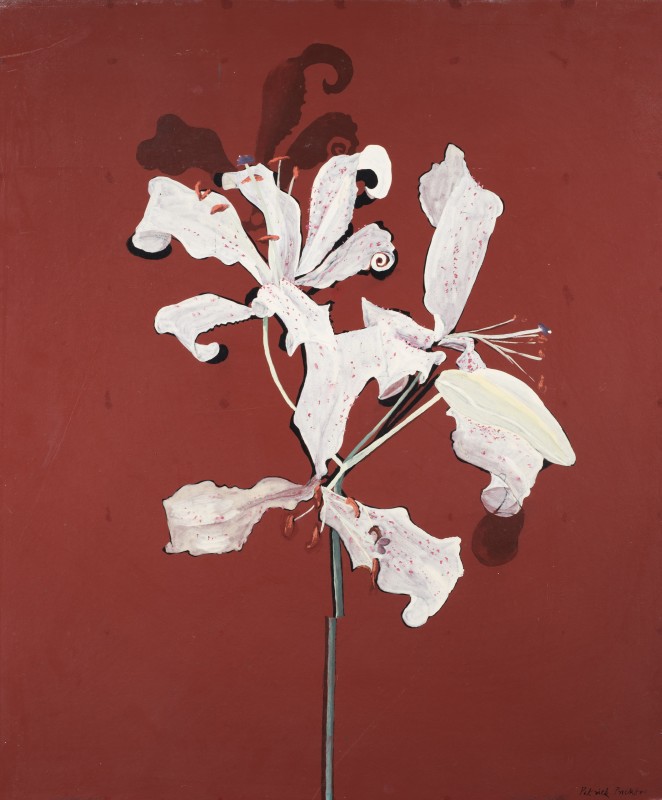 Patrick Procktor RALily, 1973Enamel paint on board72 x 60cmSigned lower right%3Cdiv%20class%3D%22artist%22%3E%3Cspan%20class%3D%22artist%22%3E%3Cstrong%3EPatrick%20Procktor%20RA%3C/strong%3E%3C/span%3E%3C/div%3E%0D%3Cdiv%20class%3D%22title%22%3E%3Cem%3ELily%3C/em%3E%2C%201973%3C/div%3E%0D%3Cdiv%20class%3D%22signed_and_dated%22%3ESigned%20lower%20right%3C/div%3E%0D%3Cdiv%20class%3D%22medium%22%3EEnamel%20paint%20on%20board%3C/div%3E%0D%3Cdiv%20class%3D%22dimensions%22%3E72%20x%2060cm%3C/div%3E
Patrick Procktor RALily, 1973Enamel paint on board72 x 60cmSigned lower right%3Cdiv%20class%3D%22artist%22%3E%3Cspan%20class%3D%22artist%22%3E%3Cstrong%3EPatrick%20Procktor%20RA%3C/strong%3E%3C/span%3E%3C/div%3E%0D%3Cdiv%20class%3D%22title%22%3E%3Cem%3ELily%3C/em%3E%2C%201973%3C/div%3E%0D%3Cdiv%20class%3D%22signed_and_dated%22%3ESigned%20lower%20right%3C/div%3E%0D%3Cdiv%20class%3D%22medium%22%3EEnamel%20paint%20on%20board%3C/div%3E%0D%3Cdiv%20class%3D%22dimensions%22%3E72%20x%2060cm%3C/div%3E -
 Patrick Procktor RARegent's Park, 1973Watercolour on paper laid on card55 x 86 cmSigned and dated lower right%3Cdiv%20class%3D%22artist%22%3E%3Cspan%20class%3D%22artist%22%3E%3Cstrong%3EPatrick%20Procktor%20RA%3C/strong%3E%3C/span%3E%3C/div%3E%0D%3Cdiv%20class%3D%22title%22%3E%3Cem%3ERegent%27s%20Park%3C/em%3E%2C%201973%3C/div%3E%0D%3Cdiv%20class%3D%22signed_and_dated%22%3ESigned%20and%20dated%20lower%20right%3C/div%3E%0D%3Cdiv%20class%3D%22medium%22%3EWatercolour%20on%20paper%20laid%20on%20card%3C/div%3E%0D%3Cdiv%20class%3D%22dimensions%22%3E55%20x%2086%20cm%3C/div%3E
Patrick Procktor RARegent's Park, 1973Watercolour on paper laid on card55 x 86 cmSigned and dated lower right%3Cdiv%20class%3D%22artist%22%3E%3Cspan%20class%3D%22artist%22%3E%3Cstrong%3EPatrick%20Procktor%20RA%3C/strong%3E%3C/span%3E%3C/div%3E%0D%3Cdiv%20class%3D%22title%22%3E%3Cem%3ERegent%27s%20Park%3C/em%3E%2C%201973%3C/div%3E%0D%3Cdiv%20class%3D%22signed_and_dated%22%3ESigned%20and%20dated%20lower%20right%3C/div%3E%0D%3Cdiv%20class%3D%22medium%22%3EWatercolour%20on%20paper%20laid%20on%20card%3C/div%3E%0D%3Cdiv%20class%3D%22dimensions%22%3E55%20x%2086%20cm%3C/div%3E -
 Patrick Procktor RACopenhagen, Panorama III, 1972Oil on canvas57.9 x 80.7 cm%3Cdiv%20class%3D%22artist%22%3E%3Cspan%20class%3D%22artist%22%3E%3Cstrong%3EPatrick%20Procktor%20RA%3C/strong%3E%3C/span%3E%3C/div%3E%0D%3Cdiv%20class%3D%22title%22%3E%3Cem%3ECopenhagen%2C%20Panorama%20III%3C/em%3E%2C%201972%3C/div%3E%0D%3Cdiv%20class%3D%22medium%22%3EOil%20on%20canvas%20%3C/div%3E%0D%3Cdiv%20class%3D%22dimensions%22%3E57.9%20x%2080.7%20cm%3C/div%3E
Patrick Procktor RACopenhagen, Panorama III, 1972Oil on canvas57.9 x 80.7 cm%3Cdiv%20class%3D%22artist%22%3E%3Cspan%20class%3D%22artist%22%3E%3Cstrong%3EPatrick%20Procktor%20RA%3C/strong%3E%3C/span%3E%3C/div%3E%0D%3Cdiv%20class%3D%22title%22%3E%3Cem%3ECopenhagen%2C%20Panorama%20III%3C/em%3E%2C%201972%3C/div%3E%0D%3Cdiv%20class%3D%22medium%22%3EOil%20on%20canvas%20%3C/div%3E%0D%3Cdiv%20class%3D%22dimensions%22%3E57.9%20x%2080.7%20cm%3C/div%3E -
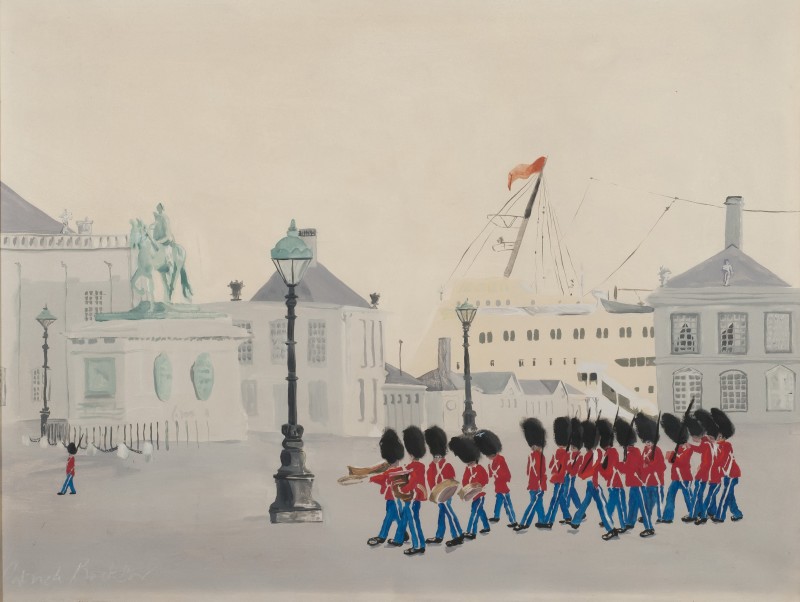 Patrick Procktor RAGuardsmen in Copenhagen, 1972Oil on canvas68 x 90 cmSigned lower left%3Cdiv%20class%3D%22artist%22%3E%3Cspan%20class%3D%22artist%22%3E%3Cstrong%3EPatrick%20Procktor%20RA%3C/strong%3E%3C/span%3E%3C/div%3E%0D%3Cdiv%20class%3D%22title%22%3E%3Cem%3EGuardsmen%20in%20Copenhagen%3C/em%3E%2C%201972%3C/div%3E%0D%3Cdiv%20class%3D%22signed_and_dated%22%3ESigned%20lower%20left%3C/div%3E%0D%3Cdiv%20class%3D%22medium%22%3EOil%20on%20canvas%3C/div%3E%0D%3Cdiv%20class%3D%22dimensions%22%3E68%20x%2090%20cm%3C/div%3E
Patrick Procktor RAGuardsmen in Copenhagen, 1972Oil on canvas68 x 90 cmSigned lower left%3Cdiv%20class%3D%22artist%22%3E%3Cspan%20class%3D%22artist%22%3E%3Cstrong%3EPatrick%20Procktor%20RA%3C/strong%3E%3C/span%3E%3C/div%3E%0D%3Cdiv%20class%3D%22title%22%3E%3Cem%3EGuardsmen%20in%20Copenhagen%3C/em%3E%2C%201972%3C/div%3E%0D%3Cdiv%20class%3D%22signed_and_dated%22%3ESigned%20lower%20left%3C/div%3E%0D%3Cdiv%20class%3D%22medium%22%3EOil%20on%20canvas%3C/div%3E%0D%3Cdiv%20class%3D%22dimensions%22%3E68%20x%2090%20cm%3C/div%3E -
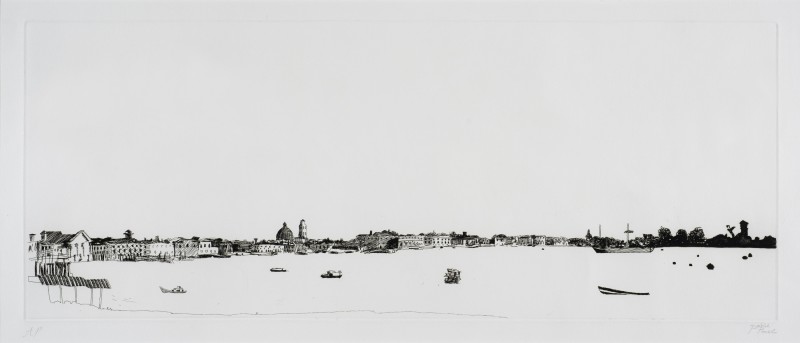 Patrick Procktor RARiva I, 1972Etching27.5 x 69.5 cm (image)From the edition of 75 impressions plus 7 or 8 artist's proofsSigned and inscribed%3Cdiv%20class%3D%22artist%22%3E%3Cspan%20class%3D%22artist%22%3E%3Cstrong%3EPatrick%20Procktor%20RA%3C/strong%3E%3C/span%3E%3C/div%3E%0D%3Cdiv%20class%3D%22title%22%3E%3Cem%3ERiva%20I%3C/em%3E%2C%201972%3C/div%3E%0D%3Cdiv%20class%3D%22signed_and_dated%22%3ESigned%20and%20inscribed%3C/div%3E%0D%3Cdiv%20class%3D%22medium%22%3EEtching%3C/div%3E%0D%3Cdiv%20class%3D%22dimensions%22%3E27.5%20x%2069.5%20cm%20%28image%29%3C/div%3E%0D%3Cdiv%20class%3D%22edition_details%22%3EFrom%20the%20edition%20of%2075%20impressions%20plus%207%20or%208%20artist%27s%20proofs%3C/div%3E
Patrick Procktor RARiva I, 1972Etching27.5 x 69.5 cm (image)From the edition of 75 impressions plus 7 or 8 artist's proofsSigned and inscribed%3Cdiv%20class%3D%22artist%22%3E%3Cspan%20class%3D%22artist%22%3E%3Cstrong%3EPatrick%20Procktor%20RA%3C/strong%3E%3C/span%3E%3C/div%3E%0D%3Cdiv%20class%3D%22title%22%3E%3Cem%3ERiva%20I%3C/em%3E%2C%201972%3C/div%3E%0D%3Cdiv%20class%3D%22signed_and_dated%22%3ESigned%20and%20inscribed%3C/div%3E%0D%3Cdiv%20class%3D%22medium%22%3EEtching%3C/div%3E%0D%3Cdiv%20class%3D%22dimensions%22%3E27.5%20x%2069.5%20cm%20%28image%29%3C/div%3E%0D%3Cdiv%20class%3D%22edition_details%22%3EFrom%20the%20edition%20of%2075%20impressions%20plus%207%20or%208%20artist%27s%20proofs%3C/div%3E -
 Patrick Procktor RATraghetto, 1972Etching and aquatint63 x 44 cm (image)Unpublished; edition of 3 or 4 proofsSigned and inscribed 'AP'%3Cdiv%20class%3D%22artist%22%3E%3Cspan%20class%3D%22artist%22%3E%3Cstrong%3EPatrick%20Procktor%20RA%3C/strong%3E%3C/span%3E%3C/div%3E%0D%3Cdiv%20class%3D%22title%22%3E%3Cem%3ETraghetto%3C/em%3E%2C%201972%3C/div%3E%0D%3Cdiv%20class%3D%22signed_and_dated%22%3ESigned%20and%20inscribed%20%27AP%27%3C/div%3E%0D%3Cdiv%20class%3D%22medium%22%3EEtching%20and%20aquatint%3C/div%3E%0D%3Cdiv%20class%3D%22dimensions%22%3E63%20x%2044%20cm%20%28image%29%3C/div%3E%0D%3Cdiv%20class%3D%22edition_details%22%3EUnpublished%3B%20edition%20of%203%20or%204%20proofs%3C/div%3E
Patrick Procktor RATraghetto, 1972Etching and aquatint63 x 44 cm (image)Unpublished; edition of 3 or 4 proofsSigned and inscribed 'AP'%3Cdiv%20class%3D%22artist%22%3E%3Cspan%20class%3D%22artist%22%3E%3Cstrong%3EPatrick%20Procktor%20RA%3C/strong%3E%3C/span%3E%3C/div%3E%0D%3Cdiv%20class%3D%22title%22%3E%3Cem%3ETraghetto%3C/em%3E%2C%201972%3C/div%3E%0D%3Cdiv%20class%3D%22signed_and_dated%22%3ESigned%20and%20inscribed%20%27AP%27%3C/div%3E%0D%3Cdiv%20class%3D%22medium%22%3EEtching%20and%20aquatint%3C/div%3E%0D%3Cdiv%20class%3D%22dimensions%22%3E63%20x%2044%20cm%20%28image%29%3C/div%3E%0D%3Cdiv%20class%3D%22edition_details%22%3EUnpublished%3B%20edition%20of%203%20or%204%20proofs%3C/div%3E -
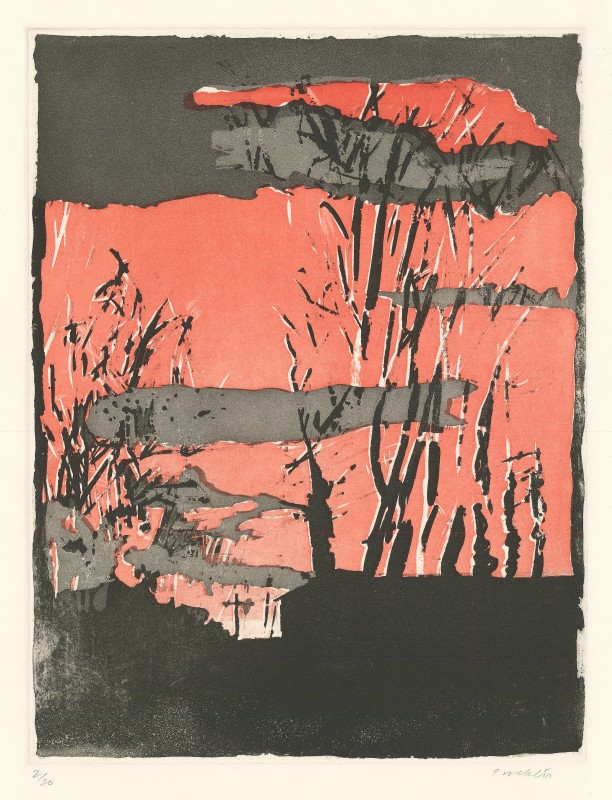 Patrick Procktor RAEaster/Calvary, 1971Aquatint with sugar-lift49 x 37 cm (image)From the edition of 20 impressionsSigned and numbered%3Cdiv%20class%3D%22artist%22%3E%3Cspan%20class%3D%22artist%22%3E%3Cstrong%3EPatrick%20Procktor%20RA%3C/strong%3E%3C/span%3E%3C/div%3E%0D%3Cdiv%20class%3D%22title%22%3E%3Cem%3EEaster/Calvary%3C/em%3E%2C%201971%3C/div%3E%0D%3Cdiv%20class%3D%22signed_and_dated%22%3ESigned%20and%20numbered%20%3C/div%3E%0D%3Cdiv%20class%3D%22medium%22%3EAquatint%20with%20sugar-lift%3C/div%3E%0D%3Cdiv%20class%3D%22dimensions%22%3E49%20x%2037%20cm%20%28image%29%3C/div%3E%0D%3Cdiv%20class%3D%22edition_details%22%3EFrom%20the%20edition%20of%2020%20impressions%3C/div%3E
Patrick Procktor RAEaster/Calvary, 1971Aquatint with sugar-lift49 x 37 cm (image)From the edition of 20 impressionsSigned and numbered%3Cdiv%20class%3D%22artist%22%3E%3Cspan%20class%3D%22artist%22%3E%3Cstrong%3EPatrick%20Procktor%20RA%3C/strong%3E%3C/span%3E%3C/div%3E%0D%3Cdiv%20class%3D%22title%22%3E%3Cem%3EEaster/Calvary%3C/em%3E%2C%201971%3C/div%3E%0D%3Cdiv%20class%3D%22signed_and_dated%22%3ESigned%20and%20numbered%20%3C/div%3E%0D%3Cdiv%20class%3D%22medium%22%3EAquatint%20with%20sugar-lift%3C/div%3E%0D%3Cdiv%20class%3D%22dimensions%22%3E49%20x%2037%20cm%20%28image%29%3C/div%3E%0D%3Cdiv%20class%3D%22edition_details%22%3EFrom%20the%20edition%20of%2020%20impressions%3C/div%3E -
 Patrick Procktor RAMarcus and a Pink - Dirty Knees Proof, 1971Aquatint54 x 35 cm (image)A proof, with green colouring on the knees of the sitter, titled 'Dirty Knees Proof', before the edition of 500 impressionsSigned and titled%3Cdiv%20class%3D%22artist%22%3E%3Cspan%20class%3D%22artist%22%3E%3Cstrong%3EPatrick%20Procktor%20RA%3C/strong%3E%3C/span%3E%3C/div%3E%0D%3Cdiv%20class%3D%22title%22%3E%3Cem%3EMarcus%20and%20a%20Pink%20-%20Dirty%20Knees%20Proof%3C/em%3E%2C%201971%3C/div%3E%0D%3Cdiv%20class%3D%22signed_and_dated%22%3ESigned%20and%20titled%3C/div%3E%0D%3Cdiv%20class%3D%22medium%22%3EAquatint%3C/div%3E%0D%3Cdiv%20class%3D%22dimensions%22%3E54%20x%2035%20cm%20%28image%29%3C/div%3E%0D%3Cdiv%20class%3D%22edition_details%22%3EA%20proof%2C%20with%20green%20colouring%20on%20the%20knees%20of%20the%20sitter%2C%20titled%20%27Dirty%20Knees%20Proof%27%2C%20before%20the%20edition%20of%20500%20impressions%20%3C/div%3E
Patrick Procktor RAMarcus and a Pink - Dirty Knees Proof, 1971Aquatint54 x 35 cm (image)A proof, with green colouring on the knees of the sitter, titled 'Dirty Knees Proof', before the edition of 500 impressionsSigned and titled%3Cdiv%20class%3D%22artist%22%3E%3Cspan%20class%3D%22artist%22%3E%3Cstrong%3EPatrick%20Procktor%20RA%3C/strong%3E%3C/span%3E%3C/div%3E%0D%3Cdiv%20class%3D%22title%22%3E%3Cem%3EMarcus%20and%20a%20Pink%20-%20Dirty%20Knees%20Proof%3C/em%3E%2C%201971%3C/div%3E%0D%3Cdiv%20class%3D%22signed_and_dated%22%3ESigned%20and%20titled%3C/div%3E%0D%3Cdiv%20class%3D%22medium%22%3EAquatint%3C/div%3E%0D%3Cdiv%20class%3D%22dimensions%22%3E54%20x%2035%20cm%20%28image%29%3C/div%3E%0D%3Cdiv%20class%3D%22edition_details%22%3EA%20proof%2C%20with%20green%20colouring%20on%20the%20knees%20of%20the%20sitter%2C%20titled%20%27Dirty%20Knees%20Proof%27%2C%20before%20the%20edition%20of%20500%20impressions%20%3C/div%3E -
 Patrick Procktor RANorthern Lass, 1971Lithograph60 x 49 cmFrom the edition of 65 impressions plus 18 APsSigned and numbered%3Cdiv%20class%3D%22artist%22%3E%3Cspan%20class%3D%22artist%22%3E%3Cstrong%3EPatrick%20Procktor%20RA%3C/strong%3E%3C/span%3E%3C/div%3E%0D%3Cdiv%20class%3D%22title%22%3E%3Cem%3ENorthern%20Lass%3C/em%3E%2C%201971%3C/div%3E%0D%3Cdiv%20class%3D%22signed_and_dated%22%3ESigned%20and%20numbered%3C/div%3E%0D%3Cdiv%20class%3D%22medium%22%3ELithograph%3C/div%3E%0D%3Cdiv%20class%3D%22dimensions%22%3E60%20x%2049%20cm%20%3C/div%3E%0D%3Cdiv%20class%3D%22edition_details%22%3EFrom%20the%20edition%20of%2065%20impressions%20plus%2018%20APs%3C/div%3E
Patrick Procktor RANorthern Lass, 1971Lithograph60 x 49 cmFrom the edition of 65 impressions plus 18 APsSigned and numbered%3Cdiv%20class%3D%22artist%22%3E%3Cspan%20class%3D%22artist%22%3E%3Cstrong%3EPatrick%20Procktor%20RA%3C/strong%3E%3C/span%3E%3C/div%3E%0D%3Cdiv%20class%3D%22title%22%3E%3Cem%3ENorthern%20Lass%3C/em%3E%2C%201971%3C/div%3E%0D%3Cdiv%20class%3D%22signed_and_dated%22%3ESigned%20and%20numbered%3C/div%3E%0D%3Cdiv%20class%3D%22medium%22%3ELithograph%3C/div%3E%0D%3Cdiv%20class%3D%22dimensions%22%3E60%20x%2049%20cm%20%3C/div%3E%0D%3Cdiv%20class%3D%22edition_details%22%3EFrom%20the%20edition%20of%2065%20impressions%20plus%2018%20APs%3C/div%3E -
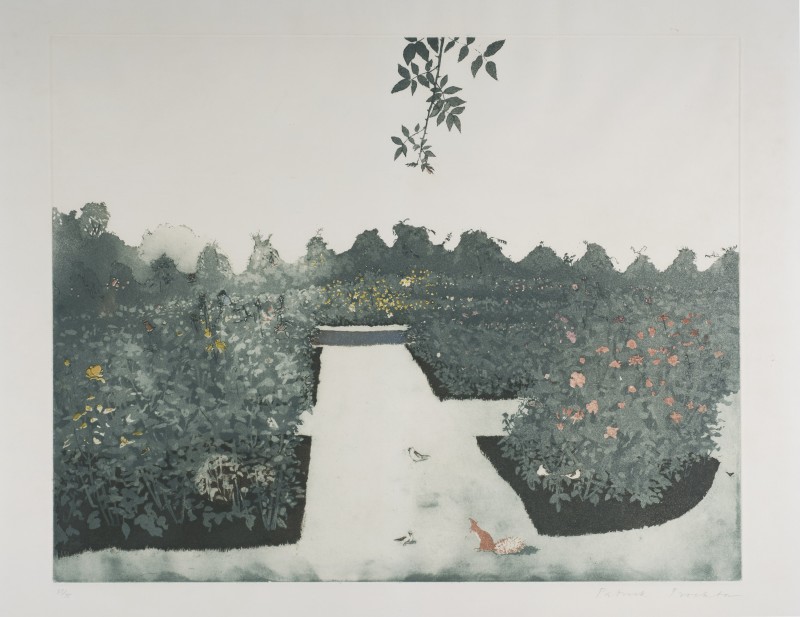 Patrick Procktor RAQueen Mary's Rose Garden, Regent's Park, in November, 1971Aquatint58 x 69 cm (image)From the edition of 75 impressionsSigned and numbered%3Cdiv%20class%3D%22artist%22%3E%3Cspan%20class%3D%22artist%22%3E%3Cstrong%3EPatrick%20Procktor%20RA%3C/strong%3E%3C/span%3E%3C/div%3E%0D%3Cdiv%20class%3D%22title%22%3E%3Cem%3EQueen%20Mary%27s%20Rose%20Garden%2C%20Regent%27s%20Park%2C%20in%20November%3C/em%3E%2C%201971%3C/div%3E%0D%3Cdiv%20class%3D%22signed_and_dated%22%3ESigned%20and%20numbered%20%3C/div%3E%0D%3Cdiv%20class%3D%22medium%22%3EAquatint%20%3C/div%3E%0D%3Cdiv%20class%3D%22dimensions%22%3E58%20x%2069%20cm%20%28image%29%3C/div%3E%0D%3Cdiv%20class%3D%22edition_details%22%3EFrom%20the%20edition%20of%2075%20impressions%20%3C/div%3E
Patrick Procktor RAQueen Mary's Rose Garden, Regent's Park, in November, 1971Aquatint58 x 69 cm (image)From the edition of 75 impressionsSigned and numbered%3Cdiv%20class%3D%22artist%22%3E%3Cspan%20class%3D%22artist%22%3E%3Cstrong%3EPatrick%20Procktor%20RA%3C/strong%3E%3C/span%3E%3C/div%3E%0D%3Cdiv%20class%3D%22title%22%3E%3Cem%3EQueen%20Mary%27s%20Rose%20Garden%2C%20Regent%27s%20Park%2C%20in%20November%3C/em%3E%2C%201971%3C/div%3E%0D%3Cdiv%20class%3D%22signed_and_dated%22%3ESigned%20and%20numbered%20%3C/div%3E%0D%3Cdiv%20class%3D%22medium%22%3EAquatint%20%3C/div%3E%0D%3Cdiv%20class%3D%22dimensions%22%3E58%20x%2069%20cm%20%28image%29%3C/div%3E%0D%3Cdiv%20class%3D%22edition_details%22%3EFrom%20the%20edition%20of%2075%20impressions%20%3C/div%3E -
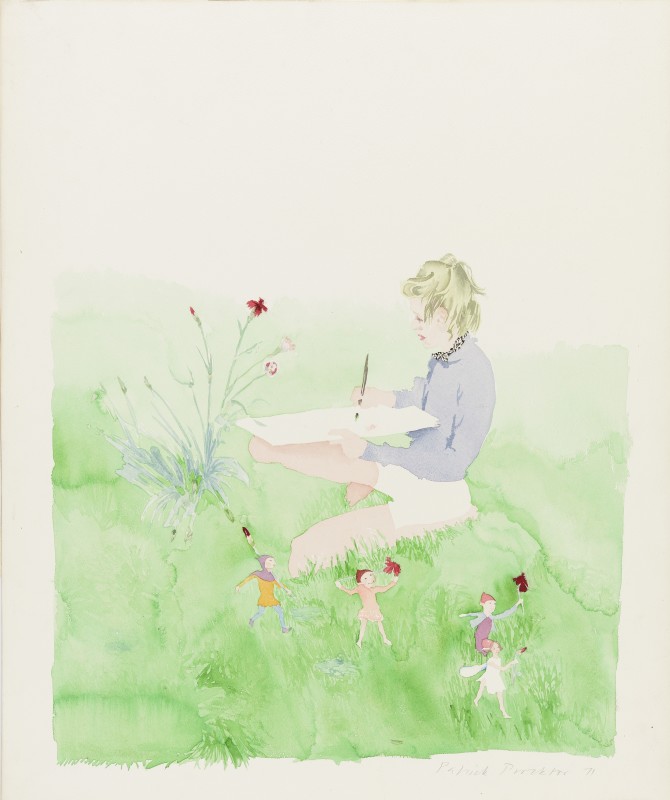 Patrick Procktor RAUntitled (A Young Artist), 1971Watercolour on paper laid on card67 x 56 cmSigned and dated lower right%3Cdiv%20class%3D%22artist%22%3E%3Cspan%20class%3D%22artist%22%3E%3Cstrong%3EPatrick%20Procktor%20RA%3C/strong%3E%3C/span%3E%3C/div%3E%0D%3Cdiv%20class%3D%22title%22%3E%3Cem%3EUntitled%20%28A%20Young%20Artist%29%3C/em%3E%2C%201971%3C/div%3E%0D%3Cdiv%20class%3D%22signed_and_dated%22%3ESigned%20and%20dated%20lower%20right%3C/div%3E%0D%3Cdiv%20class%3D%22medium%22%3EWatercolour%20on%20paper%20laid%20on%20card%3C/div%3E%0D%3Cdiv%20class%3D%22dimensions%22%3E67%20x%2056%20cm%3C/div%3E
Patrick Procktor RAUntitled (A Young Artist), 1971Watercolour on paper laid on card67 x 56 cmSigned and dated lower right%3Cdiv%20class%3D%22artist%22%3E%3Cspan%20class%3D%22artist%22%3E%3Cstrong%3EPatrick%20Procktor%20RA%3C/strong%3E%3C/span%3E%3C/div%3E%0D%3Cdiv%20class%3D%22title%22%3E%3Cem%3EUntitled%20%28A%20Young%20Artist%29%3C/em%3E%2C%201971%3C/div%3E%0D%3Cdiv%20class%3D%22signed_and_dated%22%3ESigned%20and%20dated%20lower%20right%3C/div%3E%0D%3Cdiv%20class%3D%22medium%22%3EWatercolour%20on%20paper%20laid%20on%20card%3C/div%3E%0D%3Cdiv%20class%3D%22dimensions%22%3E67%20x%2056%20cm%3C/div%3E -
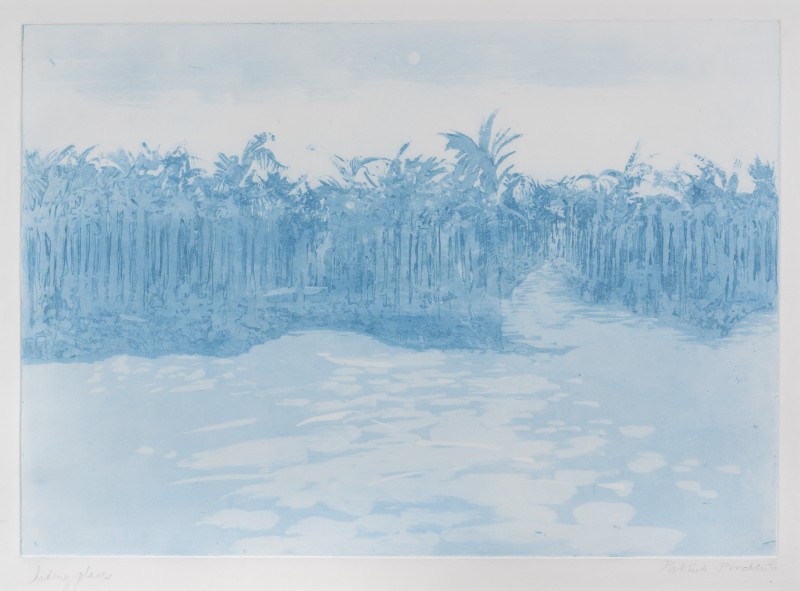 Patrick Procktor RAHiding Places of my Power, 1970Aquatint43 x 62 cm (image)Unpublished; edition of about 5 proofsSigned and annotated in margins%3Cdiv%20class%3D%22artist%22%3E%3Cspan%20class%3D%22artist%22%3E%3Cstrong%3EPatrick%20Procktor%20RA%3C/strong%3E%3C/span%3E%3C/div%3E%0D%3Cdiv%20class%3D%22title%22%3E%3Cem%3EHiding%20Places%20of%20my%20Power%3C/em%3E%2C%201970%3C/div%3E%0D%3Cdiv%20class%3D%22signed_and_dated%22%3ESigned%20and%20annotated%20in%20margins%20%3C/div%3E%0D%3Cdiv%20class%3D%22medium%22%3EAquatint%20%3C/div%3E%0D%3Cdiv%20class%3D%22dimensions%22%3E43%20x%2062%20cm%20%28image%29%3C/div%3E%0D%3Cdiv%20class%3D%22edition_details%22%3EUnpublished%3B%20edition%20of%20about%205%20proofs%3C/div%3E
Patrick Procktor RAHiding Places of my Power, 1970Aquatint43 x 62 cm (image)Unpublished; edition of about 5 proofsSigned and annotated in margins%3Cdiv%20class%3D%22artist%22%3E%3Cspan%20class%3D%22artist%22%3E%3Cstrong%3EPatrick%20Procktor%20RA%3C/strong%3E%3C/span%3E%3C/div%3E%0D%3Cdiv%20class%3D%22title%22%3E%3Cem%3EHiding%20Places%20of%20my%20Power%3C/em%3E%2C%201970%3C/div%3E%0D%3Cdiv%20class%3D%22signed_and_dated%22%3ESigned%20and%20annotated%20in%20margins%20%3C/div%3E%0D%3Cdiv%20class%3D%22medium%22%3EAquatint%20%3C/div%3E%0D%3Cdiv%20class%3D%22dimensions%22%3E43%20x%2062%20cm%20%28image%29%3C/div%3E%0D%3Cdiv%20class%3D%22edition_details%22%3EUnpublished%3B%20edition%20of%20about%205%20proofs%3C/div%3E -
 Patrick Procktor RAHimalayan Sunset, 1970Watercolour on paper31 x 49 cmSigned lower right%3Cdiv%20class%3D%22artist%22%3E%3Cspan%20class%3D%22artist%22%3E%3Cstrong%3EPatrick%20Procktor%20RA%3C/strong%3E%3C/span%3E%3C/div%3E%0D%3Cdiv%20class%3D%22title%22%3E%3Cem%3EHimalayan%20Sunset%3C/em%3E%2C%201970%3C/div%3E%0D%3Cdiv%20class%3D%22signed_and_dated%22%3ESigned%20lower%20right%3C/div%3E%0D%3Cdiv%20class%3D%22medium%22%3EWatercolour%20on%20paper%3C/div%3E%0D%3Cdiv%20class%3D%22dimensions%22%3E31%20x%2049%20cm%3C/div%3E
Patrick Procktor RAHimalayan Sunset, 1970Watercolour on paper31 x 49 cmSigned lower right%3Cdiv%20class%3D%22artist%22%3E%3Cspan%20class%3D%22artist%22%3E%3Cstrong%3EPatrick%20Procktor%20RA%3C/strong%3E%3C/span%3E%3C/div%3E%0D%3Cdiv%20class%3D%22title%22%3E%3Cem%3EHimalayan%20Sunset%3C/em%3E%2C%201970%3C/div%3E%0D%3Cdiv%20class%3D%22signed_and_dated%22%3ESigned%20lower%20right%3C/div%3E%0D%3Cdiv%20class%3D%22medium%22%3EWatercolour%20on%20paper%3C/div%3E%0D%3Cdiv%20class%3D%22dimensions%22%3E31%20x%2049%20cm%3C/div%3E -
 Patrick Procktor RAKama Dev (Ossie Clark), 1970Watercolour on paper35 x 25 cmSigned, dated and titled lower left%3Cdiv%20class%3D%22artist%22%3E%3Cspan%20class%3D%22artist%22%3E%3Cstrong%3EPatrick%20Procktor%20RA%3C/strong%3E%3C/span%3E%3C/div%3E%0D%3Cdiv%20class%3D%22title%22%3E%3Cem%3EKama%20Dev%20%28Ossie%20Clark%29%3C/em%3E%2C%201970%3C/div%3E%0D%3Cdiv%20class%3D%22signed_and_dated%22%3ESigned%2C%20dated%20and%20titled%20lower%20left%3C/div%3E%0D%3Cdiv%20class%3D%22medium%22%3EWatercolour%20on%20paper%3C/div%3E%0D%3Cdiv%20class%3D%22dimensions%22%3E35%20x%2025%20cm%3C/div%3E
Patrick Procktor RAKama Dev (Ossie Clark), 1970Watercolour on paper35 x 25 cmSigned, dated and titled lower left%3Cdiv%20class%3D%22artist%22%3E%3Cspan%20class%3D%22artist%22%3E%3Cstrong%3EPatrick%20Procktor%20RA%3C/strong%3E%3C/span%3E%3C/div%3E%0D%3Cdiv%20class%3D%22title%22%3E%3Cem%3EKama%20Dev%20%28Ossie%20Clark%29%3C/em%3E%2C%201970%3C/div%3E%0D%3Cdiv%20class%3D%22signed_and_dated%22%3ESigned%2C%20dated%20and%20titled%20lower%20left%3C/div%3E%0D%3Cdiv%20class%3D%22medium%22%3EWatercolour%20on%20paper%3C/div%3E%0D%3Cdiv%20class%3D%22dimensions%22%3E35%20x%2025%20cm%3C/div%3E -
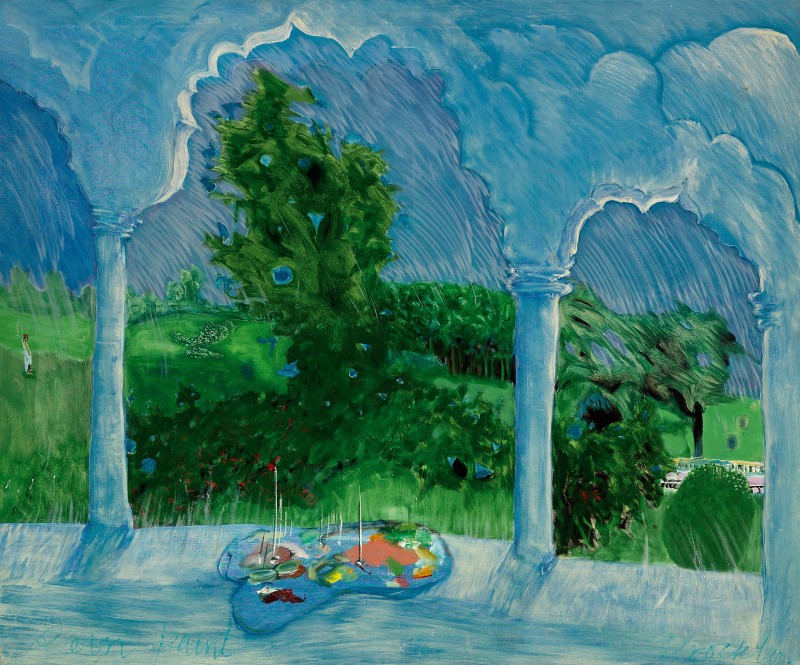 Patrick Procktor RARain Paint, 1970Oil on canvas102 x 122 cmSigned lower right and titled lower left%3Cdiv%20class%3D%22artist%22%3E%3Cspan%20class%3D%22artist%22%3E%3Cstrong%3EPatrick%20Procktor%20RA%3C/strong%3E%3C/span%3E%3C/div%3E%0D%3Cdiv%20class%3D%22title%22%3E%3Cem%3ERain%20Paint%3C/em%3E%2C%201970%3C/div%3E%0D%3Cdiv%20class%3D%22signed_and_dated%22%3ESigned%20lower%20right%20and%20titled%20lower%20left%3C/div%3E%0D%3Cdiv%20class%3D%22medium%22%3EOil%20on%20canvas%3C/div%3E%0D%3Cdiv%20class%3D%22dimensions%22%3E102%20x%20122%20cm%3C/div%3E
Patrick Procktor RARain Paint, 1970Oil on canvas102 x 122 cmSigned lower right and titled lower left%3Cdiv%20class%3D%22artist%22%3E%3Cspan%20class%3D%22artist%22%3E%3Cstrong%3EPatrick%20Procktor%20RA%3C/strong%3E%3C/span%3E%3C/div%3E%0D%3Cdiv%20class%3D%22title%22%3E%3Cem%3ERain%20Paint%3C/em%3E%2C%201970%3C/div%3E%0D%3Cdiv%20class%3D%22signed_and_dated%22%3ESigned%20lower%20right%20and%20titled%20lower%20left%3C/div%3E%0D%3Cdiv%20class%3D%22medium%22%3EOil%20on%20canvas%3C/div%3E%0D%3Cdiv%20class%3D%22dimensions%22%3E102%20x%20122%20cm%3C/div%3E -
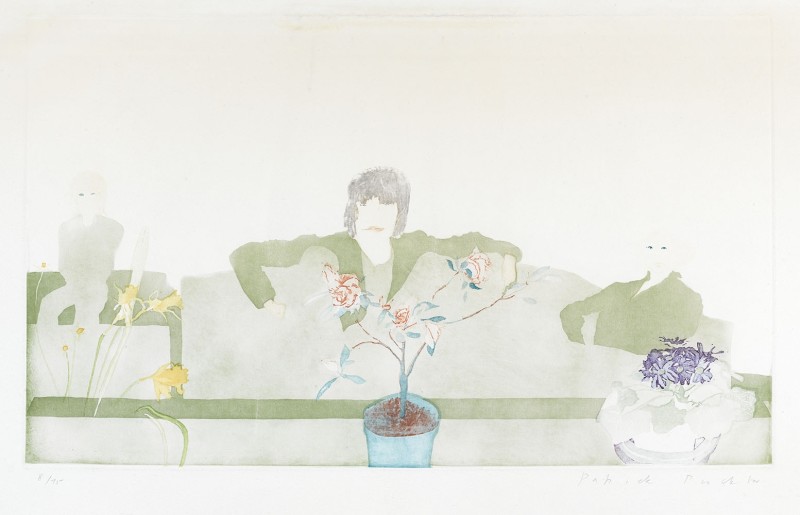 Patrick Procktor RALanguage of Flowers, 1969-70Aquatint45 x 75 cm (image)From the edition of 75 impressionsSigned and numbered%3Cdiv%20class%3D%22artist%22%3E%3Cspan%20class%3D%22artist%22%3E%3Cstrong%3EPatrick%20Procktor%20RA%3C/strong%3E%3C/span%3E%3C/div%3E%0D%3Cdiv%20class%3D%22title%22%3E%3Cem%3ELanguage%20of%20Flowers%3C/em%3E%2C%201969-70%3C/div%3E%0D%3Cdiv%20class%3D%22signed_and_dated%22%3ESigned%20and%20numbered%3C/div%3E%0D%3Cdiv%20class%3D%22medium%22%3EAquatint%20%3C/div%3E%0D%3Cdiv%20class%3D%22dimensions%22%3E45%20x%2075%20cm%20%28image%29%3C/div%3E%0D%3Cdiv%20class%3D%22edition_details%22%3EFrom%20the%20edition%20of%2075%20impressions%20%3C/div%3E
Patrick Procktor RALanguage of Flowers, 1969-70Aquatint45 x 75 cm (image)From the edition of 75 impressionsSigned and numbered%3Cdiv%20class%3D%22artist%22%3E%3Cspan%20class%3D%22artist%22%3E%3Cstrong%3EPatrick%20Procktor%20RA%3C/strong%3E%3C/span%3E%3C/div%3E%0D%3Cdiv%20class%3D%22title%22%3E%3Cem%3ELanguage%20of%20Flowers%3C/em%3E%2C%201969-70%3C/div%3E%0D%3Cdiv%20class%3D%22signed_and_dated%22%3ESigned%20and%20numbered%3C/div%3E%0D%3Cdiv%20class%3D%22medium%22%3EAquatint%20%3C/div%3E%0D%3Cdiv%20class%3D%22dimensions%22%3E45%20x%2075%20cm%20%28image%29%3C/div%3E%0D%3Cdiv%20class%3D%22edition_details%22%3EFrom%20the%20edition%20of%2075%20impressions%20%3C/div%3E -
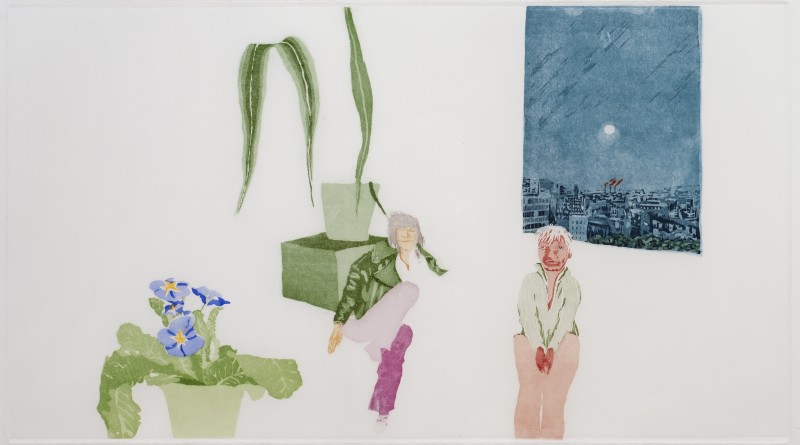 Patrick Procktor RASadie and Prudence, 1969-70Aquatint25 x 45 cm (image)From the edition of 75 impressionsSigned and numbered%3Cdiv%20class%3D%22artist%22%3E%3Cspan%20class%3D%22artist%22%3E%3Cstrong%3EPatrick%20Procktor%20RA%3C/strong%3E%3C/span%3E%3C/div%3E%0D%3Cdiv%20class%3D%22title%22%3E%3Cem%3ESadie%20and%20Prudence%3C/em%3E%2C%201969-70%3C/div%3E%0D%3Cdiv%20class%3D%22signed_and_dated%22%3ESigned%20and%20numbered%3C/div%3E%0D%3Cdiv%20class%3D%22medium%22%3EAquatint%3C/div%3E%0D%3Cdiv%20class%3D%22dimensions%22%3E25%20x%2045%20cm%20%28image%29%3C/div%3E%0D%3Cdiv%20class%3D%22edition_details%22%3EFrom%20the%20edition%20of%2075%20impressions%20%3C/div%3E
Patrick Procktor RASadie and Prudence, 1969-70Aquatint25 x 45 cm (image)From the edition of 75 impressionsSigned and numbered%3Cdiv%20class%3D%22artist%22%3E%3Cspan%20class%3D%22artist%22%3E%3Cstrong%3EPatrick%20Procktor%20RA%3C/strong%3E%3C/span%3E%3C/div%3E%0D%3Cdiv%20class%3D%22title%22%3E%3Cem%3ESadie%20and%20Prudence%3C/em%3E%2C%201969-70%3C/div%3E%0D%3Cdiv%20class%3D%22signed_and_dated%22%3ESigned%20and%20numbered%3C/div%3E%0D%3Cdiv%20class%3D%22medium%22%3EAquatint%3C/div%3E%0D%3Cdiv%20class%3D%22dimensions%22%3E25%20x%2045%20cm%20%28image%29%3C/div%3E%0D%3Cdiv%20class%3D%22edition_details%22%3EFrom%20the%20edition%20of%2075%20impressions%20%3C/div%3E -
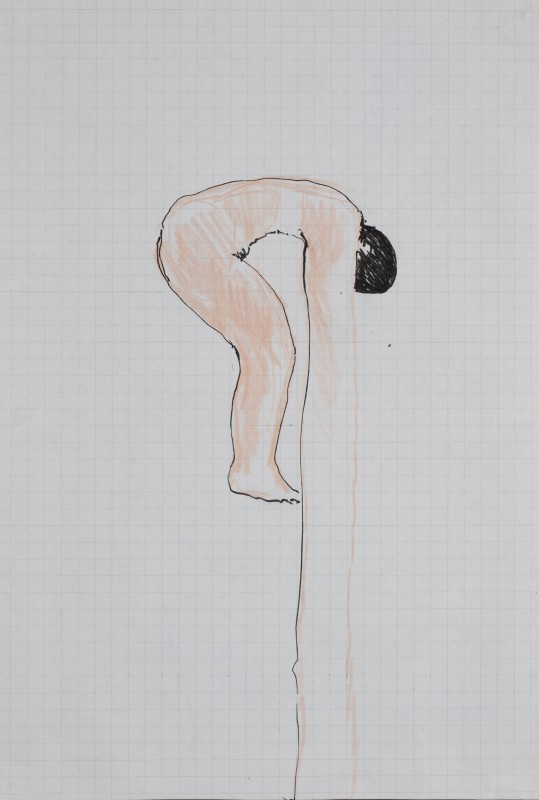 Patrick Procktor RAUntitled (male nude), 1969 (c.)Ink and crayon on graph paper24 x 16.5 cm%3Cdiv%20class%3D%22artist%22%3E%3Cspan%20class%3D%22artist%22%3E%3Cstrong%3EPatrick%20Procktor%20RA%3C/strong%3E%3C/span%3E%3C/div%3E%0D%3Cdiv%20class%3D%22title%22%3E%3Cem%3EUntitled%20%28male%20nude%29%3C/em%3E%2C%201969%20%28c.%29%3C/div%3E%0D%3Cdiv%20class%3D%22medium%22%3EInk%20and%20crayon%20on%20graph%20paper%3C/div%3E%0D%3Cdiv%20class%3D%22dimensions%22%3E24%20x%2016.5%20cm%3C/div%3E
Patrick Procktor RAUntitled (male nude), 1969 (c.)Ink and crayon on graph paper24 x 16.5 cm%3Cdiv%20class%3D%22artist%22%3E%3Cspan%20class%3D%22artist%22%3E%3Cstrong%3EPatrick%20Procktor%20RA%3C/strong%3E%3C/span%3E%3C/div%3E%0D%3Cdiv%20class%3D%22title%22%3E%3Cem%3EUntitled%20%28male%20nude%29%3C/em%3E%2C%201969%20%28c.%29%3C/div%3E%0D%3Cdiv%20class%3D%22medium%22%3EInk%20and%20crayon%20on%20graph%20paper%3C/div%3E%0D%3Cdiv%20class%3D%22dimensions%22%3E24%20x%2016.5%20cm%3C/div%3E -
 Patrick Procktor RAAunt Doris, 1969Oil on canvas26 x 36 cmSigned lower right; dated and titled verso%3Cdiv%20class%3D%22artist%22%3E%3Cspan%20class%3D%22artist%22%3E%3Cstrong%3EPatrick%20Procktor%20RA%3C/strong%3E%3C/span%3E%3C/div%3E%0D%3Cdiv%20class%3D%22title%22%3E%3Cem%3EAunt%20Doris%3C/em%3E%2C%201969%3C/div%3E%0D%3Cdiv%20class%3D%22signed_and_dated%22%3ESigned%20lower%20right%3B%20dated%20and%20titled%20verso%3C/div%3E%0D%3Cdiv%20class%3D%22medium%22%3EOil%20on%20canvas%3C/div%3E%0D%3Cdiv%20class%3D%22dimensions%22%3E26%20x%2036%20cm%3C/div%3E
Patrick Procktor RAAunt Doris, 1969Oil on canvas26 x 36 cmSigned lower right; dated and titled verso%3Cdiv%20class%3D%22artist%22%3E%3Cspan%20class%3D%22artist%22%3E%3Cstrong%3EPatrick%20Procktor%20RA%3C/strong%3E%3C/span%3E%3C/div%3E%0D%3Cdiv%20class%3D%22title%22%3E%3Cem%3EAunt%20Doris%3C/em%3E%2C%201969%3C/div%3E%0D%3Cdiv%20class%3D%22signed_and_dated%22%3ESigned%20lower%20right%3B%20dated%20and%20titled%20verso%3C/div%3E%0D%3Cdiv%20class%3D%22medium%22%3EOil%20on%20canvas%3C/div%3E%0D%3Cdiv%20class%3D%22dimensions%22%3E26%20x%2036%20cm%3C/div%3E -
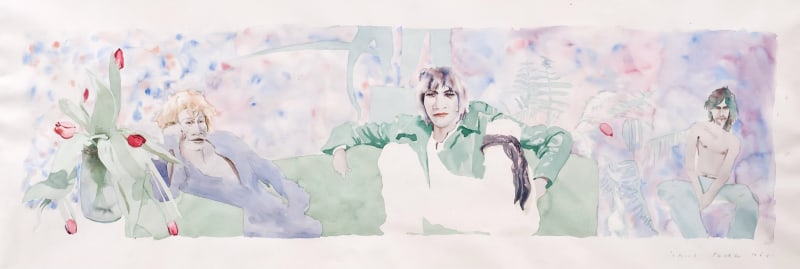 Patrick Procktor RAEgo, 1969Watercolour on paper63 x 101 cmSigned and dated lower right%3Cdiv%20class%3D%22artist%22%3E%3Cspan%20class%3D%22artist%22%3E%3Cstrong%3EPatrick%20Procktor%20RA%3C/strong%3E%3C/span%3E%3C/div%3E%0D%3Cdiv%20class%3D%22title%22%3E%3Cem%3EEgo%3C/em%3E%2C%201969%3C/div%3E%0D%3Cdiv%20class%3D%22signed_and_dated%22%3ESigned%20and%20dated%20lower%20right%3C/div%3E%0D%3Cdiv%20class%3D%22medium%22%3EWatercolour%20on%20paper%3C/div%3E%0D%3Cdiv%20class%3D%22dimensions%22%3E63%20x%20101%20cm%3C/div%3E
Patrick Procktor RAEgo, 1969Watercolour on paper63 x 101 cmSigned and dated lower right%3Cdiv%20class%3D%22artist%22%3E%3Cspan%20class%3D%22artist%22%3E%3Cstrong%3EPatrick%20Procktor%20RA%3C/strong%3E%3C/span%3E%3C/div%3E%0D%3Cdiv%20class%3D%22title%22%3E%3Cem%3EEgo%3C/em%3E%2C%201969%3C/div%3E%0D%3Cdiv%20class%3D%22signed_and_dated%22%3ESigned%20and%20dated%20lower%20right%3C/div%3E%0D%3Cdiv%20class%3D%22medium%22%3EWatercolour%20on%20paper%3C/div%3E%0D%3Cdiv%20class%3D%22dimensions%22%3E63%20x%20101%20cm%3C/div%3E -
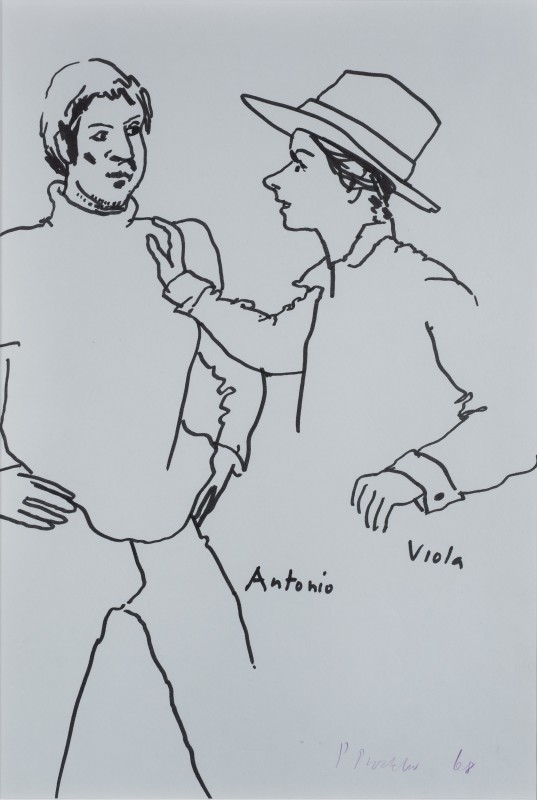 Patrick Procktor RAAntonio and Viola, 1968Ink on paper36 x 25 cmSigned and dated lower right%3Cdiv%20class%3D%22artist%22%3E%3Cspan%20class%3D%22artist%22%3E%3Cstrong%3EPatrick%20Procktor%20RA%3C/strong%3E%3C/span%3E%3C/div%3E%0D%3Cdiv%20class%3D%22title%22%3E%3Cem%3EAntonio%20and%20Viola%3C/em%3E%2C%201968%3C/div%3E%0D%3Cdiv%20class%3D%22signed_and_dated%22%3ESigned%20and%20dated%20lower%20right%3C/div%3E%0D%3Cdiv%20class%3D%22medium%22%3EInk%20on%20paper%3C/div%3E%0D%3Cdiv%20class%3D%22dimensions%22%3E36%20x%2025%20cm%3C/div%3E
Patrick Procktor RAAntonio and Viola, 1968Ink on paper36 x 25 cmSigned and dated lower right%3Cdiv%20class%3D%22artist%22%3E%3Cspan%20class%3D%22artist%22%3E%3Cstrong%3EPatrick%20Procktor%20RA%3C/strong%3E%3C/span%3E%3C/div%3E%0D%3Cdiv%20class%3D%22title%22%3E%3Cem%3EAntonio%20and%20Viola%3C/em%3E%2C%201968%3C/div%3E%0D%3Cdiv%20class%3D%22signed_and_dated%22%3ESigned%20and%20dated%20lower%20right%3C/div%3E%0D%3Cdiv%20class%3D%22medium%22%3EInk%20on%20paper%3C/div%3E%0D%3Cdiv%20class%3D%22dimensions%22%3E36%20x%2025%20cm%3C/div%3E -
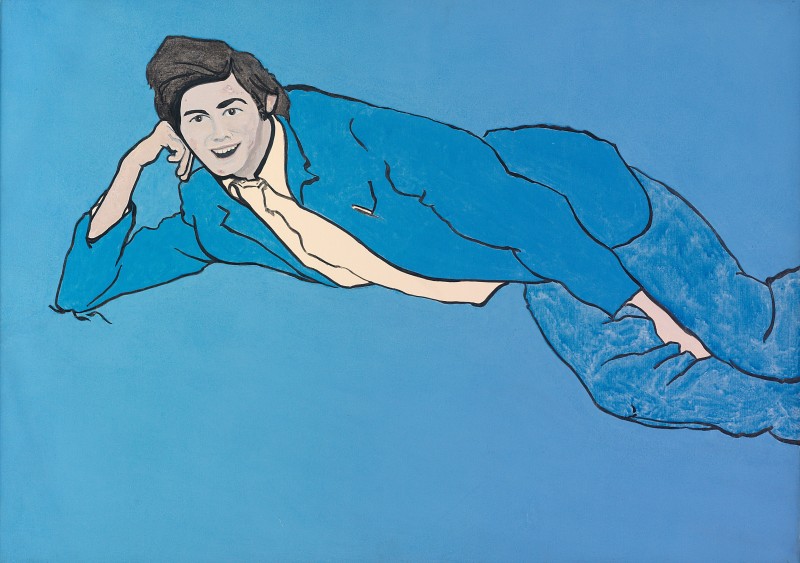 Patrick Procktor RABoy with a Facial Eruption, 1967Acrylic on canvas58 x 81 cmSigned and dated verso%3Cdiv%20class%3D%22artist%22%3E%3Cspan%20class%3D%22artist%22%3E%3Cstrong%3EPatrick%20Procktor%20RA%3C/strong%3E%3C/span%3E%3C/div%3E%0D%3Cdiv%20class%3D%22title%22%3E%3Cem%3EBoy%20with%20a%20Facial%20Eruption%3C/em%3E%2C%201967%3C/div%3E%0D%3Cdiv%20class%3D%22signed_and_dated%22%3ESigned%20and%20dated%20verso%3C/div%3E%0D%3Cdiv%20class%3D%22medium%22%3EAcrylic%20on%20canvas%3C/div%3E%0D%3Cdiv%20class%3D%22dimensions%22%3E58%20x%2081%20cm%3C/div%3E
Patrick Procktor RABoy with a Facial Eruption, 1967Acrylic on canvas58 x 81 cmSigned and dated verso%3Cdiv%20class%3D%22artist%22%3E%3Cspan%20class%3D%22artist%22%3E%3Cstrong%3EPatrick%20Procktor%20RA%3C/strong%3E%3C/span%3E%3C/div%3E%0D%3Cdiv%20class%3D%22title%22%3E%3Cem%3EBoy%20with%20a%20Facial%20Eruption%3C/em%3E%2C%201967%3C/div%3E%0D%3Cdiv%20class%3D%22signed_and_dated%22%3ESigned%20and%20dated%20verso%3C/div%3E%0D%3Cdiv%20class%3D%22medium%22%3EAcrylic%20on%20canvas%3C/div%3E%0D%3Cdiv%20class%3D%22dimensions%22%3E58%20x%2081%20cm%3C/div%3E -
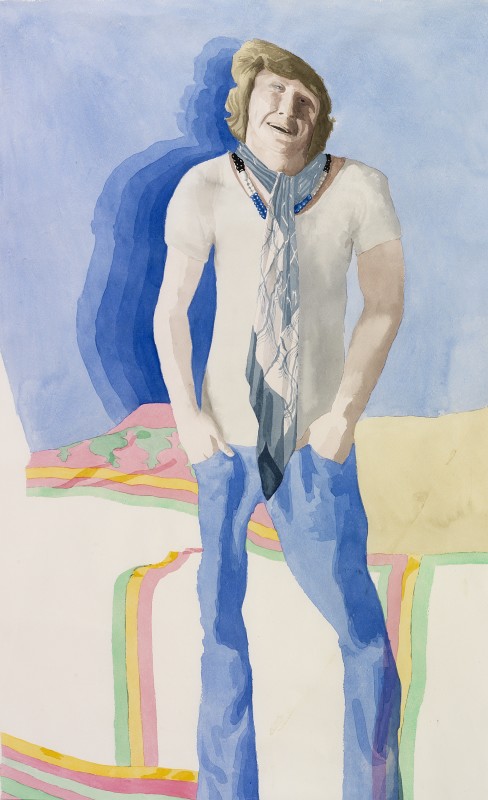 Patrick Procktor RAChristopher Gibbs, 1967Watercolour on paper102 x 69 cmSigned and dated verso%3Cdiv%20class%3D%22artist%22%3E%3Cspan%20class%3D%22artist%22%3E%3Cstrong%3EPatrick%20Procktor%20RA%3C/strong%3E%3C/span%3E%3C/div%3E%0D%3Cdiv%20class%3D%22title%22%3E%3Cem%3EChristopher%20Gibbs%3C/em%3E%2C%201967%3C/div%3E%0D%3Cdiv%20class%3D%22signed_and_dated%22%3ESigned%20and%20dated%20verso%3C/div%3E%0D%3Cdiv%20class%3D%22medium%22%3EWatercolour%20on%20paper%20%3C/div%3E%0D%3Cdiv%20class%3D%22dimensions%22%3E102%20x%2069%20cm%20%3C/div%3E
Patrick Procktor RAChristopher Gibbs, 1967Watercolour on paper102 x 69 cmSigned and dated verso%3Cdiv%20class%3D%22artist%22%3E%3Cspan%20class%3D%22artist%22%3E%3Cstrong%3EPatrick%20Procktor%20RA%3C/strong%3E%3C/span%3E%3C/div%3E%0D%3Cdiv%20class%3D%22title%22%3E%3Cem%3EChristopher%20Gibbs%3C/em%3E%2C%201967%3C/div%3E%0D%3Cdiv%20class%3D%22signed_and_dated%22%3ESigned%20and%20dated%20verso%3C/div%3E%0D%3Cdiv%20class%3D%22medium%22%3EWatercolour%20on%20paper%20%3C/div%3E%0D%3Cdiv%20class%3D%22dimensions%22%3E102%20x%2069%20cm%20%3C/div%3E -
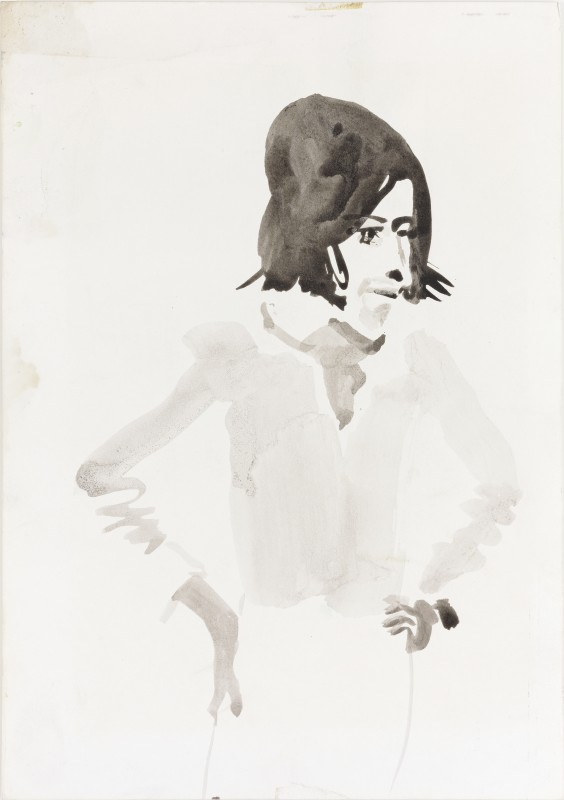 Patrick Procktor RAOssie Clark II, 1967Ink and wash on paper30 x 21 cm%3Cdiv%20class%3D%22artist%22%3E%3Cspan%20class%3D%22artist%22%3E%3Cstrong%3EPatrick%20Procktor%20RA%3C/strong%3E%3C/span%3E%3C/div%3E%0D%3Cdiv%20class%3D%22title%22%3E%3Cem%3EOssie%20Clark%20II%3C/em%3E%2C%201967%3C/div%3E%0D%3Cdiv%20class%3D%22medium%22%3EInk%20and%20wash%20on%20paper%3C/div%3E%0D%3Cdiv%20class%3D%22dimensions%22%3E30%20x%2021%20cm%3C/div%3E
Patrick Procktor RAOssie Clark II, 1967Ink and wash on paper30 x 21 cm%3Cdiv%20class%3D%22artist%22%3E%3Cspan%20class%3D%22artist%22%3E%3Cstrong%3EPatrick%20Procktor%20RA%3C/strong%3E%3C/span%3E%3C/div%3E%0D%3Cdiv%20class%3D%22title%22%3E%3Cem%3EOssie%20Clark%20II%3C/em%3E%2C%201967%3C/div%3E%0D%3Cdiv%20class%3D%22medium%22%3EInk%20and%20wash%20on%20paper%3C/div%3E%0D%3Cdiv%20class%3D%22dimensions%22%3E30%20x%2021%20cm%3C/div%3E -
 Patrick Procktor RAUntitled (tile patterns), 1966Ink and pencil on paper17 x 24 cmSigned and dated lower right%3Cdiv%20class%3D%22artist%22%3E%3Cspan%20class%3D%22artist%22%3E%3Cstrong%3EPatrick%20Procktor%20RA%3C/strong%3E%3C/span%3E%3C/div%3E%0D%3Cdiv%20class%3D%22title%22%3E%3Cem%3EUntitled%20%28tile%20patterns%29%3C/em%3E%2C%201966%3C/div%3E%0D%3Cdiv%20class%3D%22signed_and_dated%22%3ESigned%20and%20dated%20lower%20right%3C/div%3E%0D%3Cdiv%20class%3D%22medium%22%3EInk%20and%20pencil%20on%20paper%3C/div%3E%0D%3Cdiv%20class%3D%22dimensions%22%3E17%20x%2024%20cm%3C/div%3E
Patrick Procktor RAUntitled (tile patterns), 1966Ink and pencil on paper17 x 24 cmSigned and dated lower right%3Cdiv%20class%3D%22artist%22%3E%3Cspan%20class%3D%22artist%22%3E%3Cstrong%3EPatrick%20Procktor%20RA%3C/strong%3E%3C/span%3E%3C/div%3E%0D%3Cdiv%20class%3D%22title%22%3E%3Cem%3EUntitled%20%28tile%20patterns%29%3C/em%3E%2C%201966%3C/div%3E%0D%3Cdiv%20class%3D%22signed_and_dated%22%3ESigned%20and%20dated%20lower%20right%3C/div%3E%0D%3Cdiv%20class%3D%22medium%22%3EInk%20and%20pencil%20on%20paper%3C/div%3E%0D%3Cdiv%20class%3D%22dimensions%22%3E17%20x%2024%20cm%3C/div%3E -
 Patrick Procktor RAFigure studies, 1965Mixed media on paper23 x 16 cmSigned and dated lower right%3Cdiv%20class%3D%22artist%22%3E%3Cspan%20class%3D%22artist%22%3E%3Cstrong%3EPatrick%20Procktor%20RA%3C/strong%3E%3C/span%3E%3C/div%3E%0D%3Cdiv%20class%3D%22title%22%3E%3Cem%3EFigure%20studies%3C/em%3E%2C%201965%3C/div%3E%0D%3Cdiv%20class%3D%22signed_and_dated%22%3ESigned%20and%20dated%20lower%20right%3C/div%3E%0D%3Cdiv%20class%3D%22medium%22%3EMixed%20media%20on%20paper%3C/div%3E%0D%3Cdiv%20class%3D%22dimensions%22%3E23%20x%2016%20cm%3C/div%3E
Patrick Procktor RAFigure studies, 1965Mixed media on paper23 x 16 cmSigned and dated lower right%3Cdiv%20class%3D%22artist%22%3E%3Cspan%20class%3D%22artist%22%3E%3Cstrong%3EPatrick%20Procktor%20RA%3C/strong%3E%3C/span%3E%3C/div%3E%0D%3Cdiv%20class%3D%22title%22%3E%3Cem%3EFigure%20studies%3C/em%3E%2C%201965%3C/div%3E%0D%3Cdiv%20class%3D%22signed_and_dated%22%3ESigned%20and%20dated%20lower%20right%3C/div%3E%0D%3Cdiv%20class%3D%22medium%22%3EMixed%20media%20on%20paper%3C/div%3E%0D%3Cdiv%20class%3D%22dimensions%22%3E23%20x%2016%20cm%3C/div%3E -
 Patrick Procktor RALunacharsky Street, 1965Oil on canvas152 x 114 cm%3Cdiv%20class%3D%22artist%22%3E%3Cspan%20class%3D%22artist%22%3E%3Cstrong%3EPatrick%20Procktor%20RA%3C/strong%3E%3C/span%3E%3C/div%3E%0D%3Cdiv%20class%3D%22title%22%3E%3Cem%3ELunacharsky%20Street%3C/em%3E%2C%201965%3C/div%3E%0D%3Cdiv%20class%3D%22medium%22%3EOil%20on%20canvas%3C/div%3E%0D%3Cdiv%20class%3D%22dimensions%22%3E152%20x%20114%20cm%3C/div%3E
Patrick Procktor RALunacharsky Street, 1965Oil on canvas152 x 114 cm%3Cdiv%20class%3D%22artist%22%3E%3Cspan%20class%3D%22artist%22%3E%3Cstrong%3EPatrick%20Procktor%20RA%3C/strong%3E%3C/span%3E%3C/div%3E%0D%3Cdiv%20class%3D%22title%22%3E%3Cem%3ELunacharsky%20Street%3C/em%3E%2C%201965%3C/div%3E%0D%3Cdiv%20class%3D%22medium%22%3EOil%20on%20canvas%3C/div%3E%0D%3Cdiv%20class%3D%22dimensions%22%3E152%20x%20114%20cm%3C/div%3E -
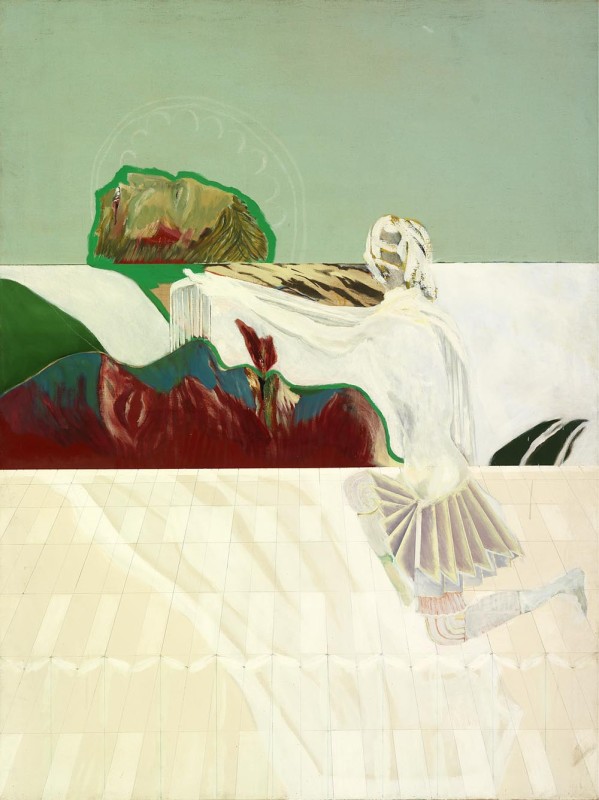 Patrick Procktor RAHead of John the Baptist brought to Herod, 1964Oil on canvas152 x 114 cmSigned and dated verso%3Cdiv%20class%3D%22artist%22%3E%3Cspan%20class%3D%22artist%22%3E%3Cstrong%3EPatrick%20Procktor%20RA%3C/strong%3E%3C/span%3E%3C/div%3E%0D%3Cdiv%20class%3D%22title%22%3E%3Cem%3EHead%20of%20John%20the%20Baptist%20brought%20to%20Herod%3C/em%3E%2C%201964%3C/div%3E%0D%3Cdiv%20class%3D%22signed_and_dated%22%3ESigned%20and%20dated%20verso%3C/div%3E%0D%3Cdiv%20class%3D%22medium%22%3EOil%20on%20canvas%3C/div%3E%0D%3Cdiv%20class%3D%22dimensions%22%3E152%20x%20114%20cm%3C/div%3E
Patrick Procktor RAHead of John the Baptist brought to Herod, 1964Oil on canvas152 x 114 cmSigned and dated verso%3Cdiv%20class%3D%22artist%22%3E%3Cspan%20class%3D%22artist%22%3E%3Cstrong%3EPatrick%20Procktor%20RA%3C/strong%3E%3C/span%3E%3C/div%3E%0D%3Cdiv%20class%3D%22title%22%3E%3Cem%3EHead%20of%20John%20the%20Baptist%20brought%20to%20Herod%3C/em%3E%2C%201964%3C/div%3E%0D%3Cdiv%20class%3D%22signed_and_dated%22%3ESigned%20and%20dated%20verso%3C/div%3E%0D%3Cdiv%20class%3D%22medium%22%3EOil%20on%20canvas%3C/div%3E%0D%3Cdiv%20class%3D%22dimensions%22%3E152%20x%20114%20cm%3C/div%3E -
 Patrick Procktor RASt John on Patmos (after Velázquez), 1964Oil on canvas91.3 x 63.3 cm%3Cdiv%20class%3D%22artist%22%3E%3Cspan%20class%3D%22artist%22%3E%3Cstrong%3EPatrick%20Procktor%20RA%20%3C%2Fstrong%3E%3C%2Fspan%3E%3C%2Fdiv%3E%0D%3Cdiv%20class%3D%22title%22%3E%3Cem%3ESt%20John%20on%20Patmos%20%28after%20Vel%C3%A1zquez%29%3C%2Fem%3E%2C%201964%3C%2Fdiv%3E%0D%3Cdiv%20class%3D%22medium%22%3EOil%20on%20canvas%3C%2Fdiv%3E%0D%3Cdiv%20class%3D%22dimensions%22%3E91.3%20x%2063.3%20cm%3C%2Fdiv%3E
Patrick Procktor RASt John on Patmos (after Velázquez), 1964Oil on canvas91.3 x 63.3 cm%3Cdiv%20class%3D%22artist%22%3E%3Cspan%20class%3D%22artist%22%3E%3Cstrong%3EPatrick%20Procktor%20RA%20%3C%2Fstrong%3E%3C%2Fspan%3E%3C%2Fdiv%3E%0D%3Cdiv%20class%3D%22title%22%3E%3Cem%3ESt%20John%20on%20Patmos%20%28after%20Vel%C3%A1zquez%29%3C%2Fem%3E%2C%201964%3C%2Fdiv%3E%0D%3Cdiv%20class%3D%22medium%22%3EOil%20on%20canvas%3C%2Fdiv%3E%0D%3Cdiv%20class%3D%22dimensions%22%3E91.3%20x%2063.3%20cm%3C%2Fdiv%3E -
 Patrick Procktor RAThe Black Set, 1964Oil and collage on canvases190 x 245 cm%3Cdiv%20class%3D%22artist%22%3E%3Cspan%20class%3D%22artist%22%3E%3Cstrong%3EPatrick%20Procktor%20RA%3C/strong%3E%3C/span%3E%3C/div%3E%0D%3Cdiv%20class%3D%22title%22%3E%3Cem%3EThe%20Black%20Set%3C/em%3E%2C%201964%3C/div%3E%0D%3Cdiv%20class%3D%22medium%22%3EOil%20and%20collage%20on%20canvases%3C/div%3E%0D%3Cdiv%20class%3D%22dimensions%22%3E190%20x%20245%20cm%3C/div%3E
Patrick Procktor RAThe Black Set, 1964Oil and collage on canvases190 x 245 cm%3Cdiv%20class%3D%22artist%22%3E%3Cspan%20class%3D%22artist%22%3E%3Cstrong%3EPatrick%20Procktor%20RA%3C/strong%3E%3C/span%3E%3C/div%3E%0D%3Cdiv%20class%3D%22title%22%3E%3Cem%3EThe%20Black%20Set%3C/em%3E%2C%201964%3C/div%3E%0D%3Cdiv%20class%3D%22medium%22%3EOil%20and%20collage%20on%20canvases%3C/div%3E%0D%3Cdiv%20class%3D%22dimensions%22%3E190%20x%20245%20cm%3C/div%3E -
 Patrick Procktor RAMichael Upton Swimming Underwater, 1962Watercolour on paper21 x 12 cm (each sheet)%3Cdiv%20class%3D%22artist%22%3E%3Cspan%20class%3D%22artist%22%3E%3Cstrong%3EPatrick%20Procktor%20RA%3C/strong%3E%3C/span%3E%3C/div%3E%0D%3Cdiv%20class%3D%22title%22%3E%3Cem%3EMichael%20Upton%20Swimming%20Underwater%3C/em%3E%2C%201962%3C/div%3E%0D%3Cdiv%20class%3D%22medium%22%3EWatercolour%20on%20paper%3C/div%3E%0D%3Cdiv%20class%3D%22dimensions%22%3E21%20x%2012%20cm%20%28each%20sheet%29%3C/div%3E
Patrick Procktor RAMichael Upton Swimming Underwater, 1962Watercolour on paper21 x 12 cm (each sheet)%3Cdiv%20class%3D%22artist%22%3E%3Cspan%20class%3D%22artist%22%3E%3Cstrong%3EPatrick%20Procktor%20RA%3C/strong%3E%3C/span%3E%3C/div%3E%0D%3Cdiv%20class%3D%22title%22%3E%3Cem%3EMichael%20Upton%20Swimming%20Underwater%3C/em%3E%2C%201962%3C/div%3E%0D%3Cdiv%20class%3D%22medium%22%3EWatercolour%20on%20paper%3C/div%3E%0D%3Cdiv%20class%3D%22dimensions%22%3E21%20x%2012%20cm%20%28each%20sheet%29%3C/div%3E

